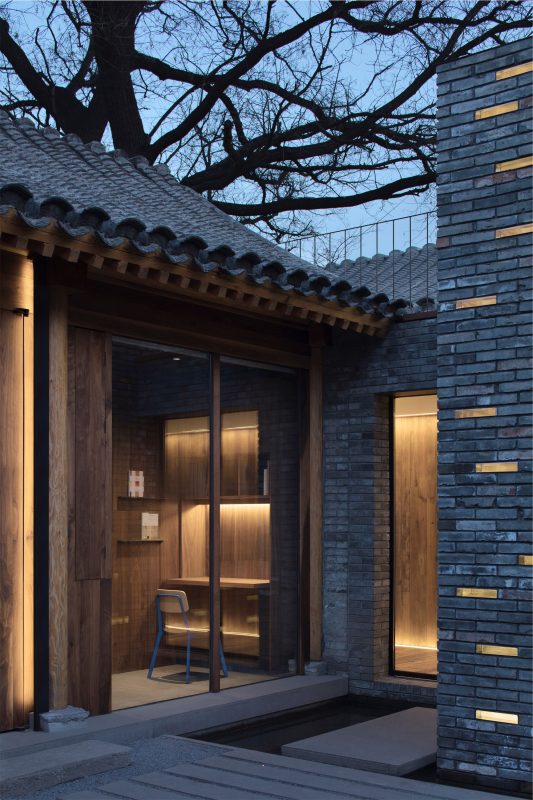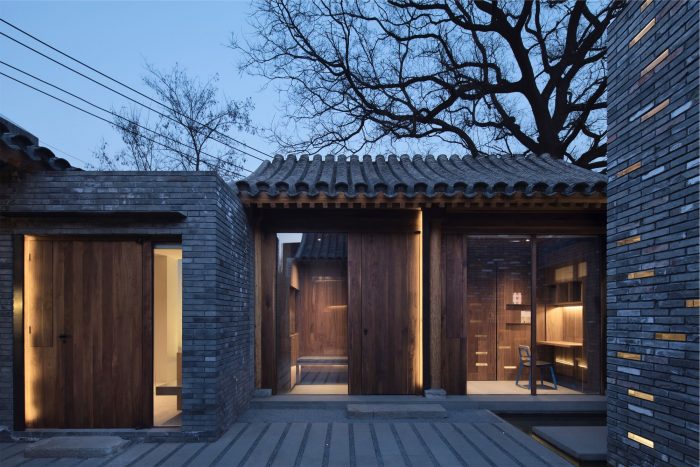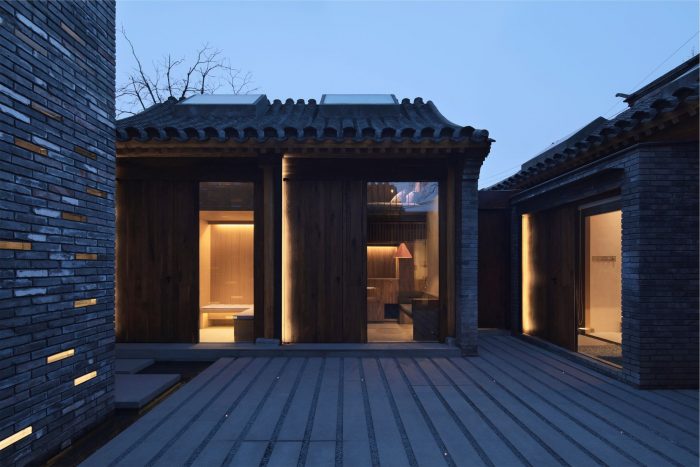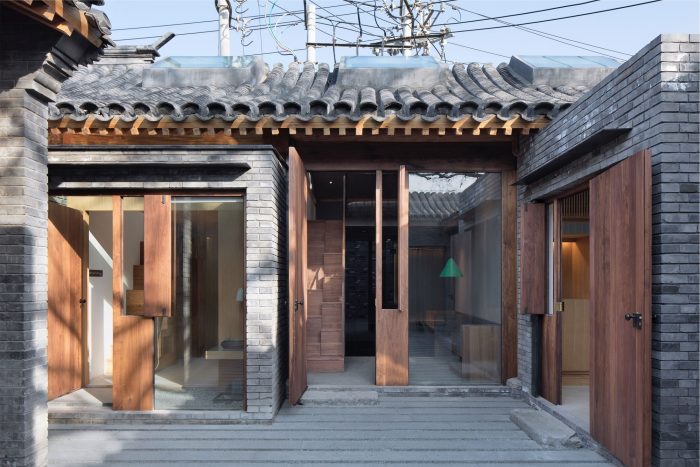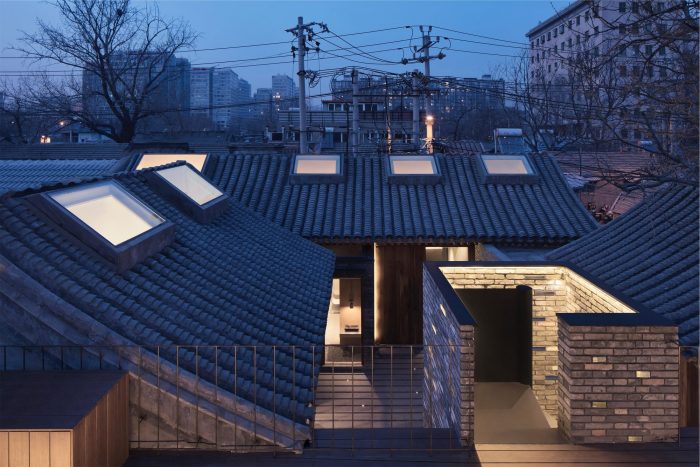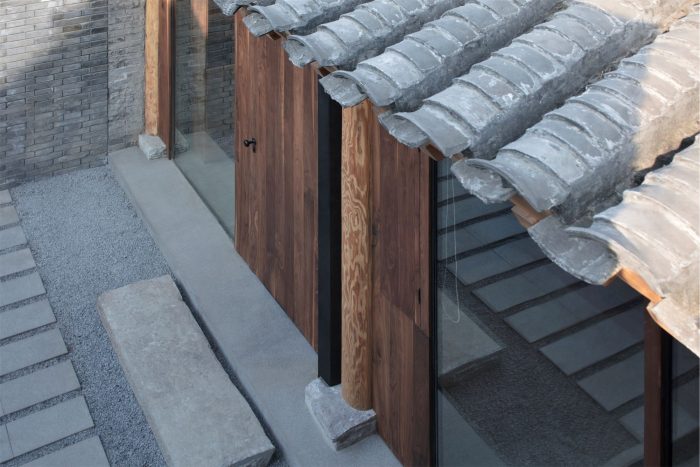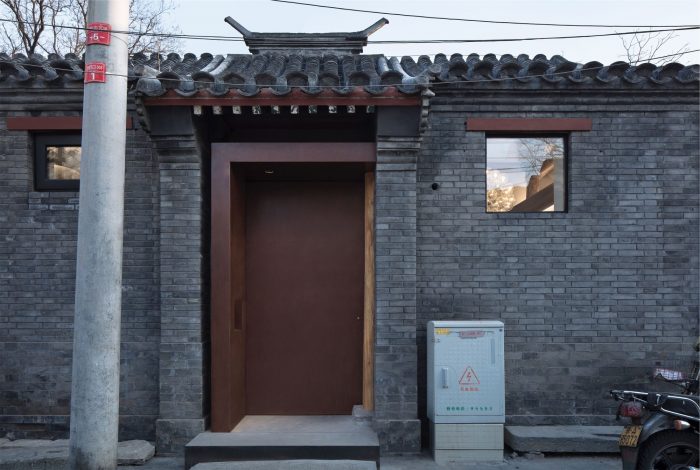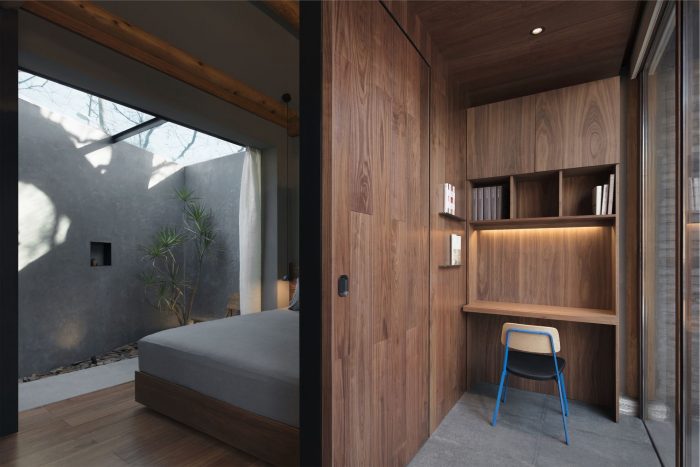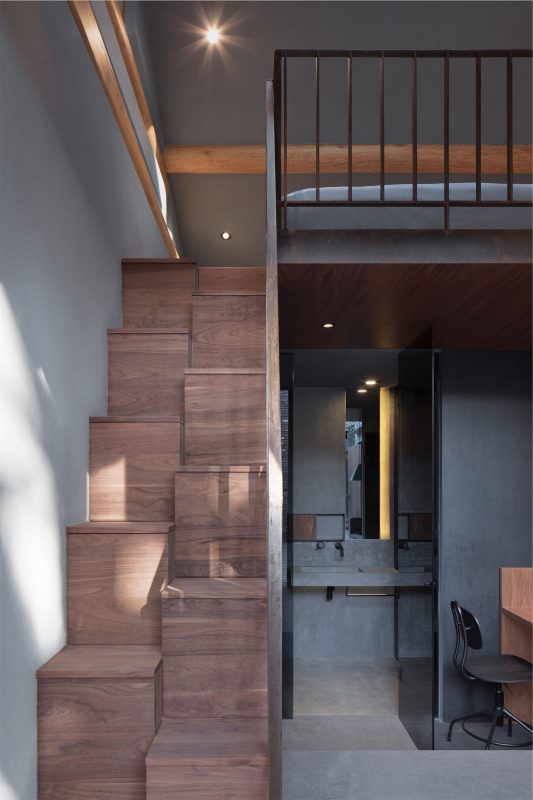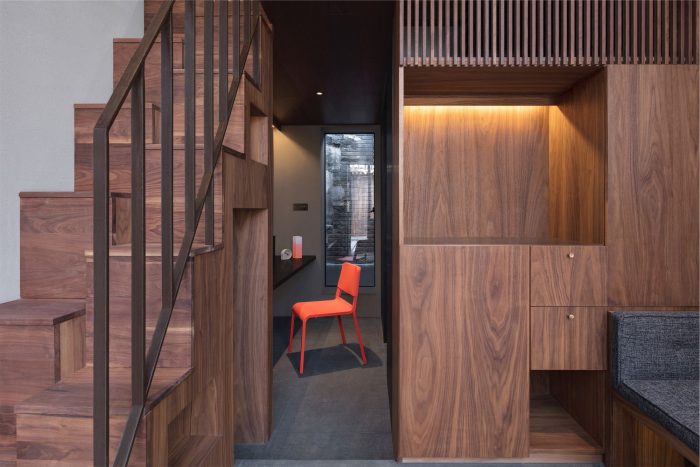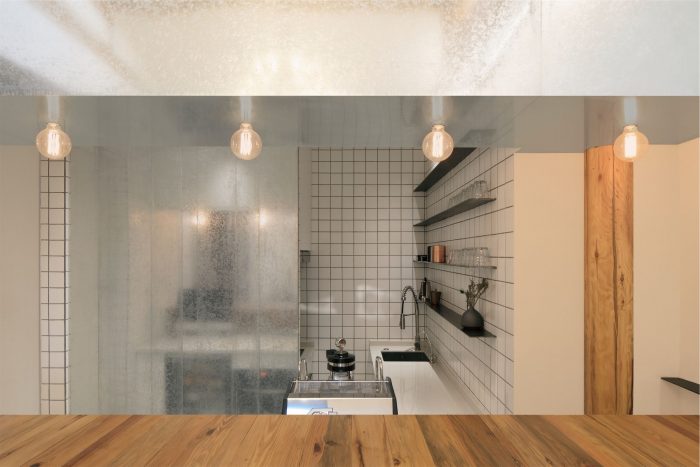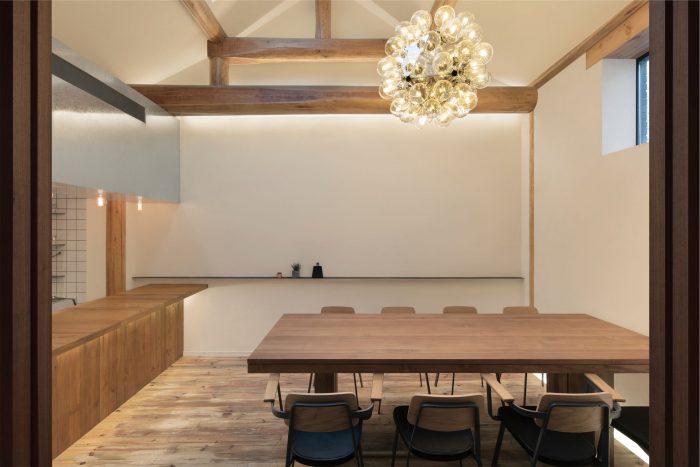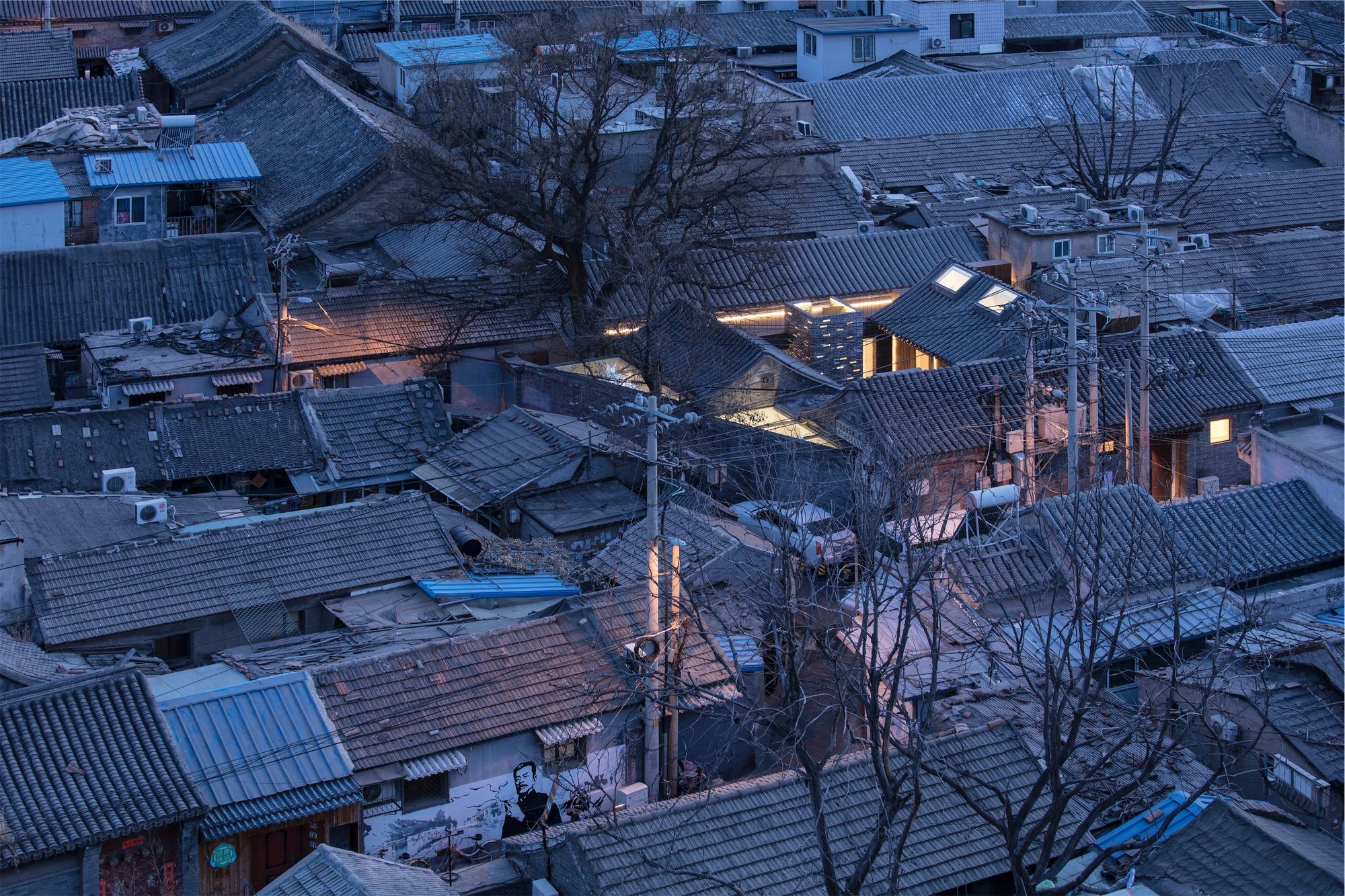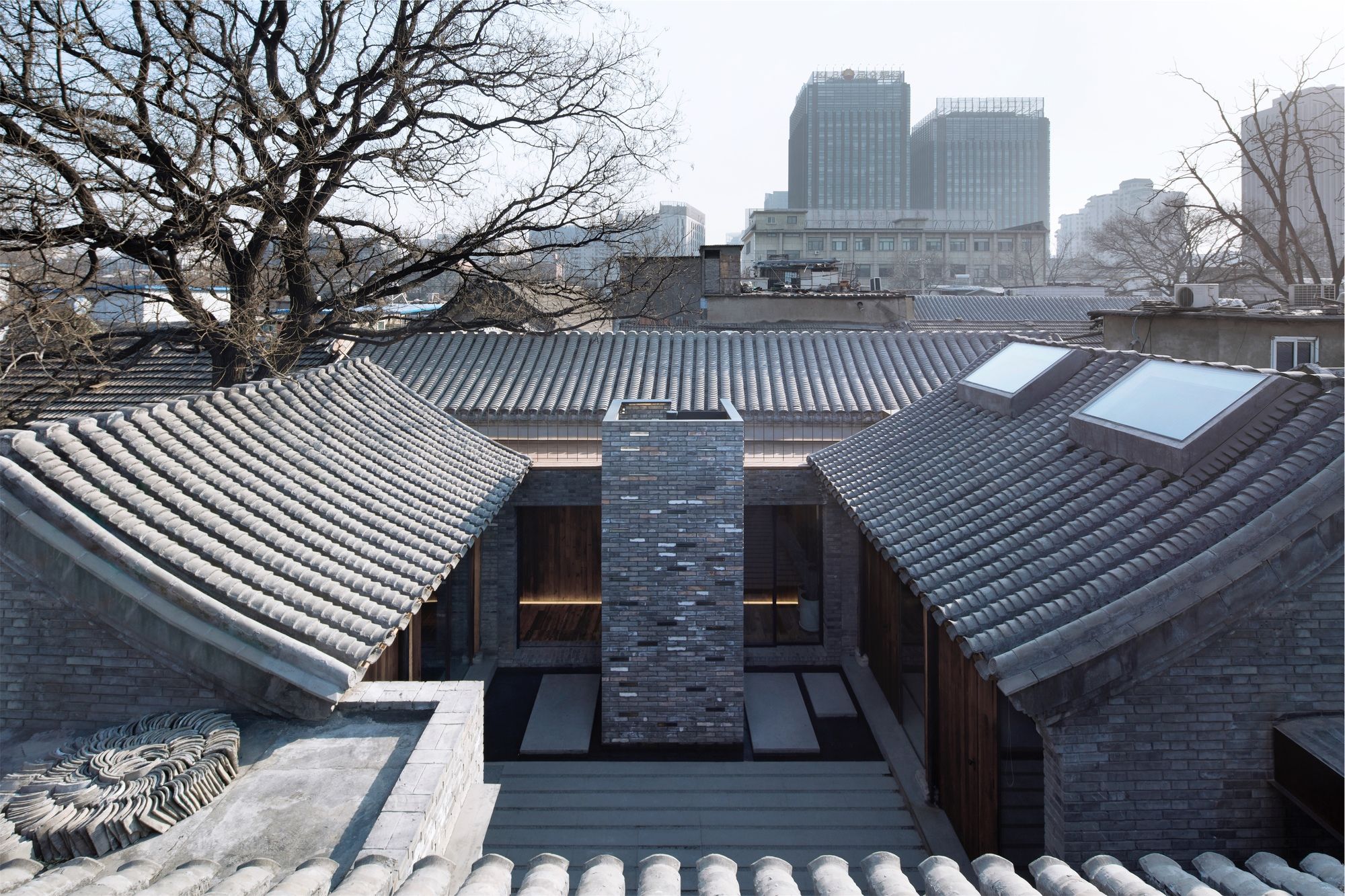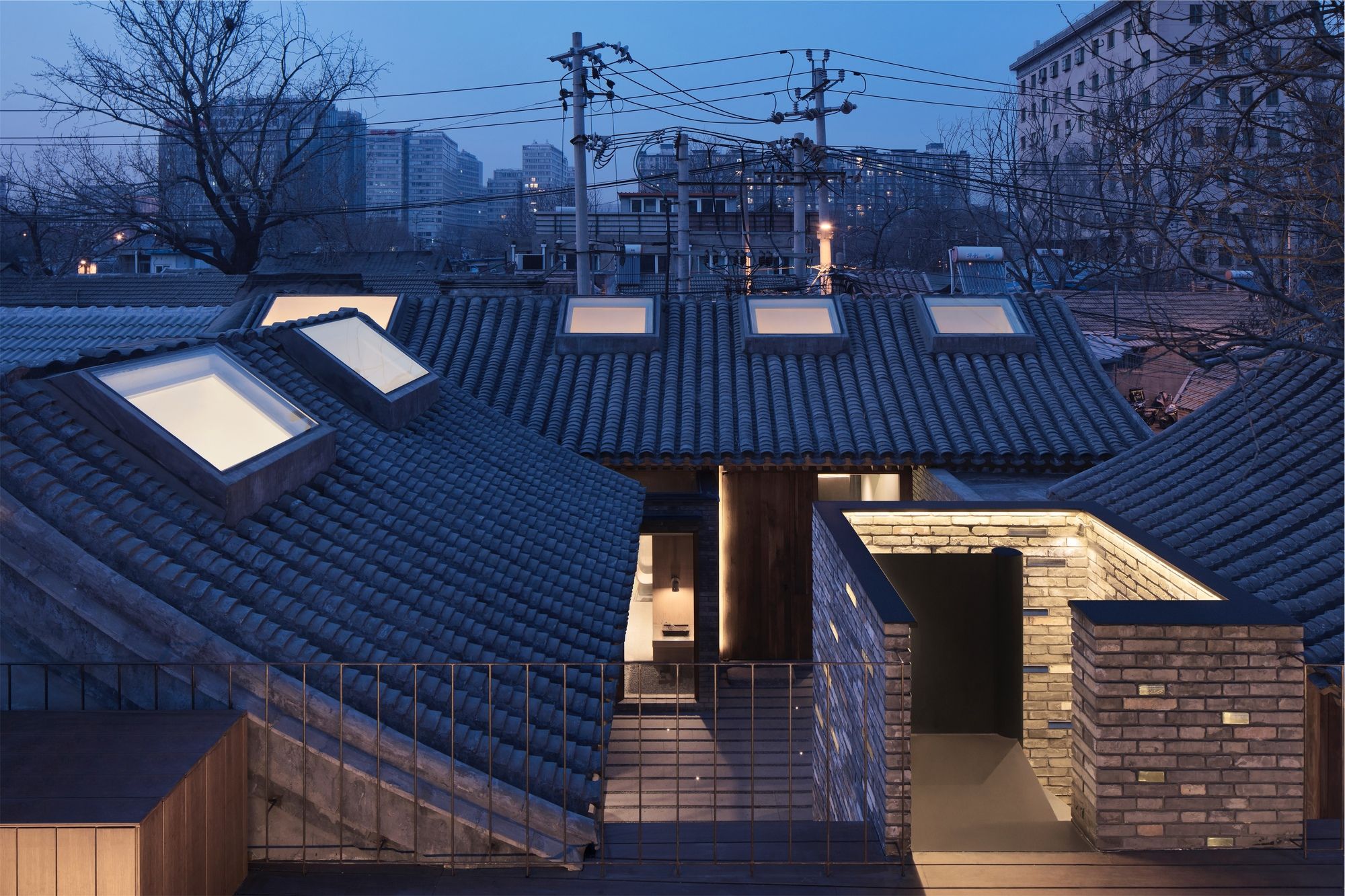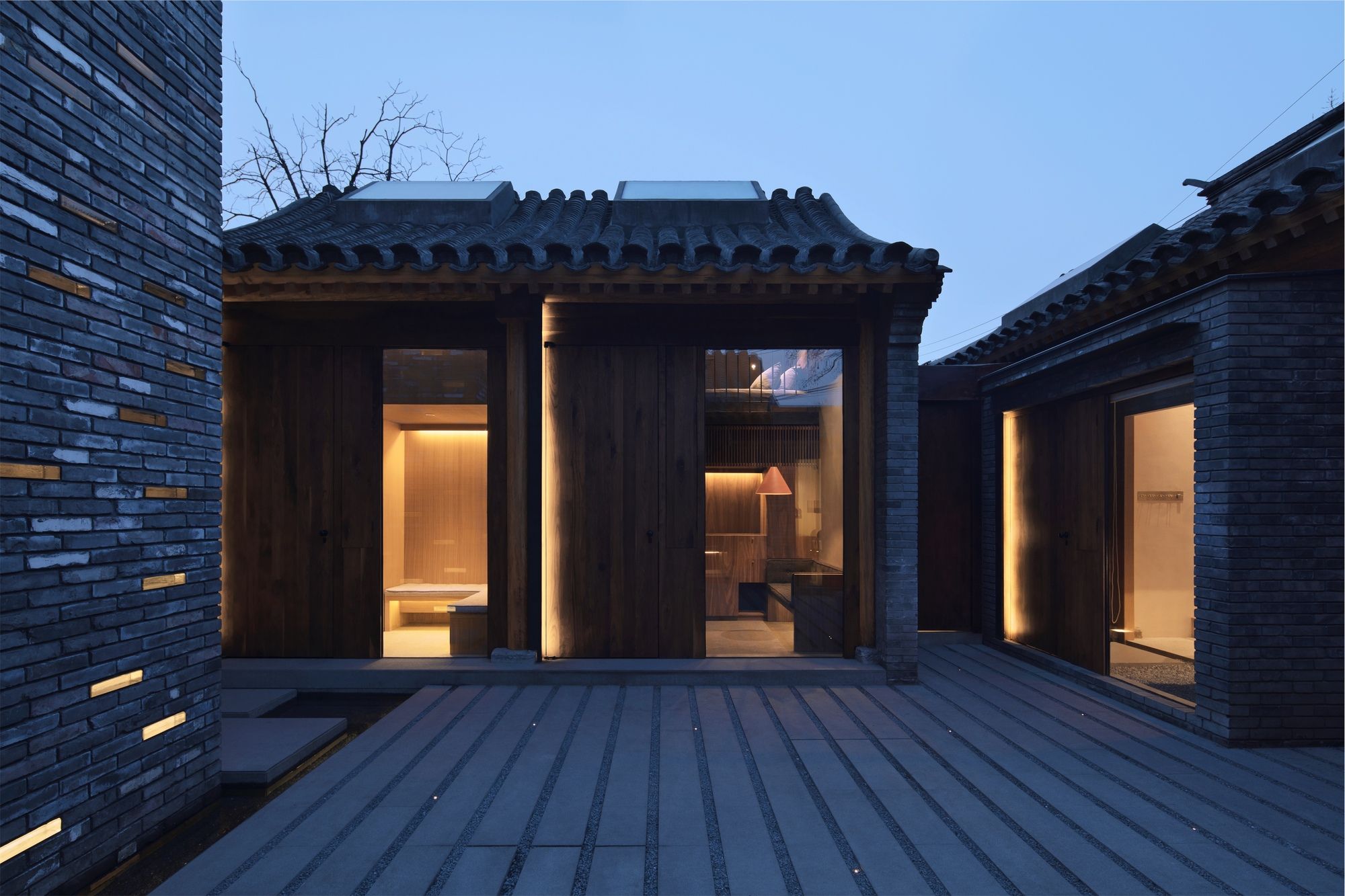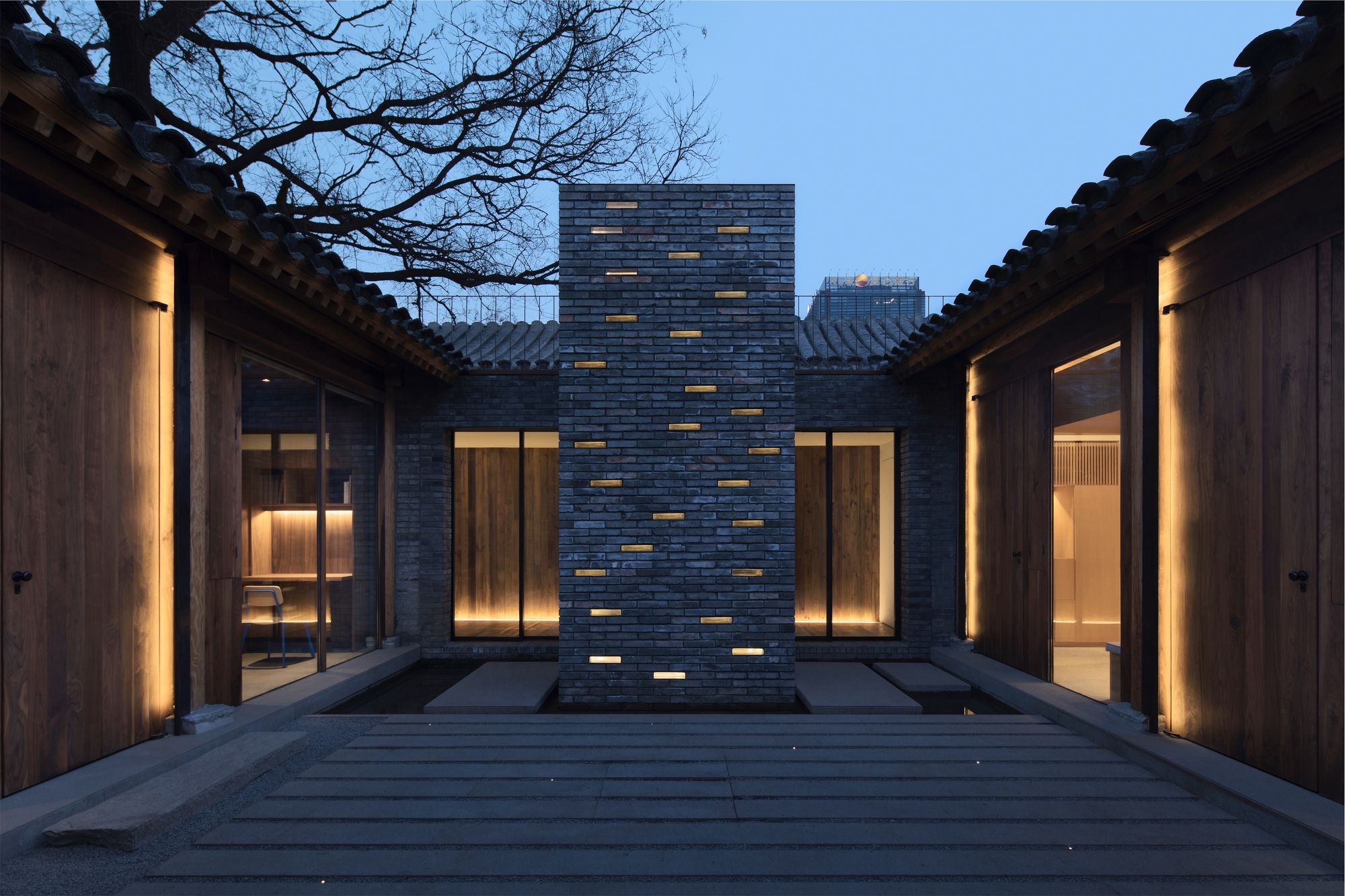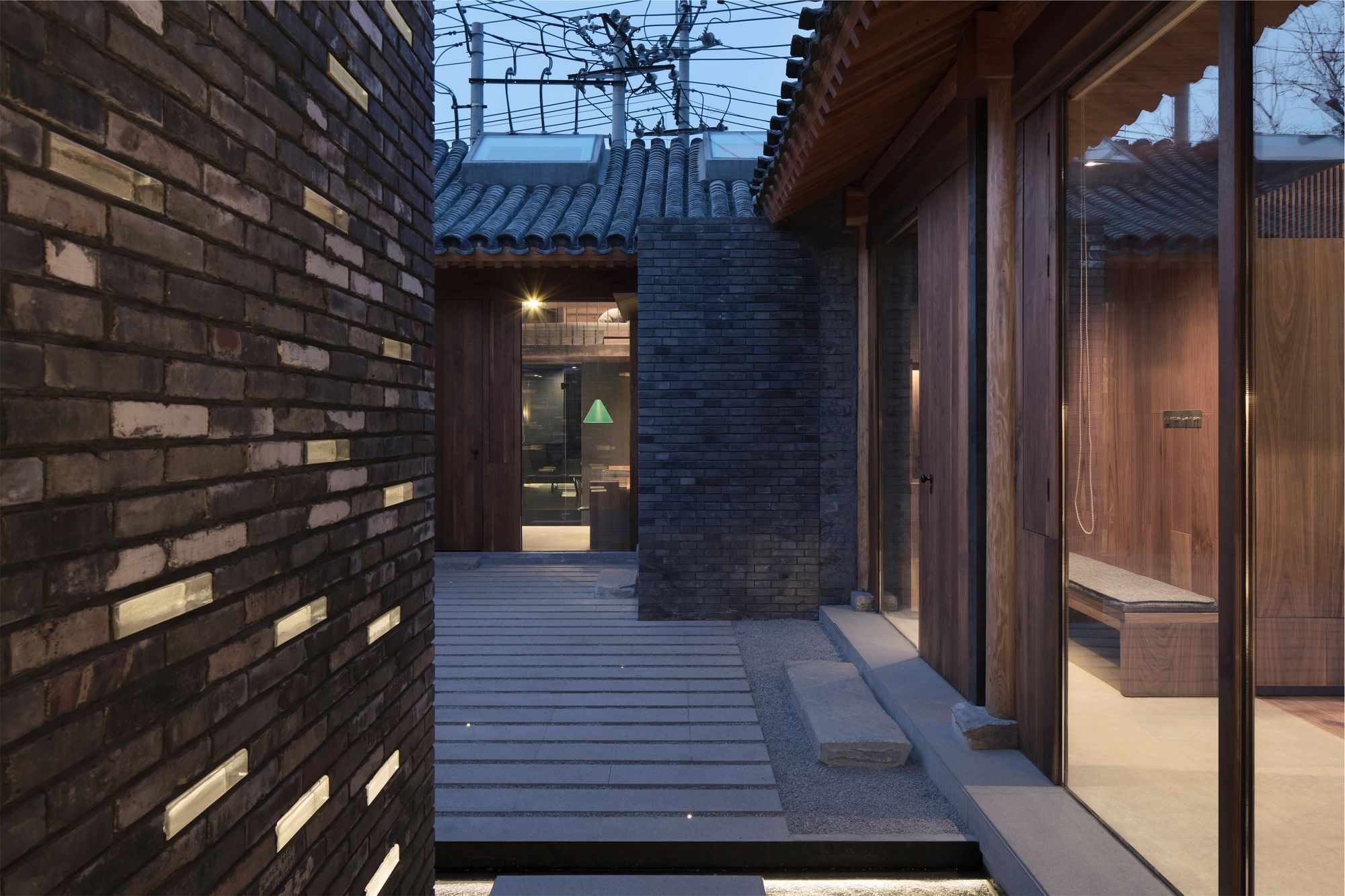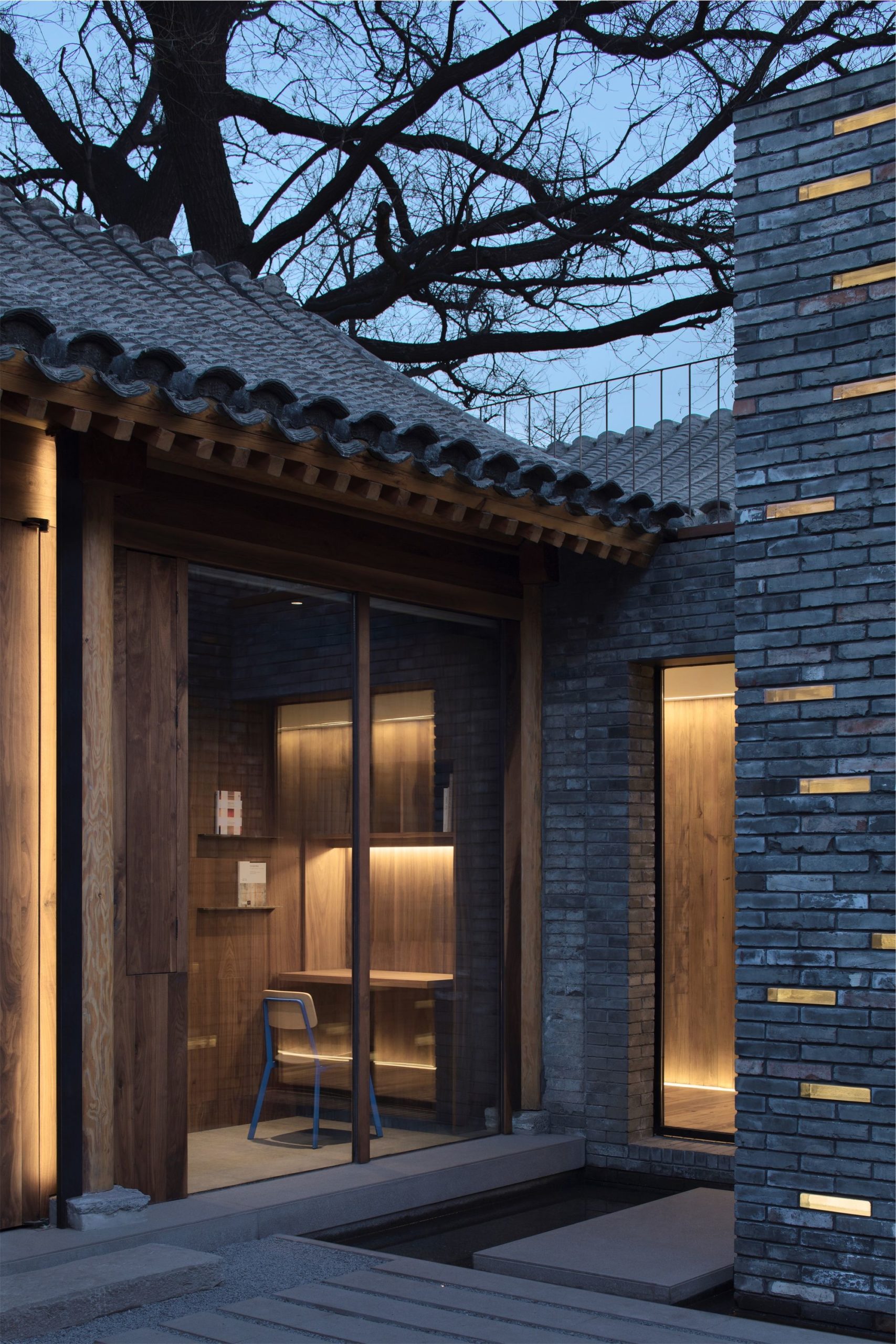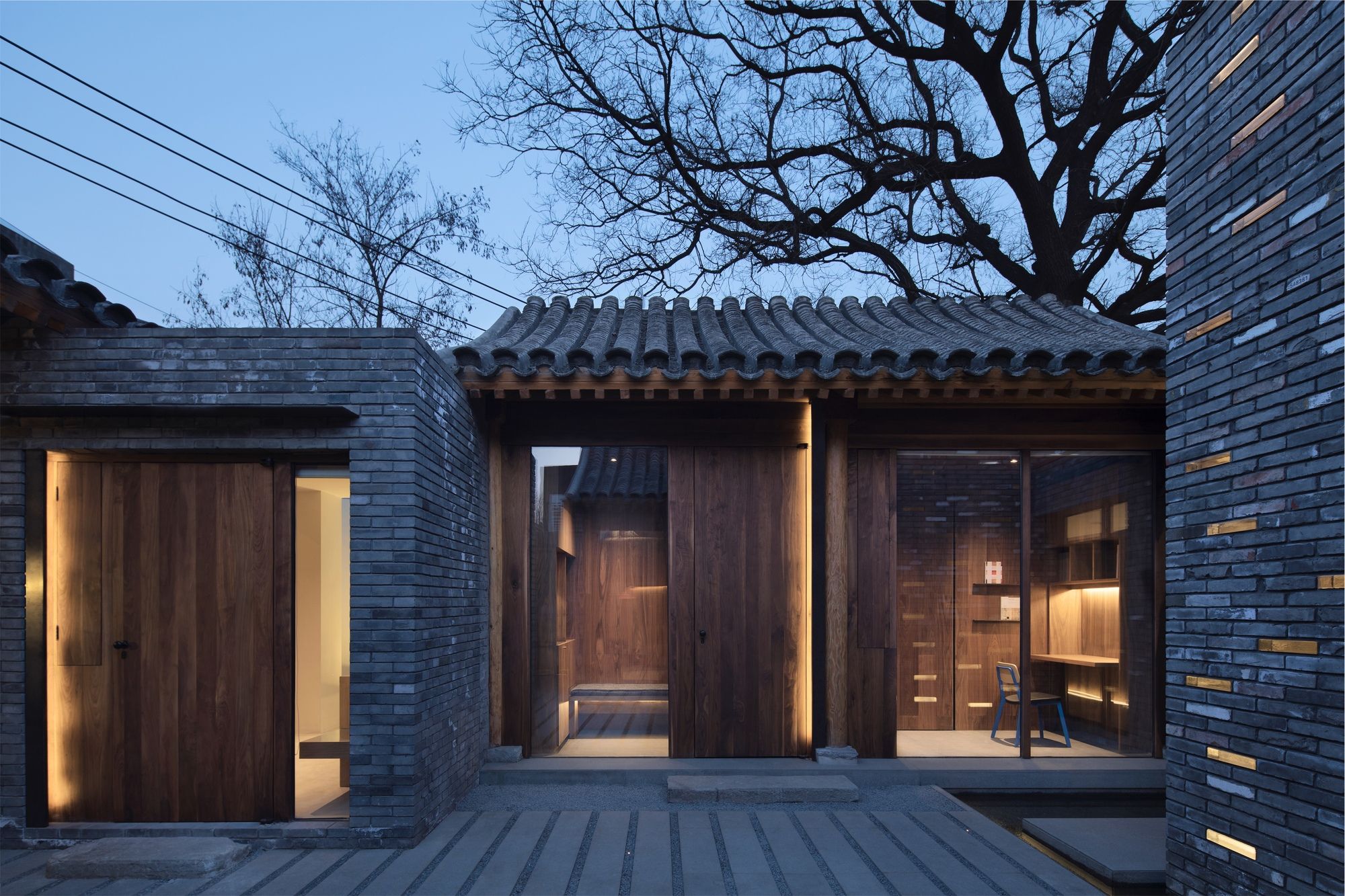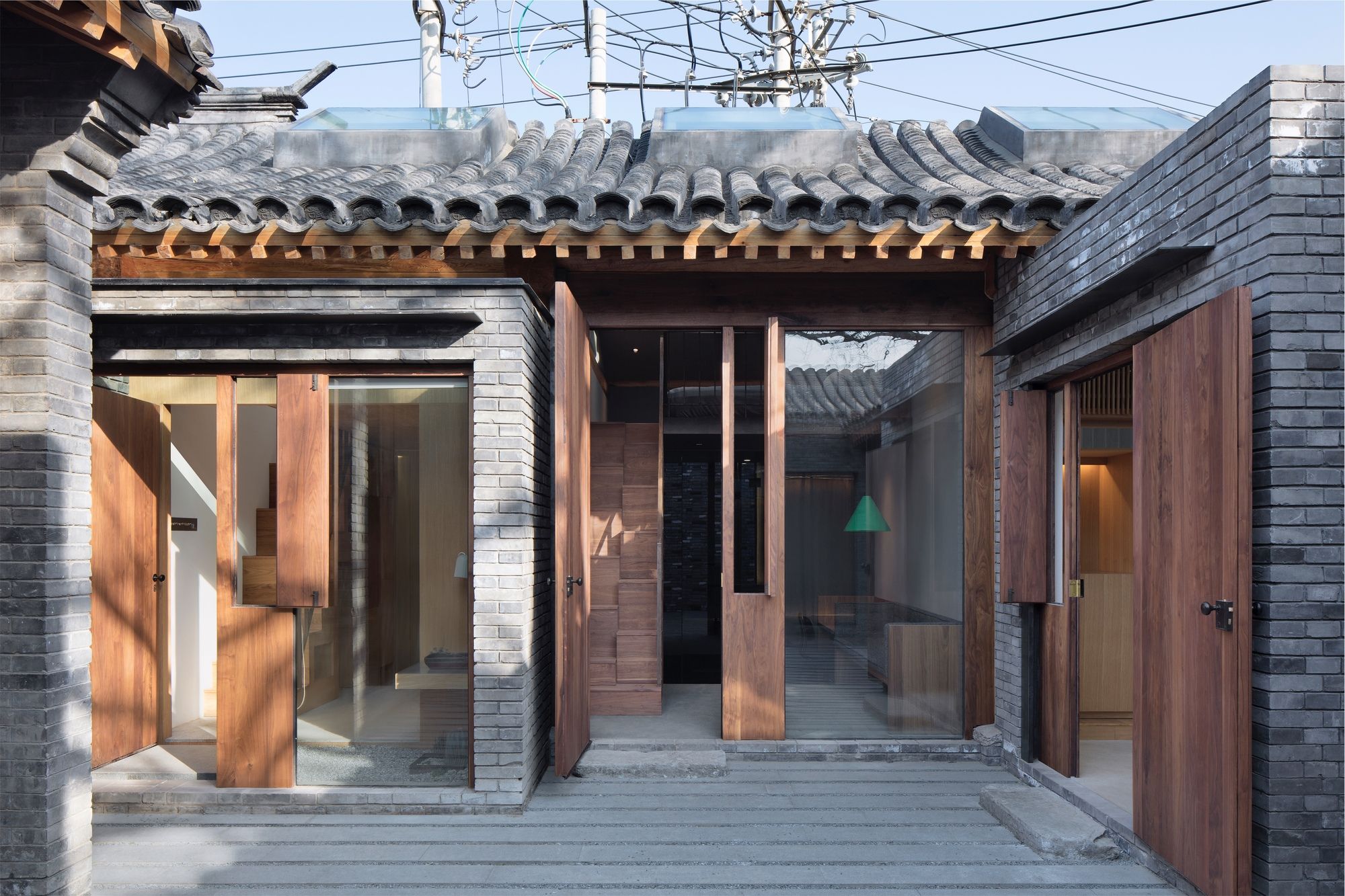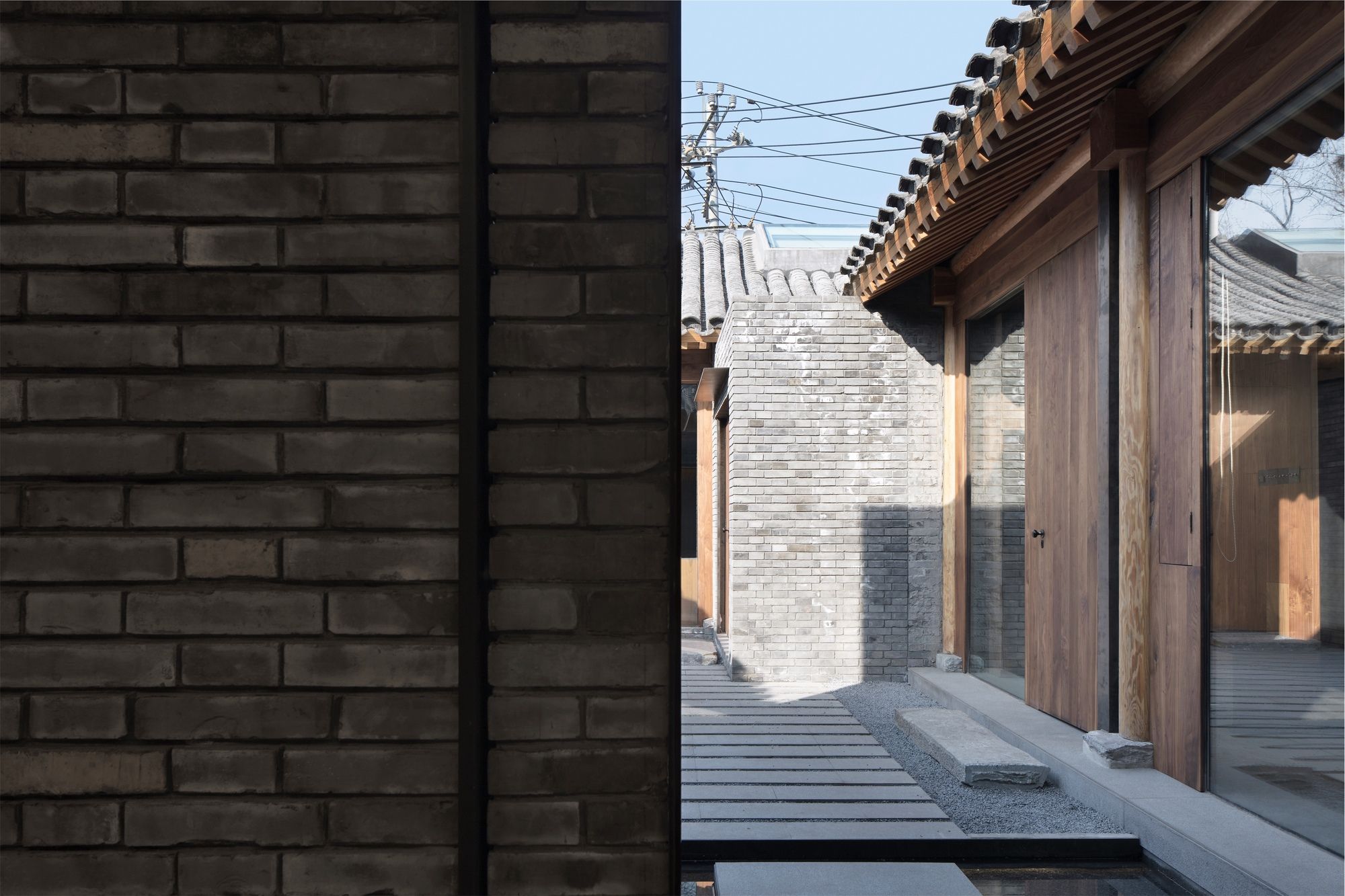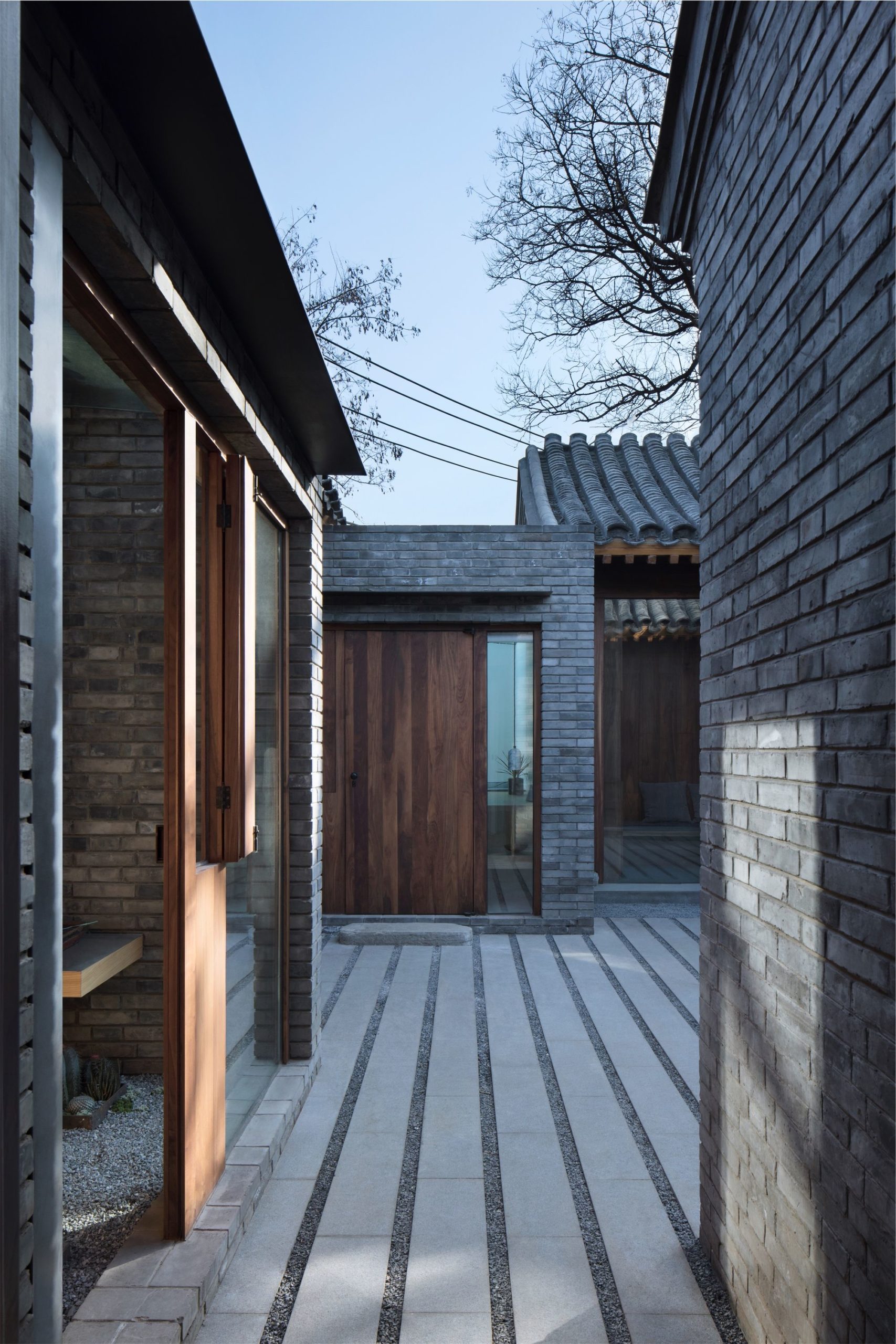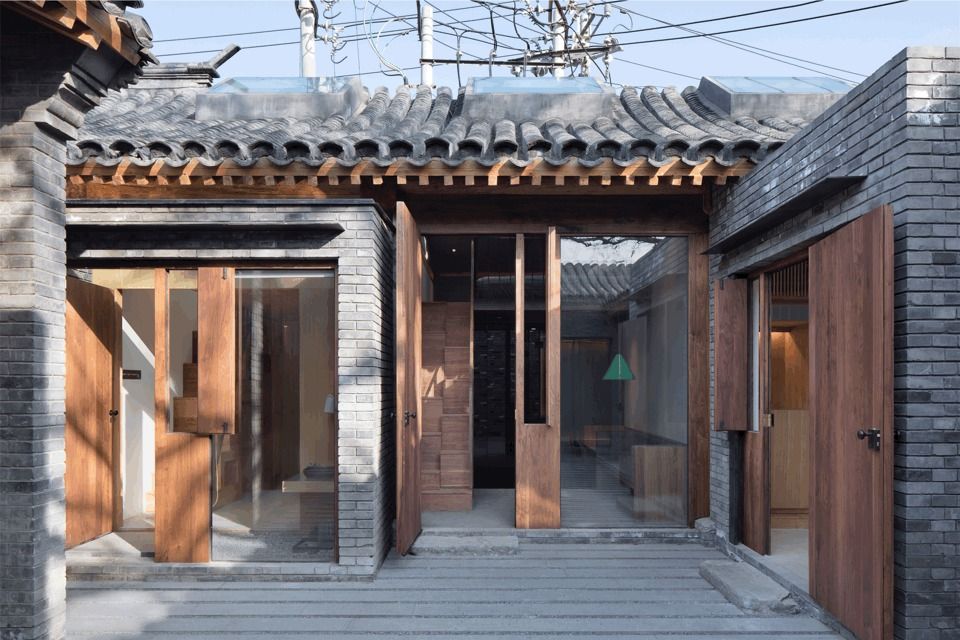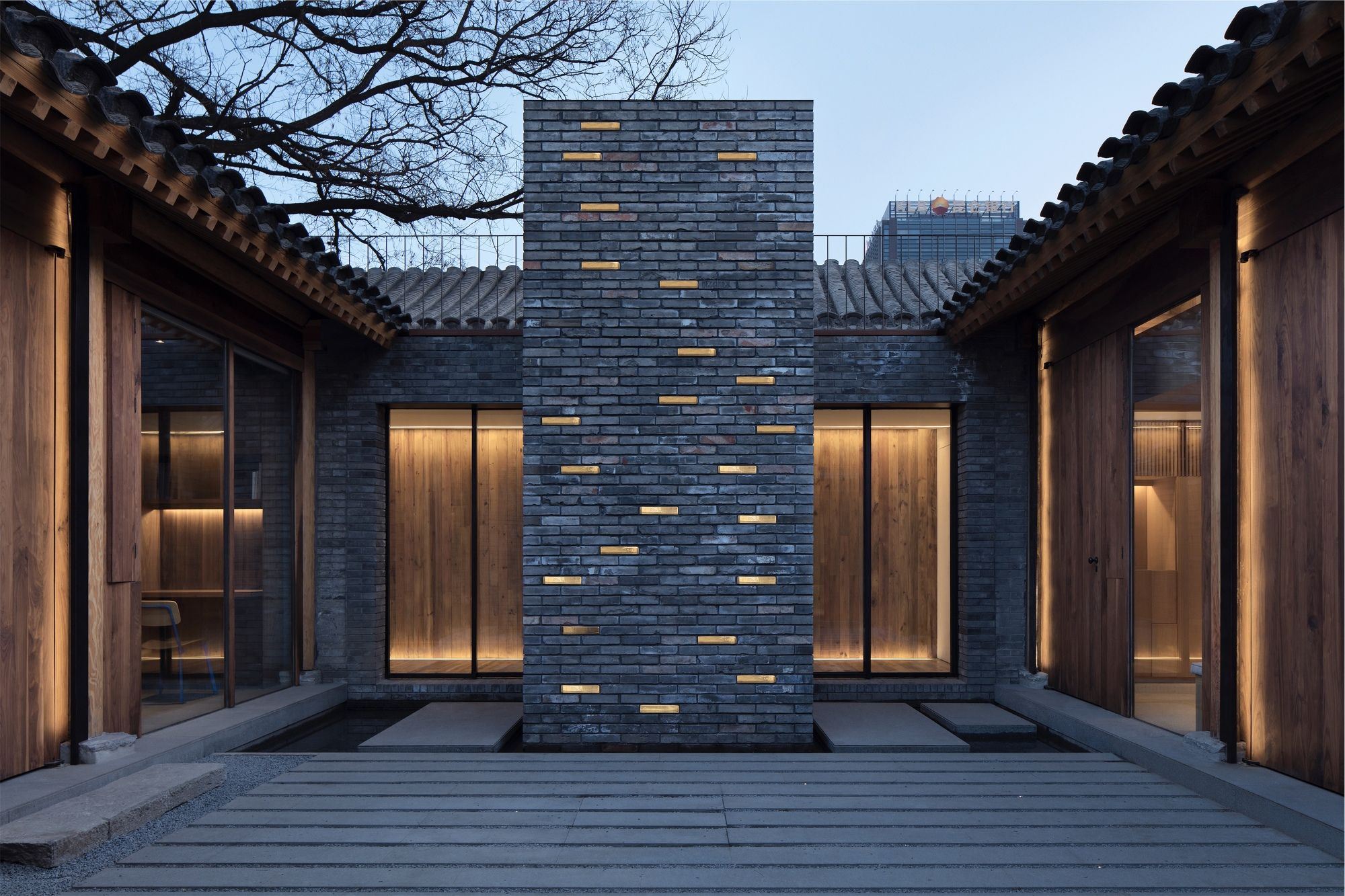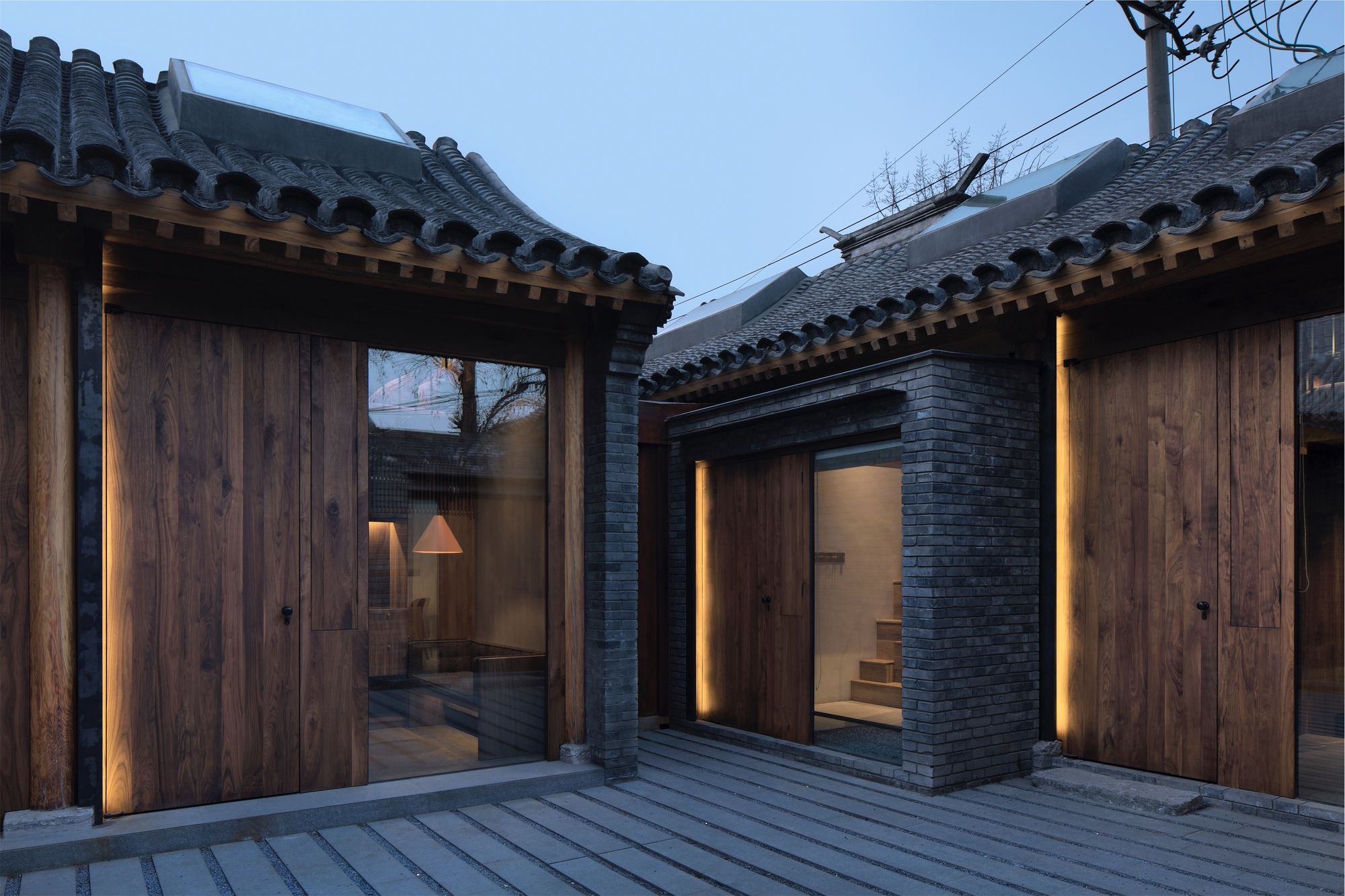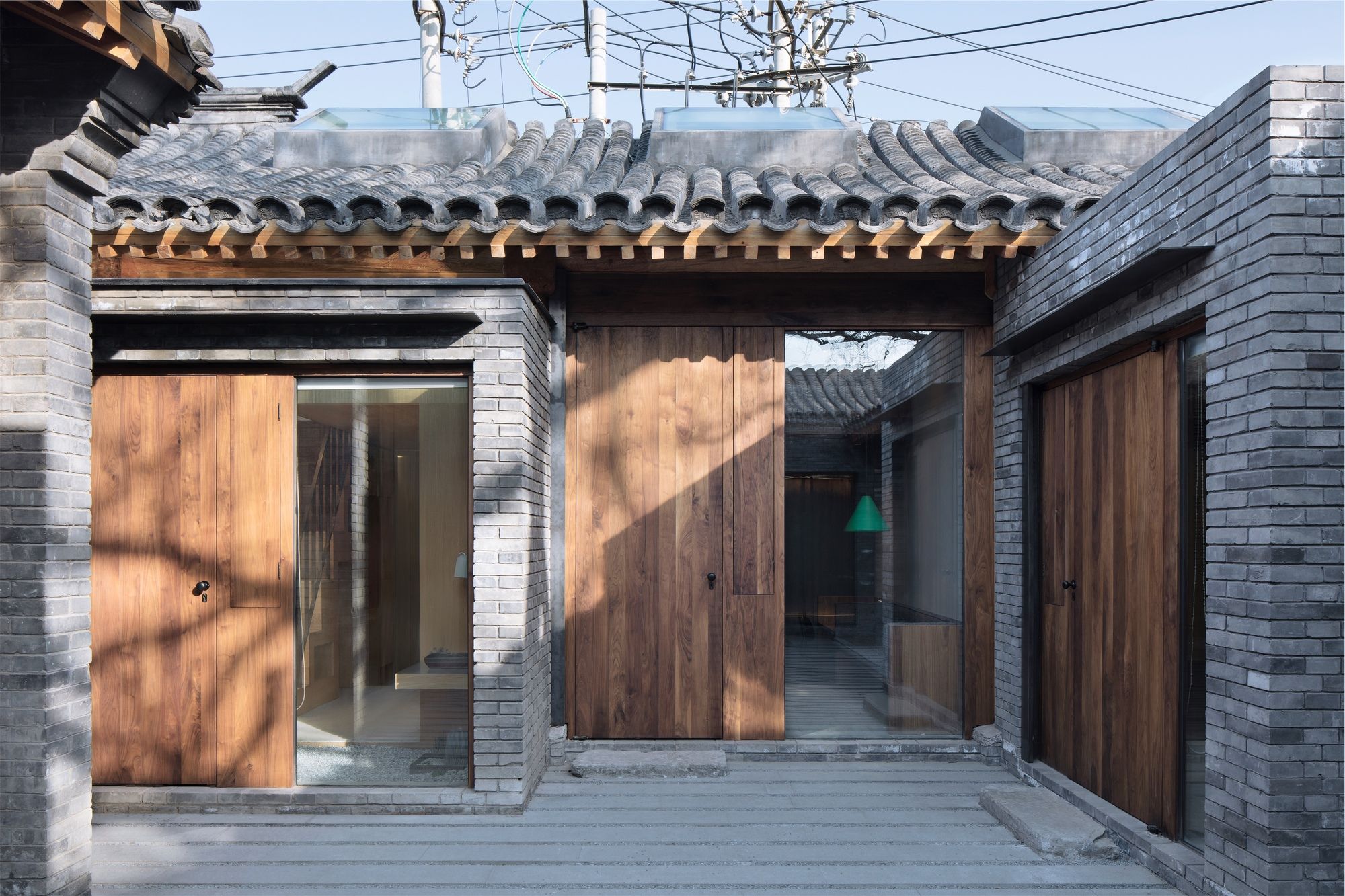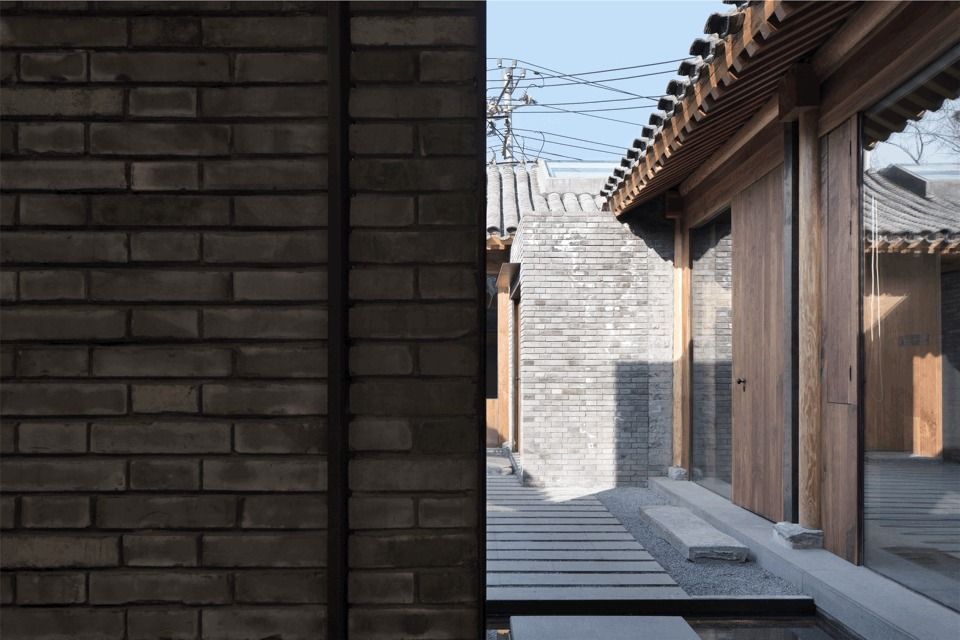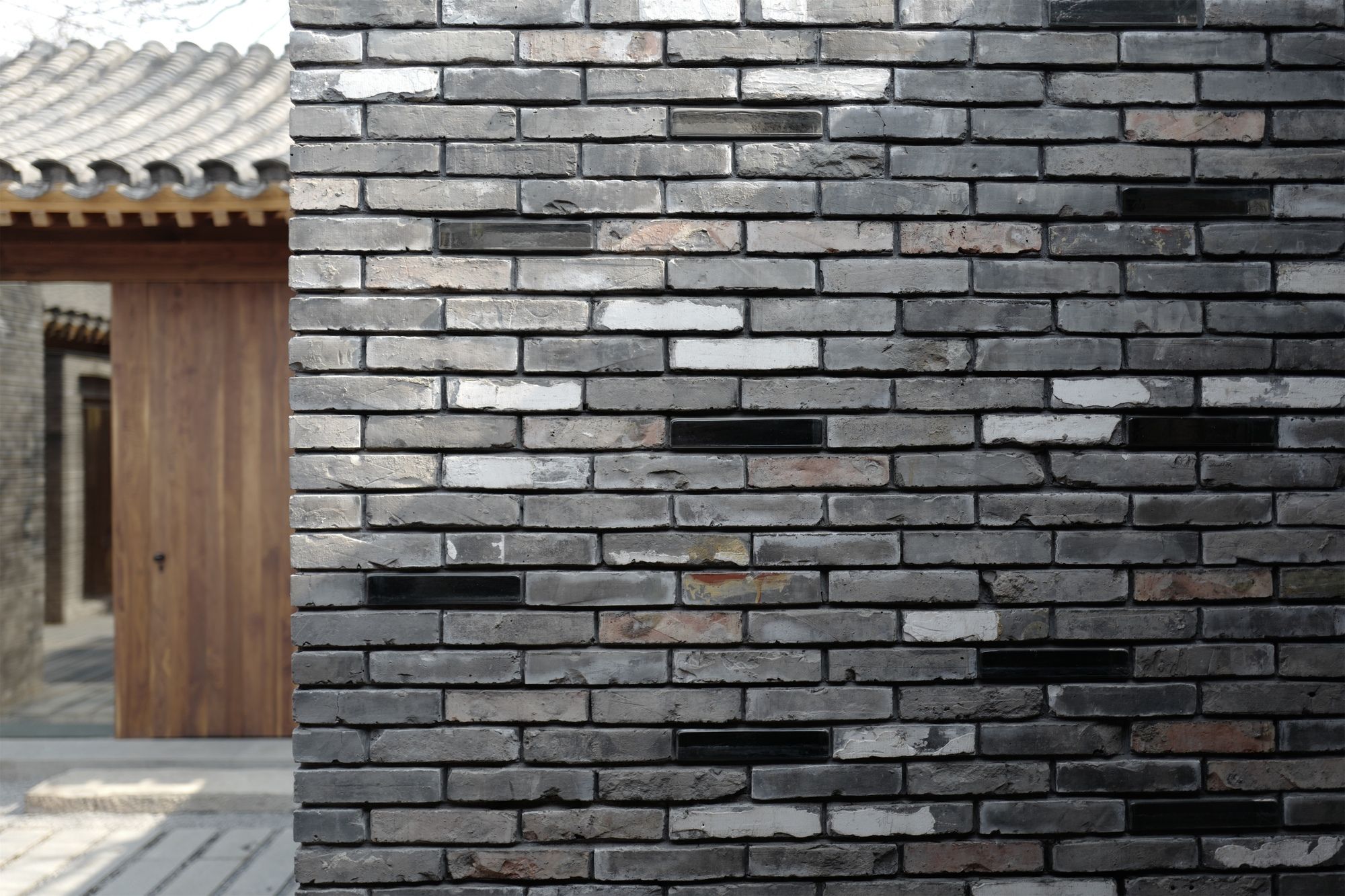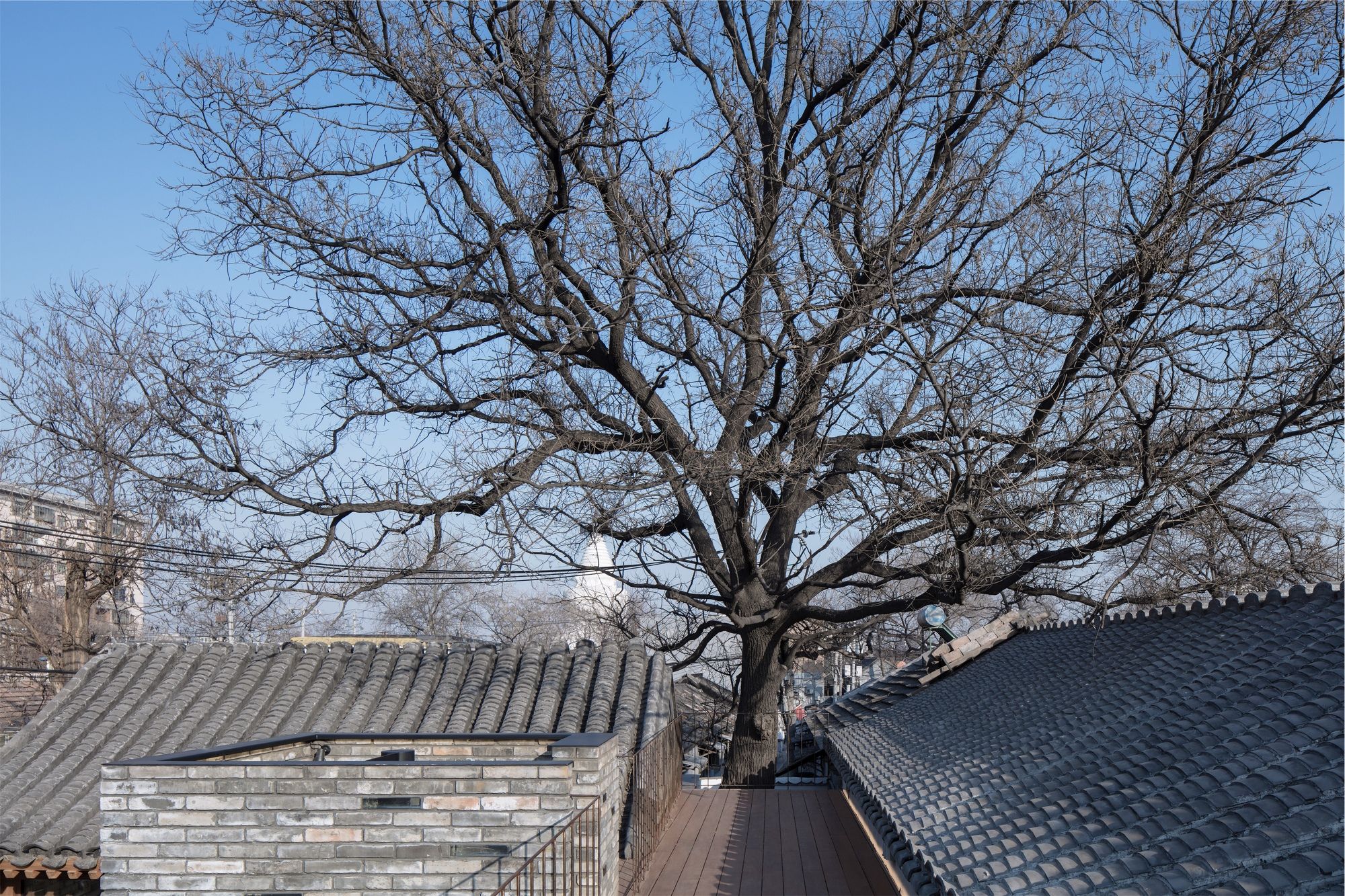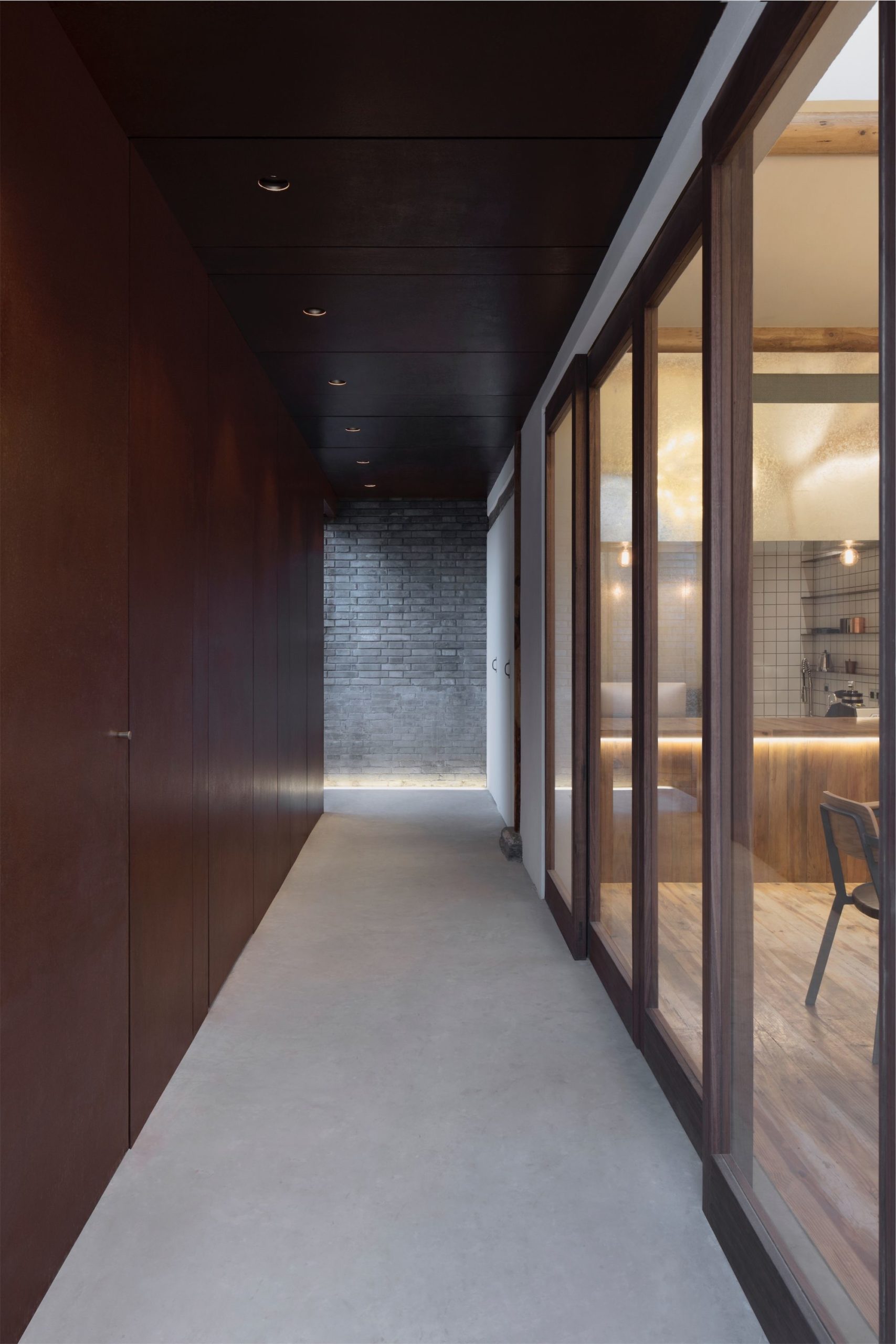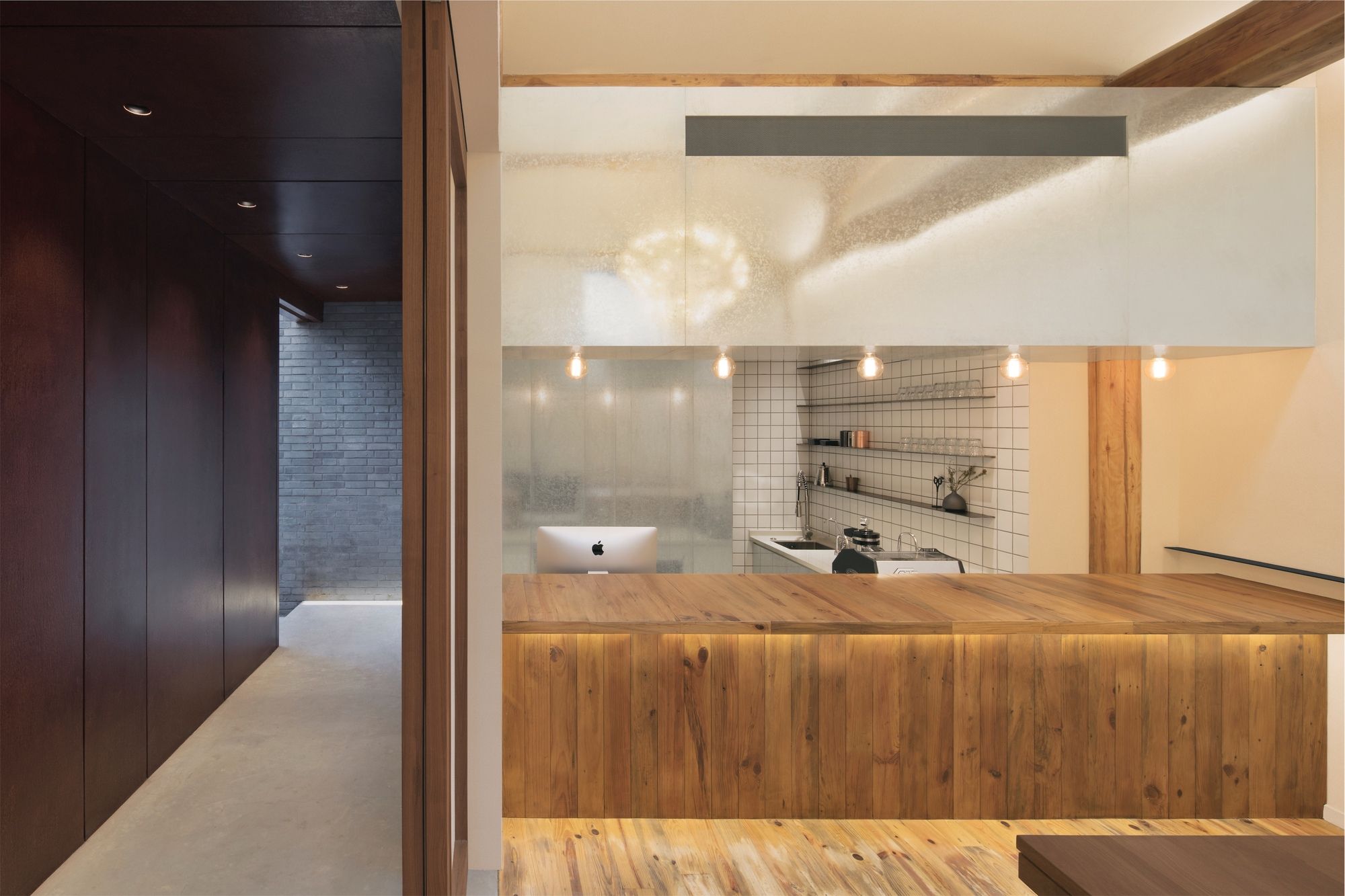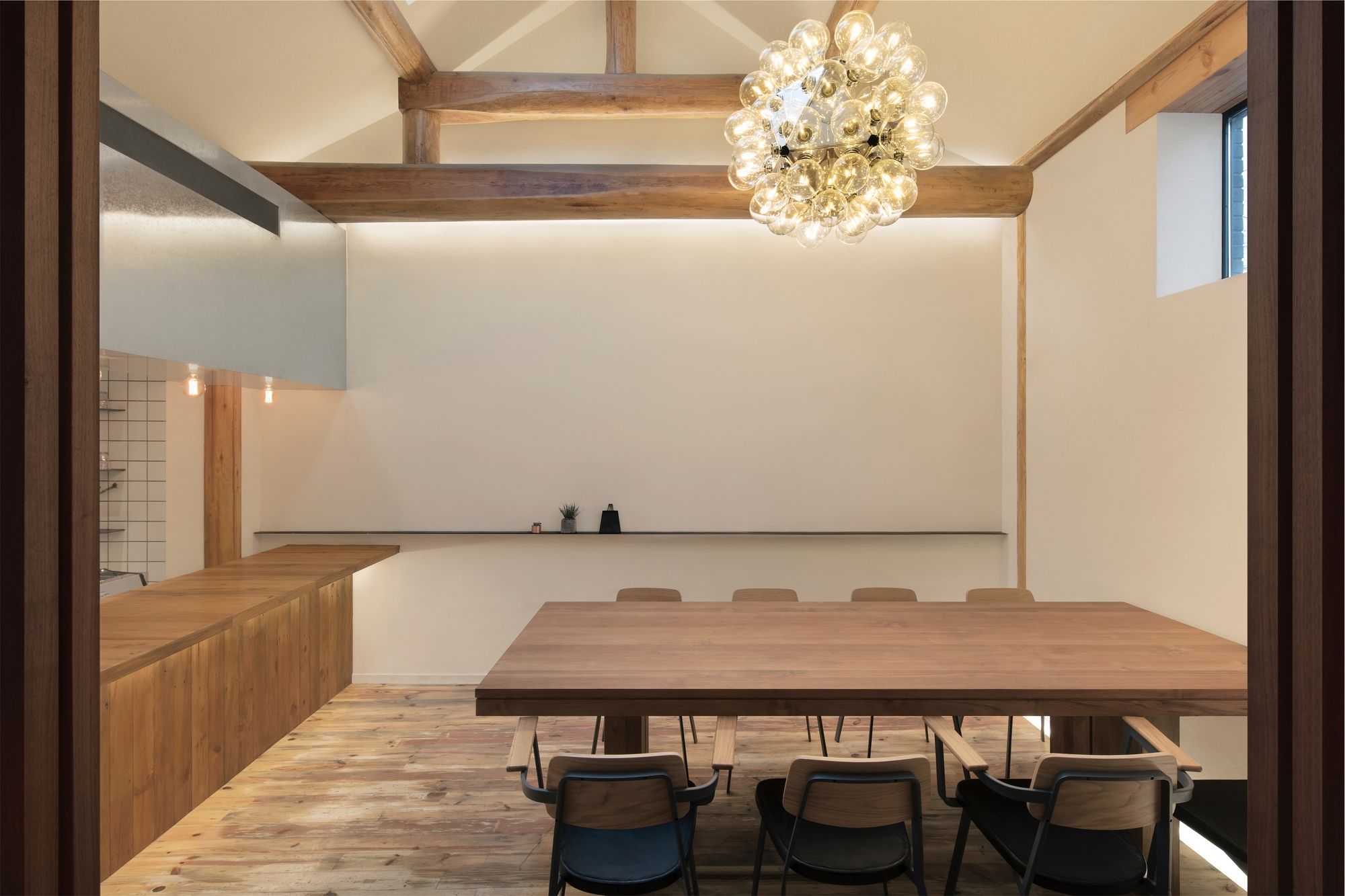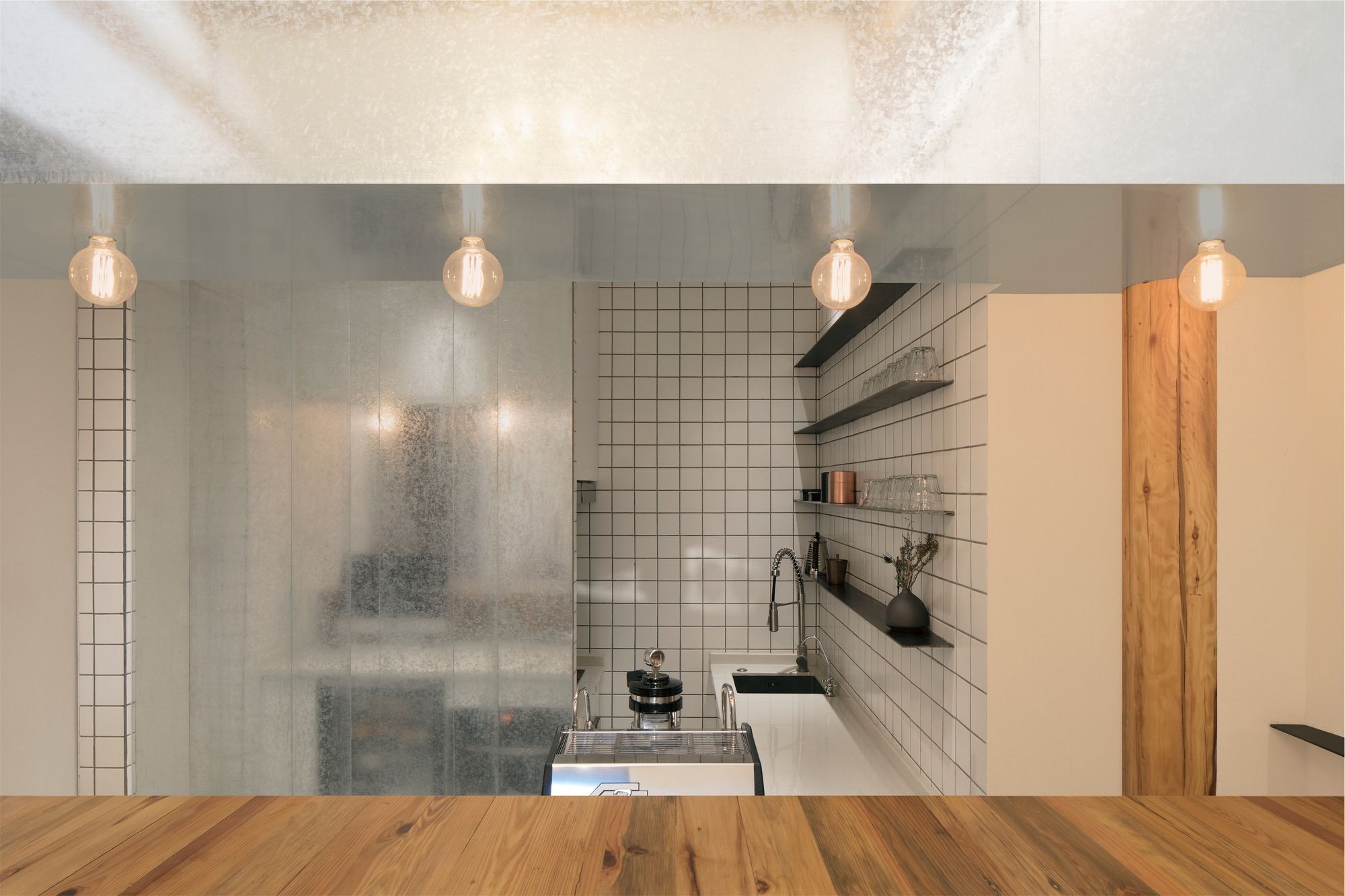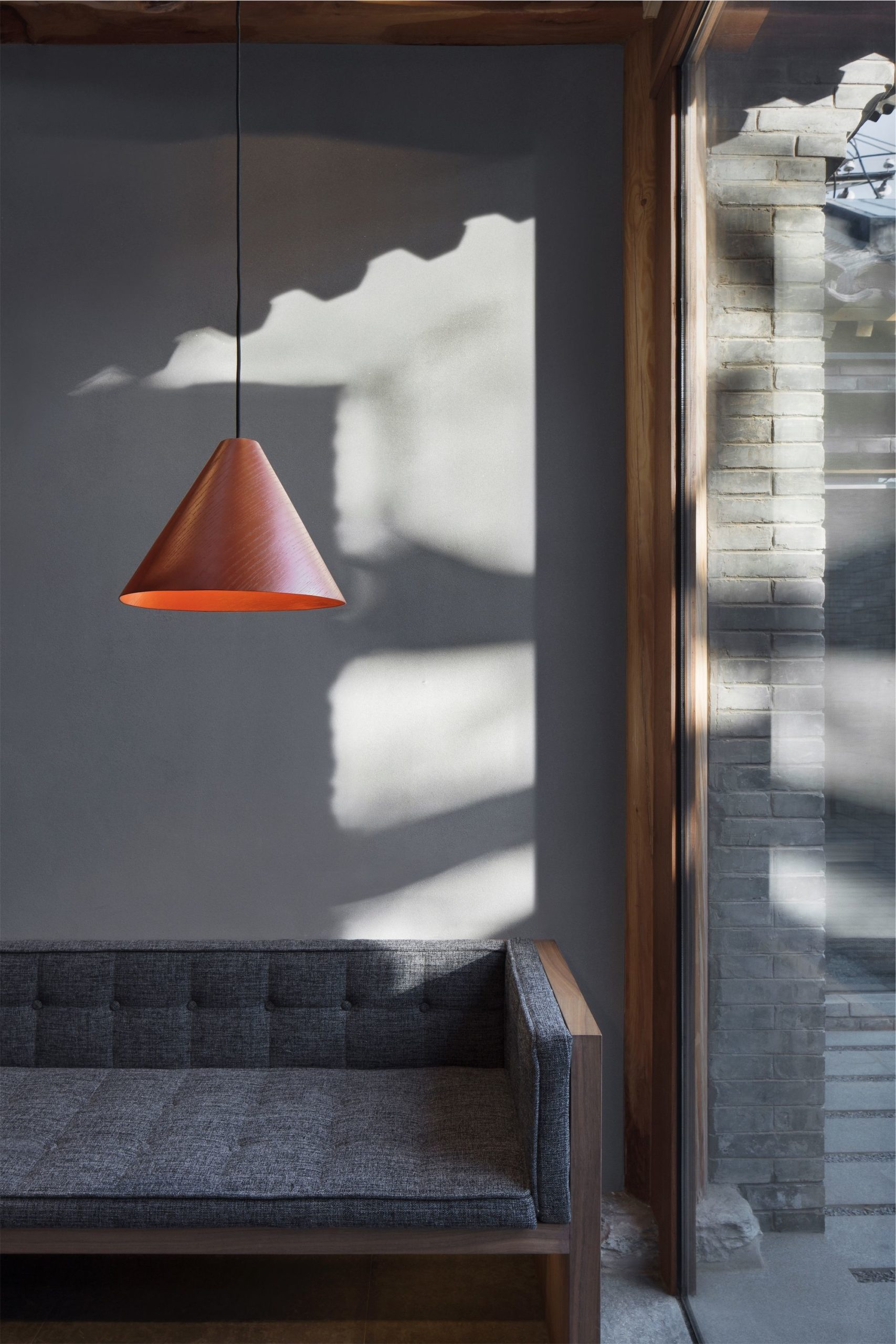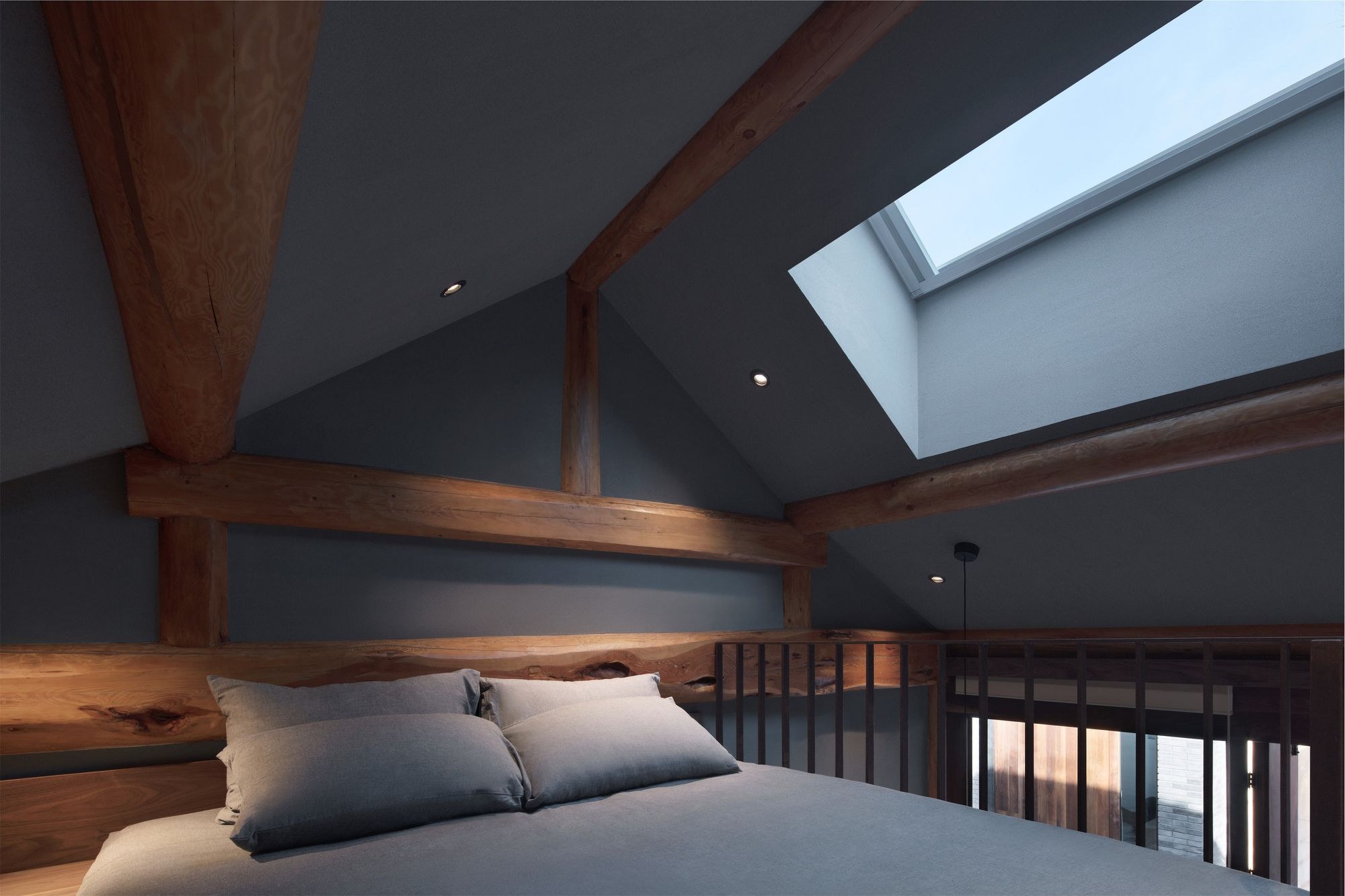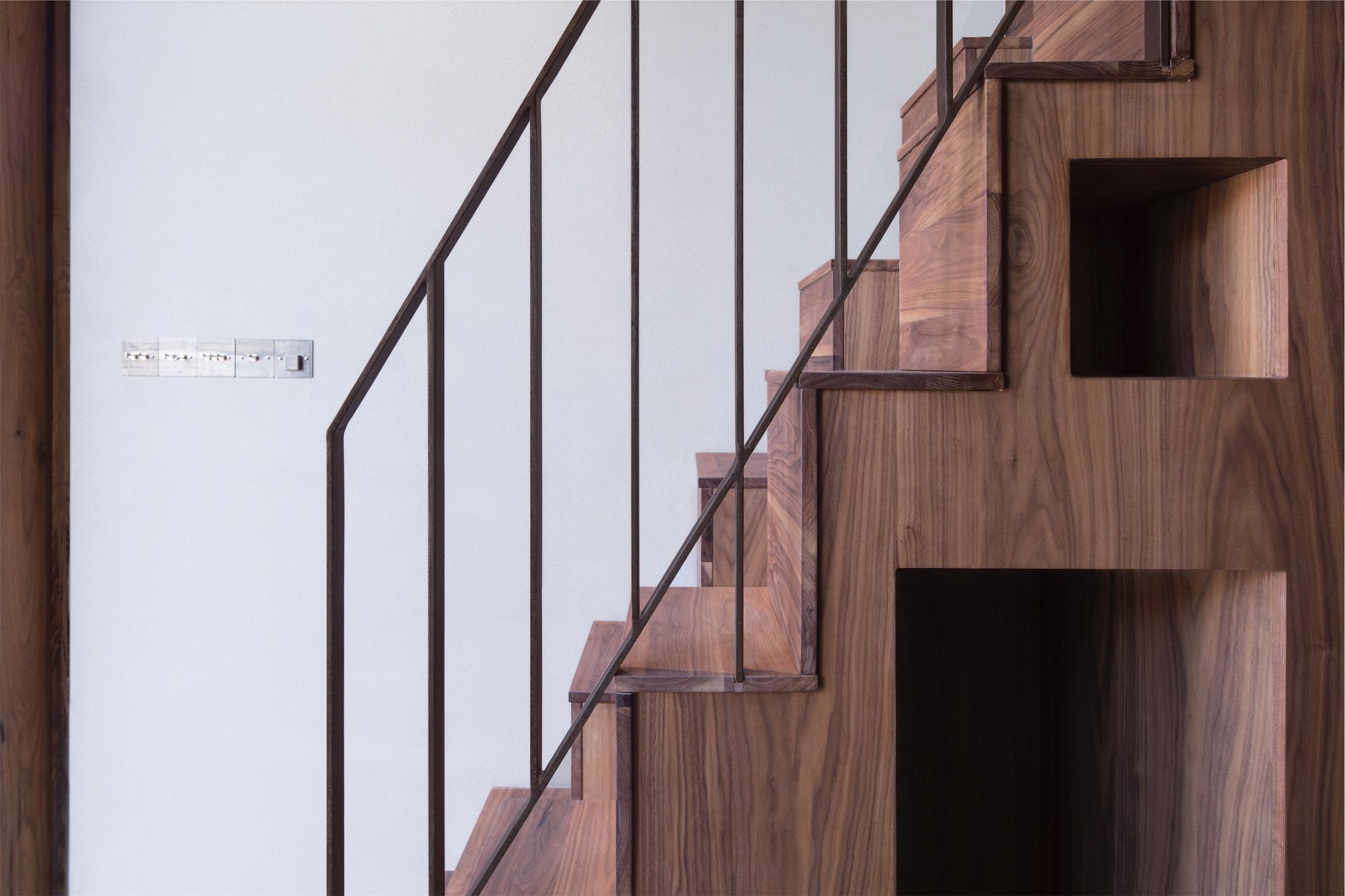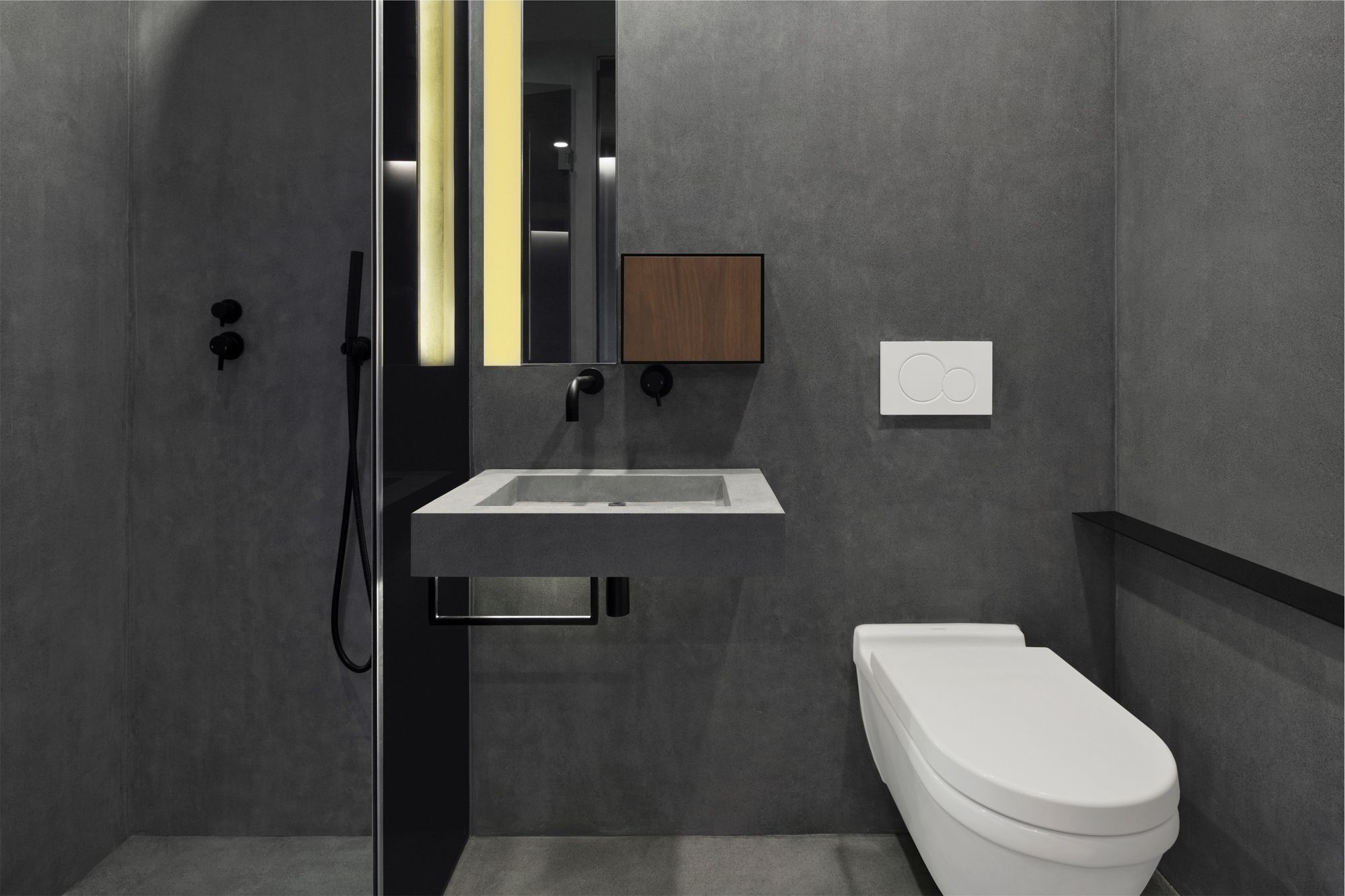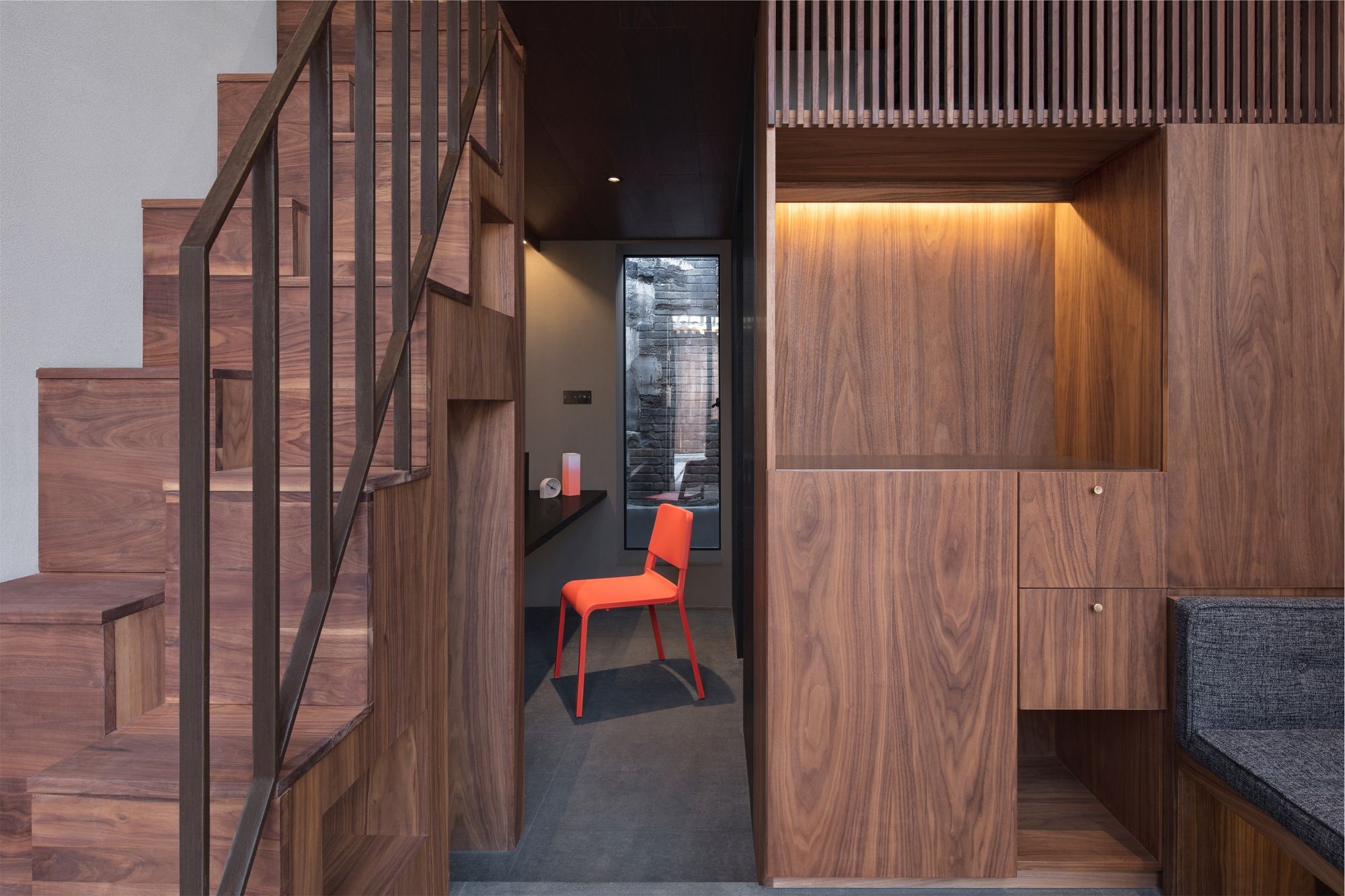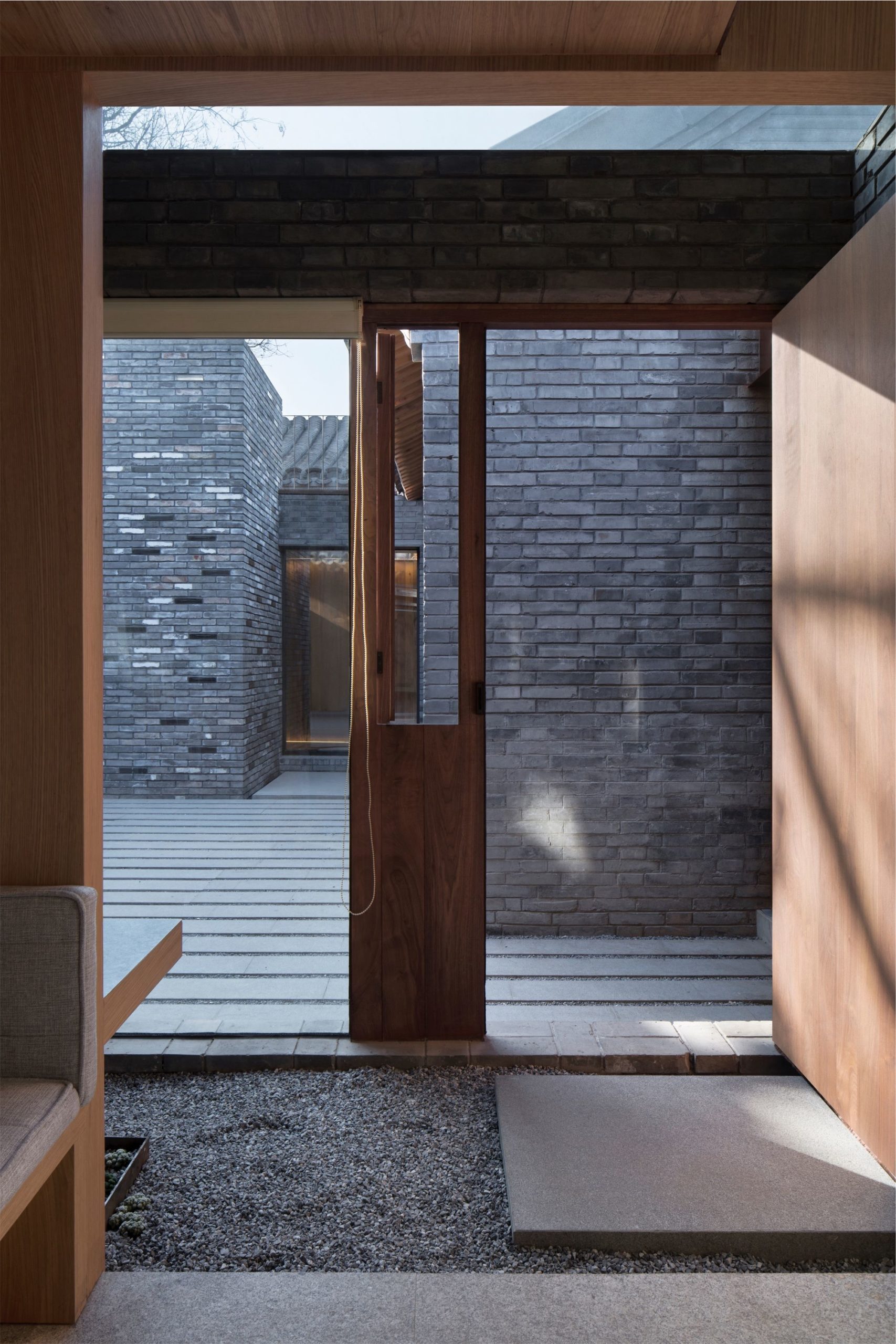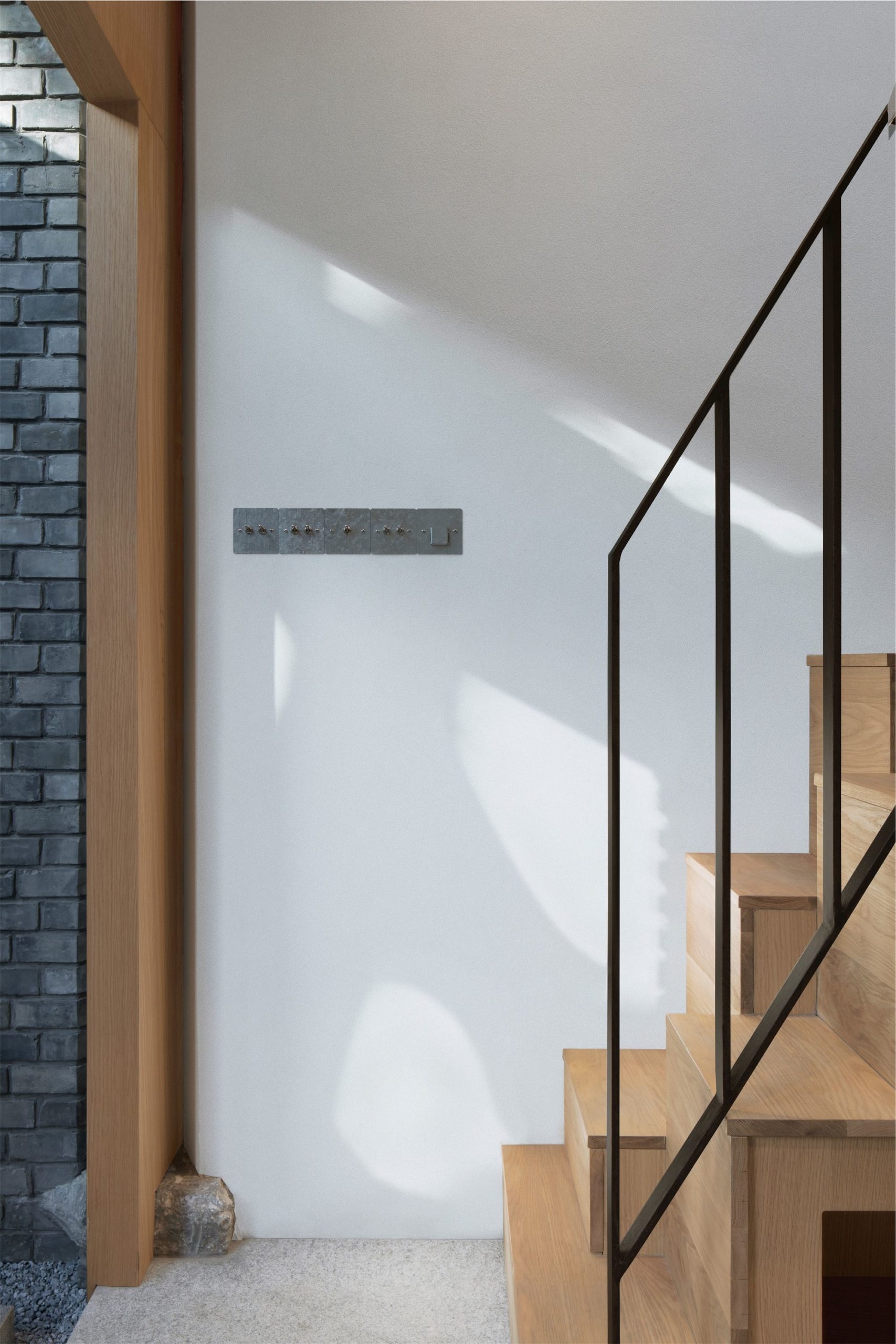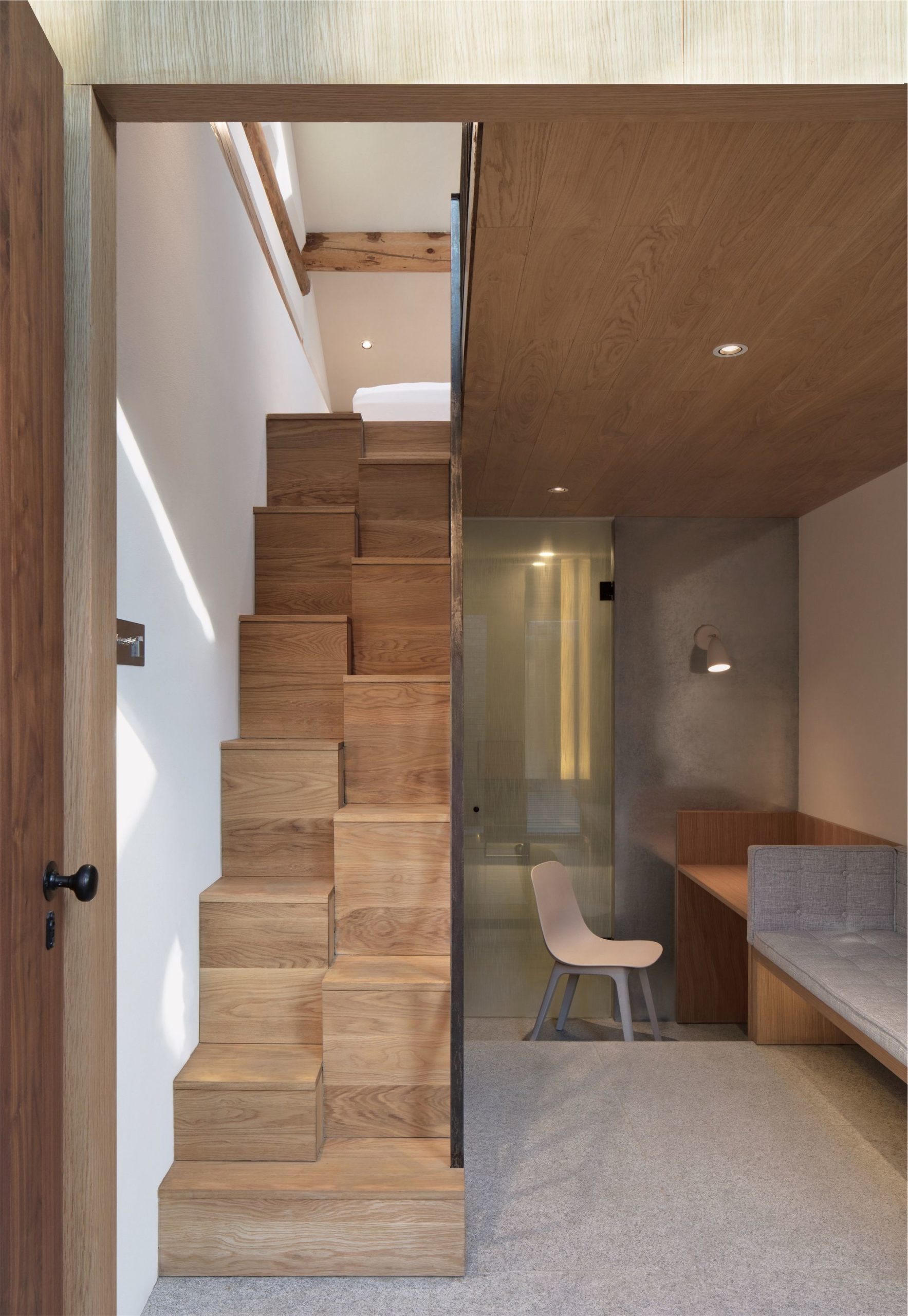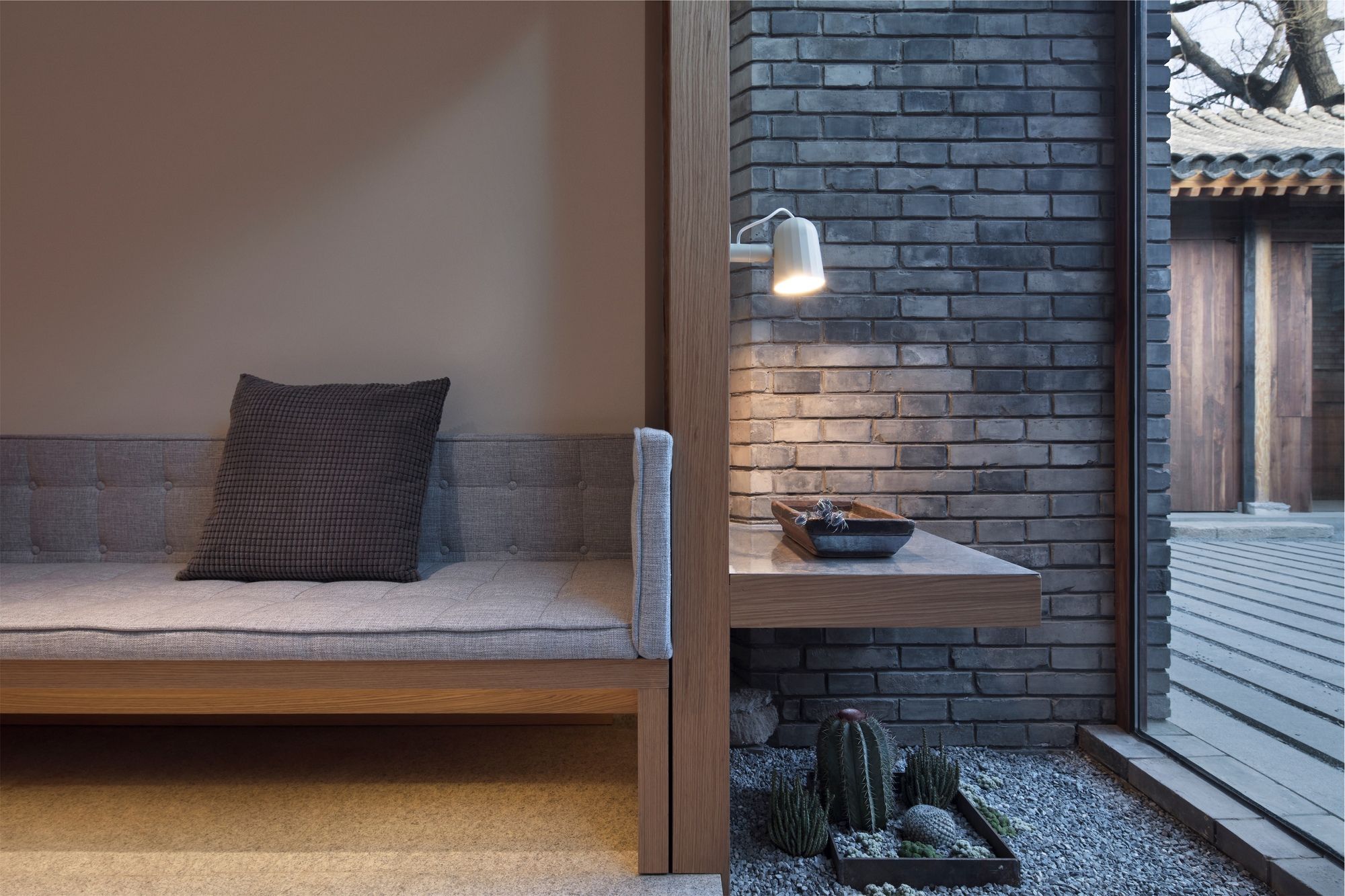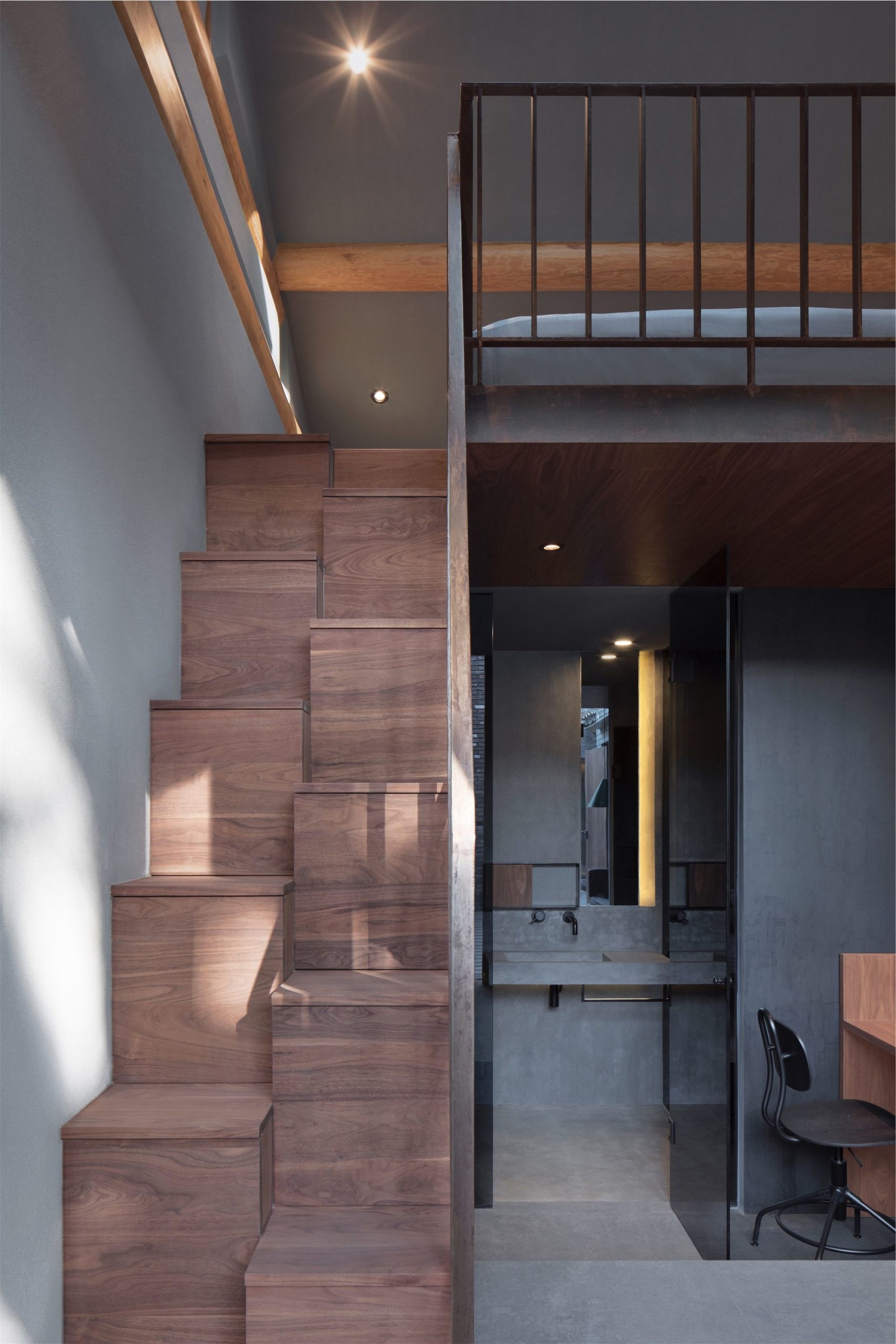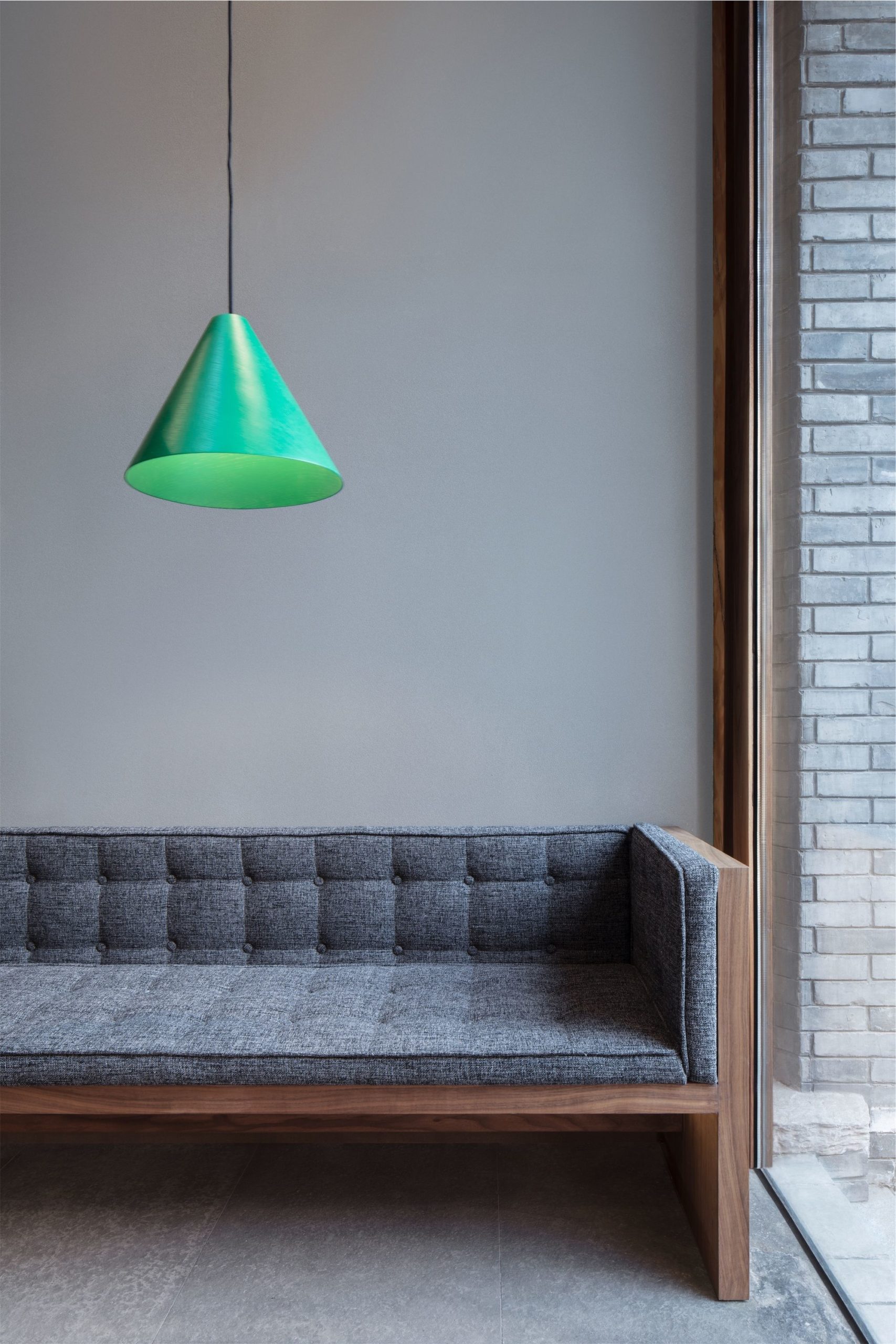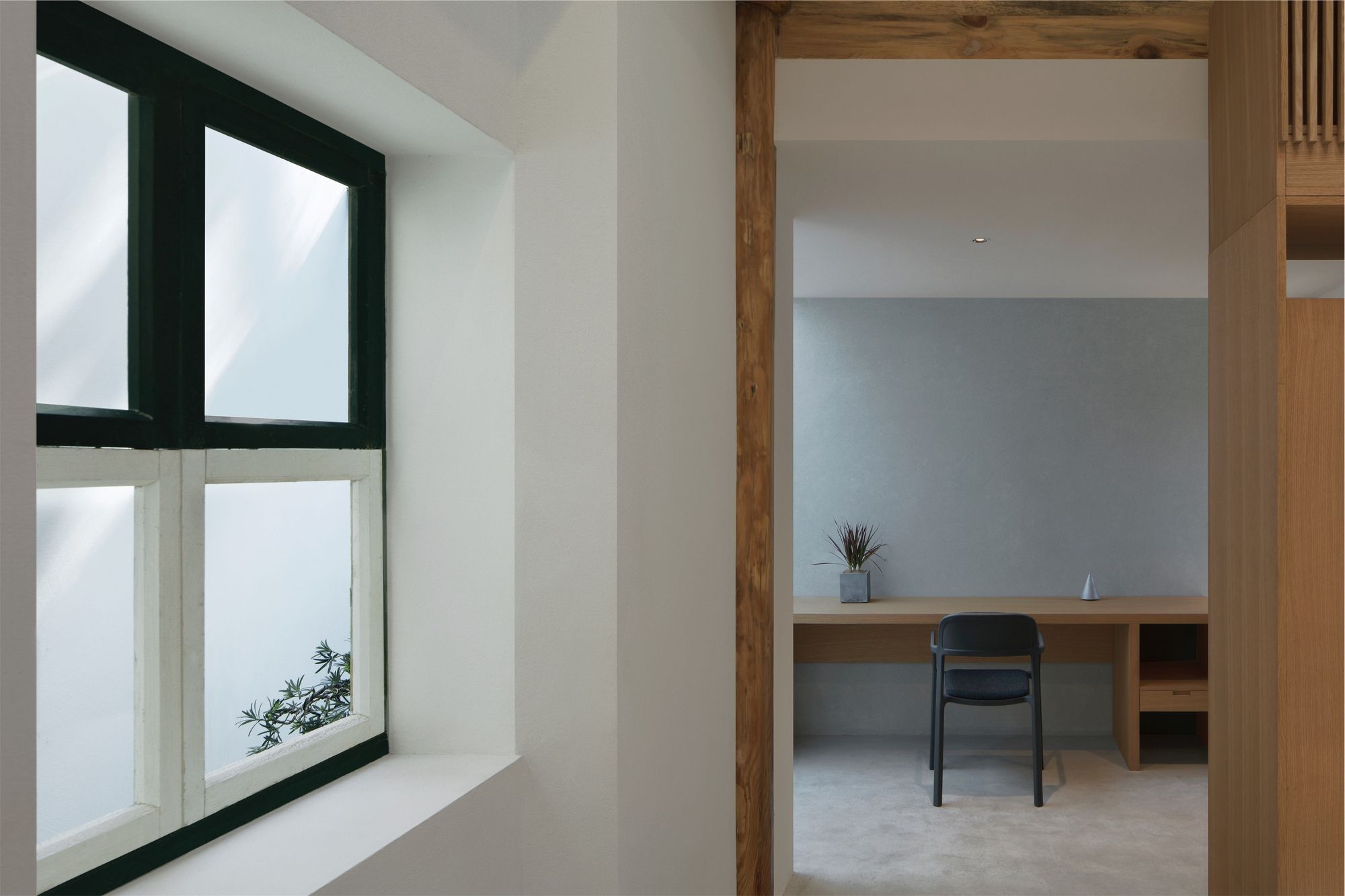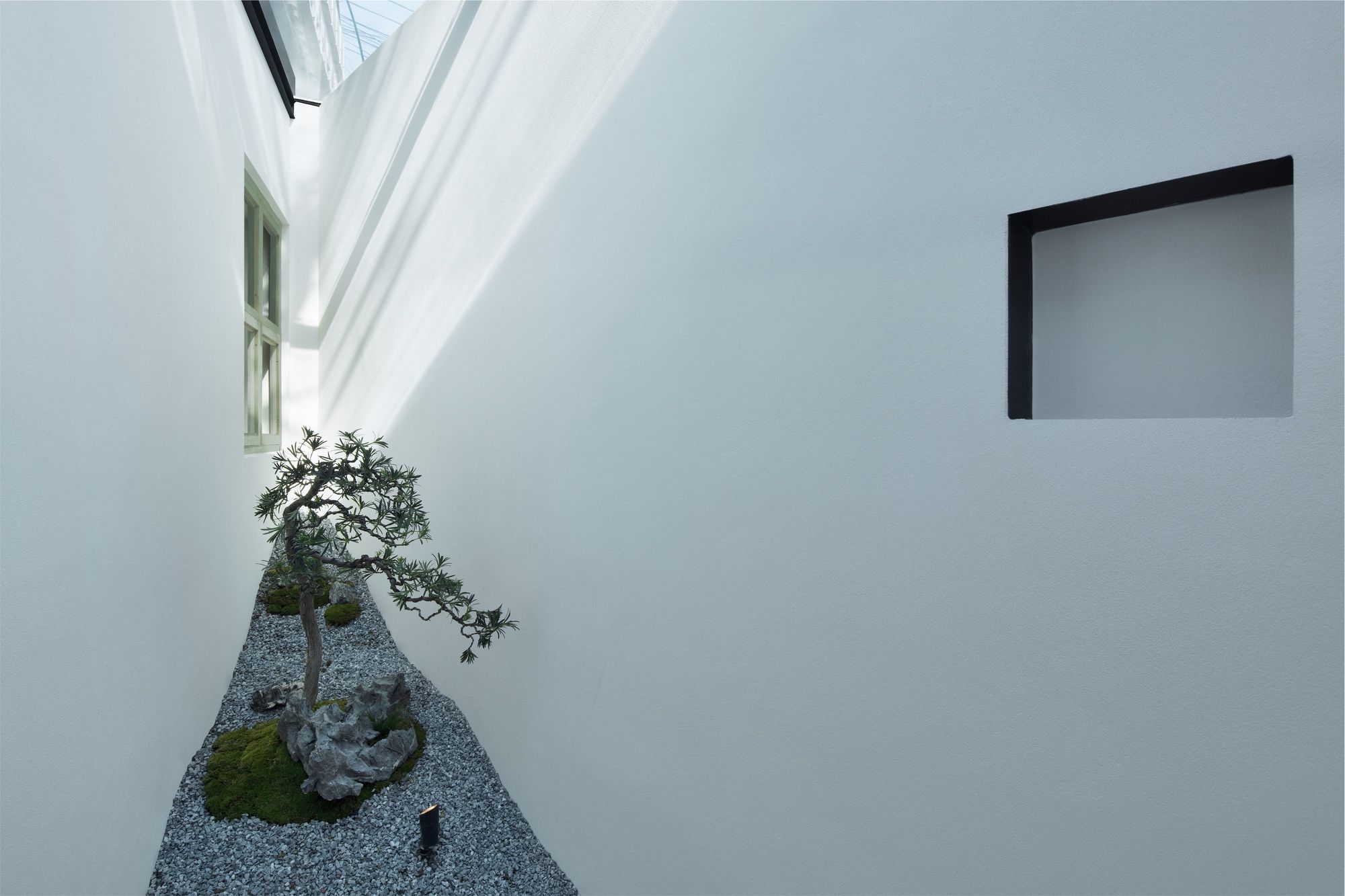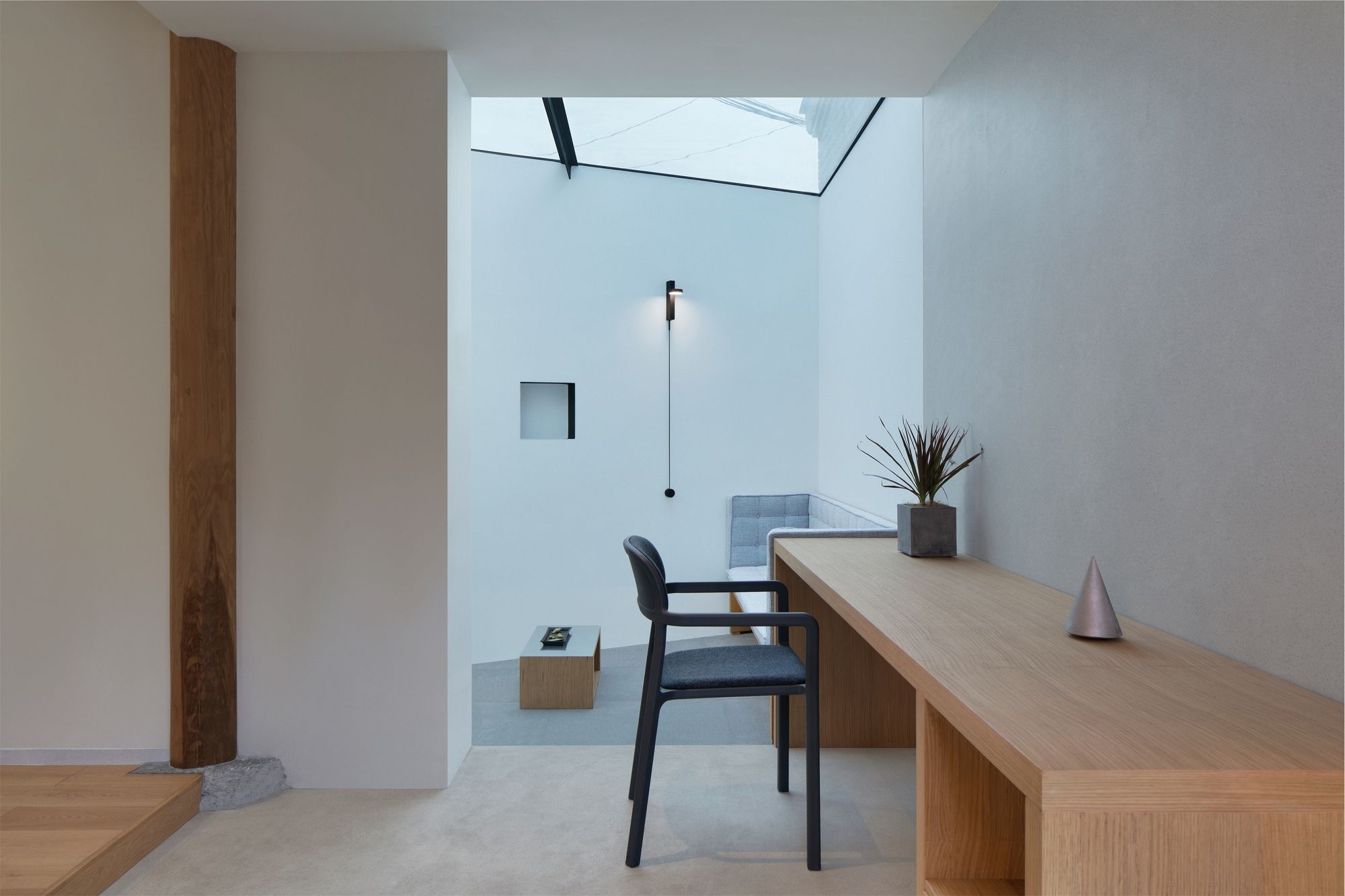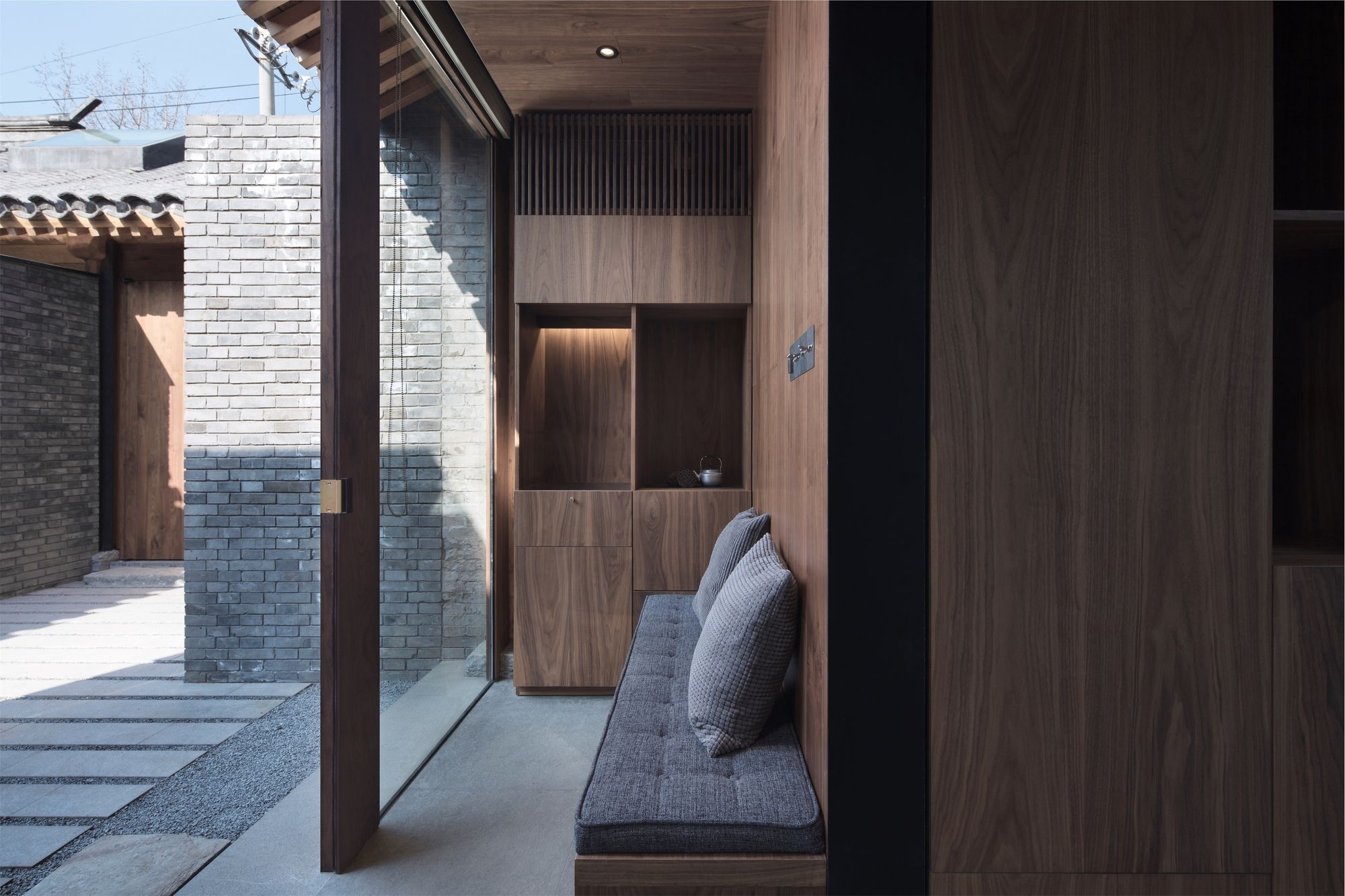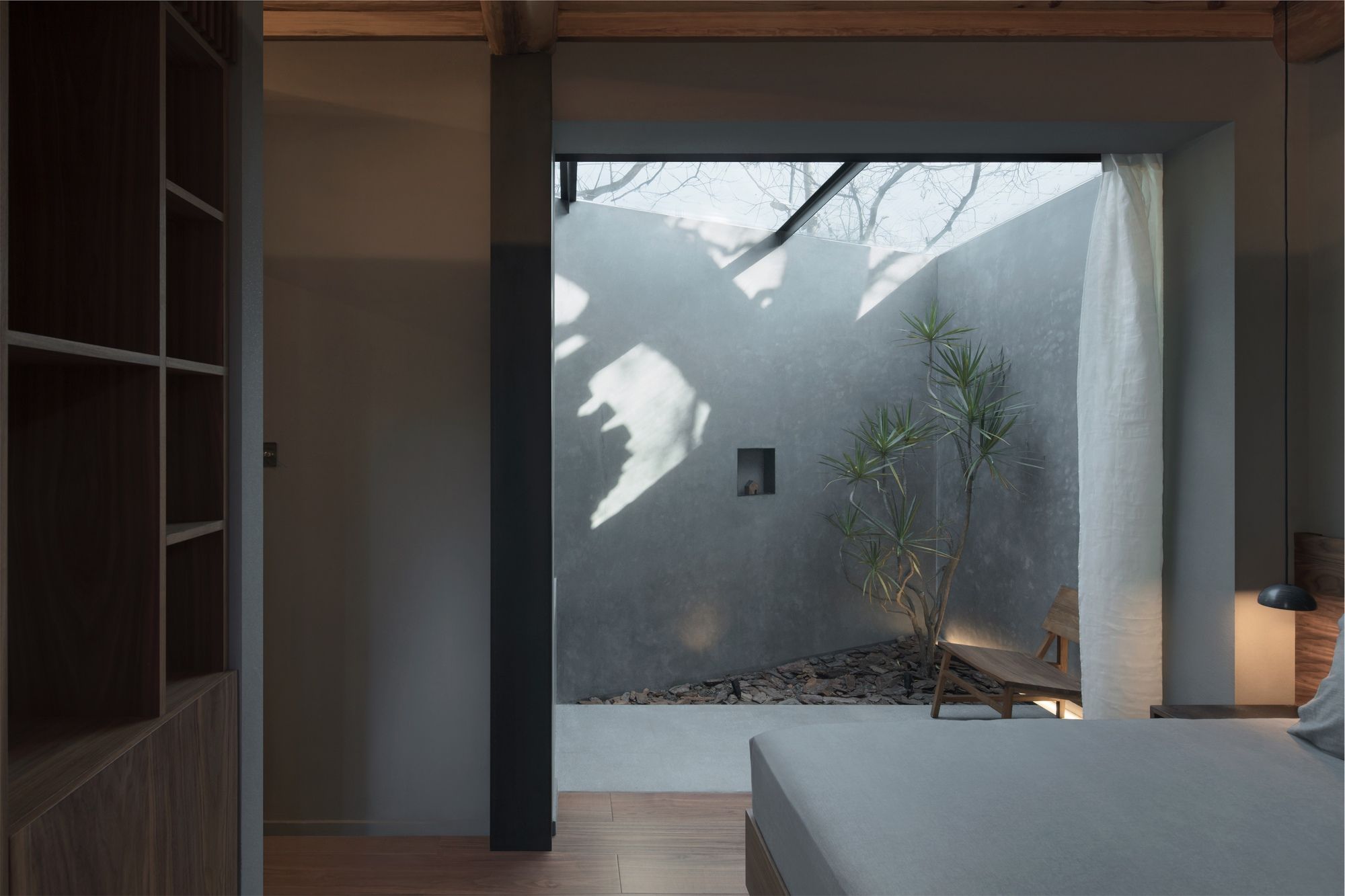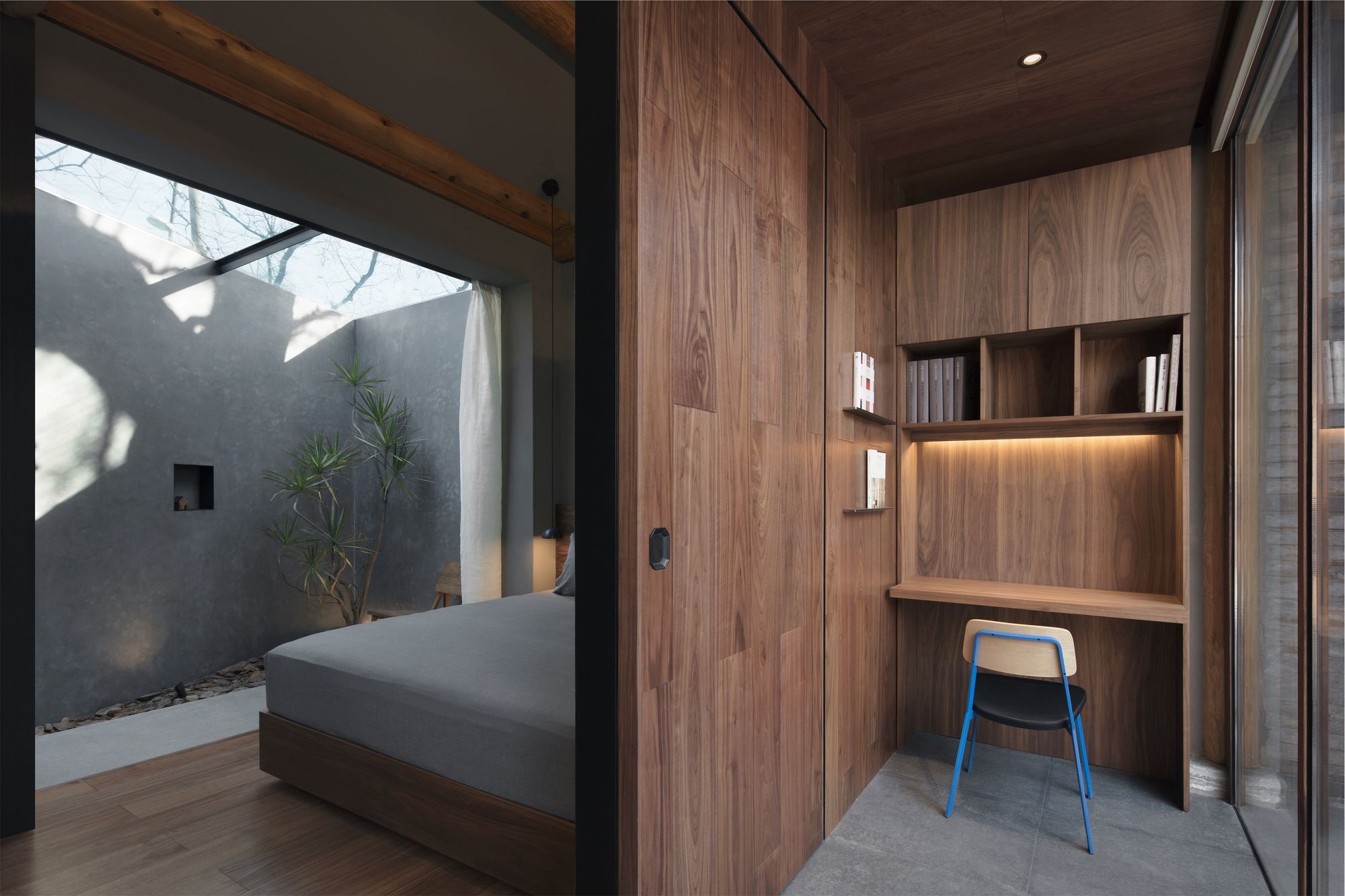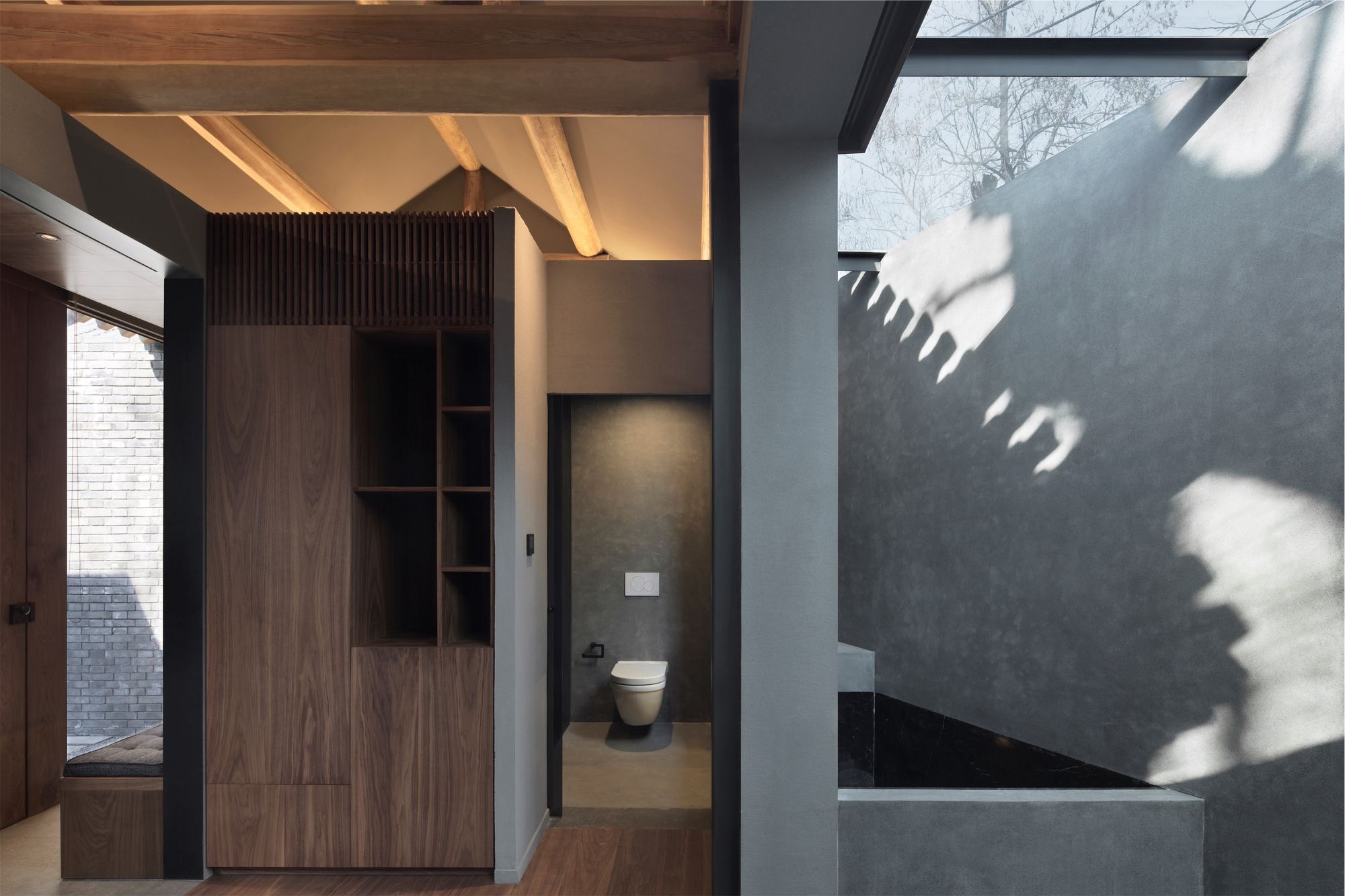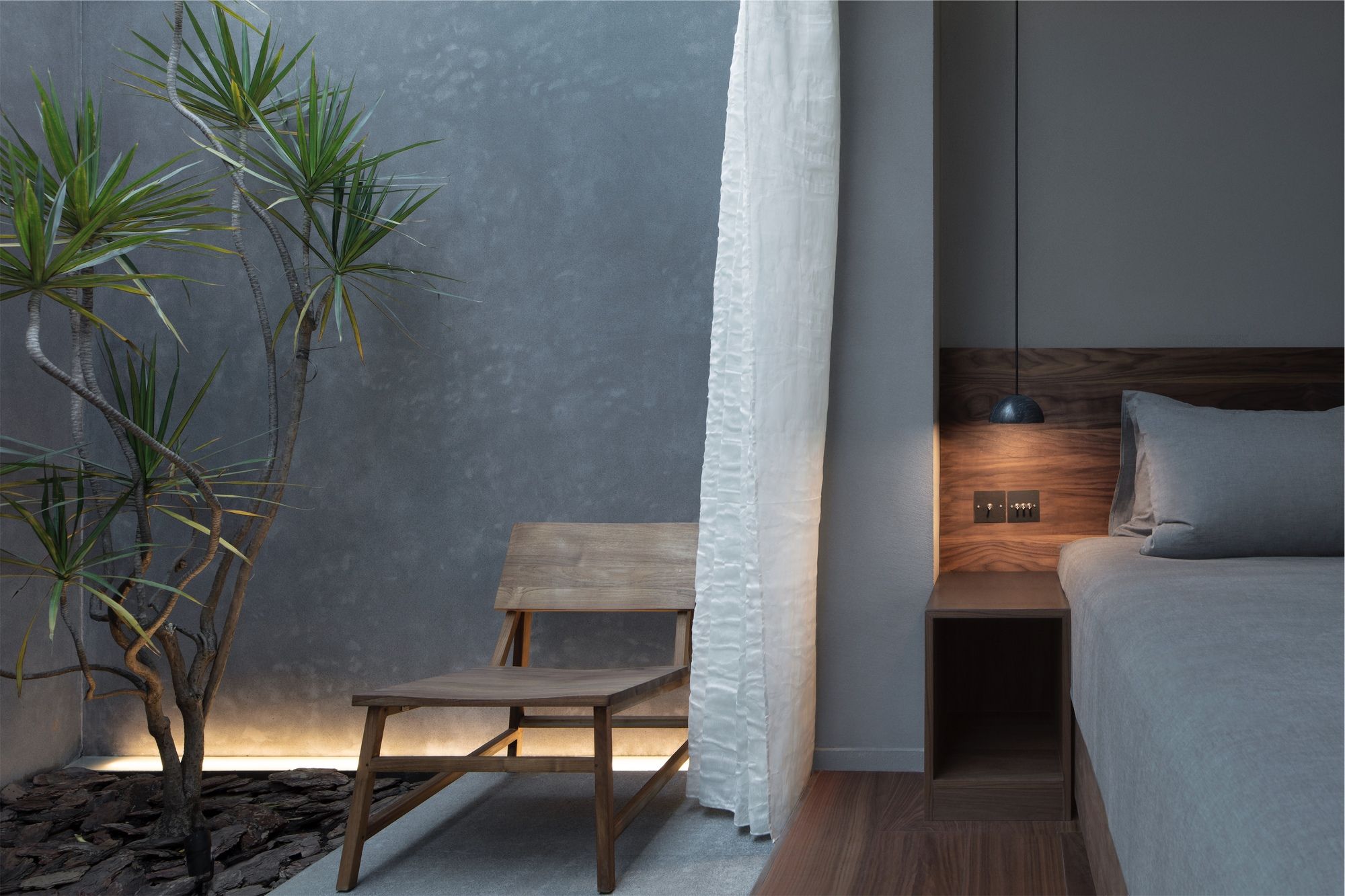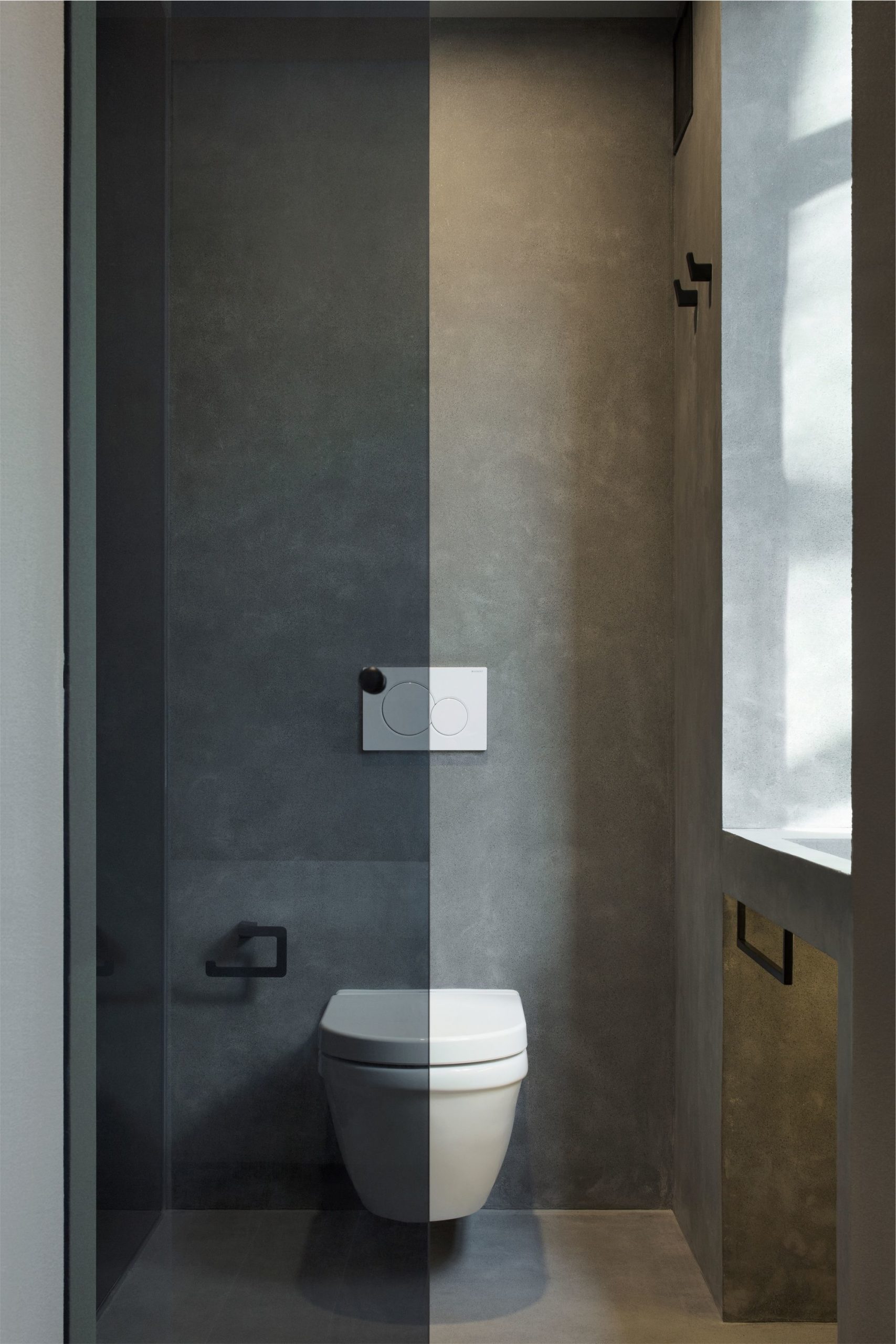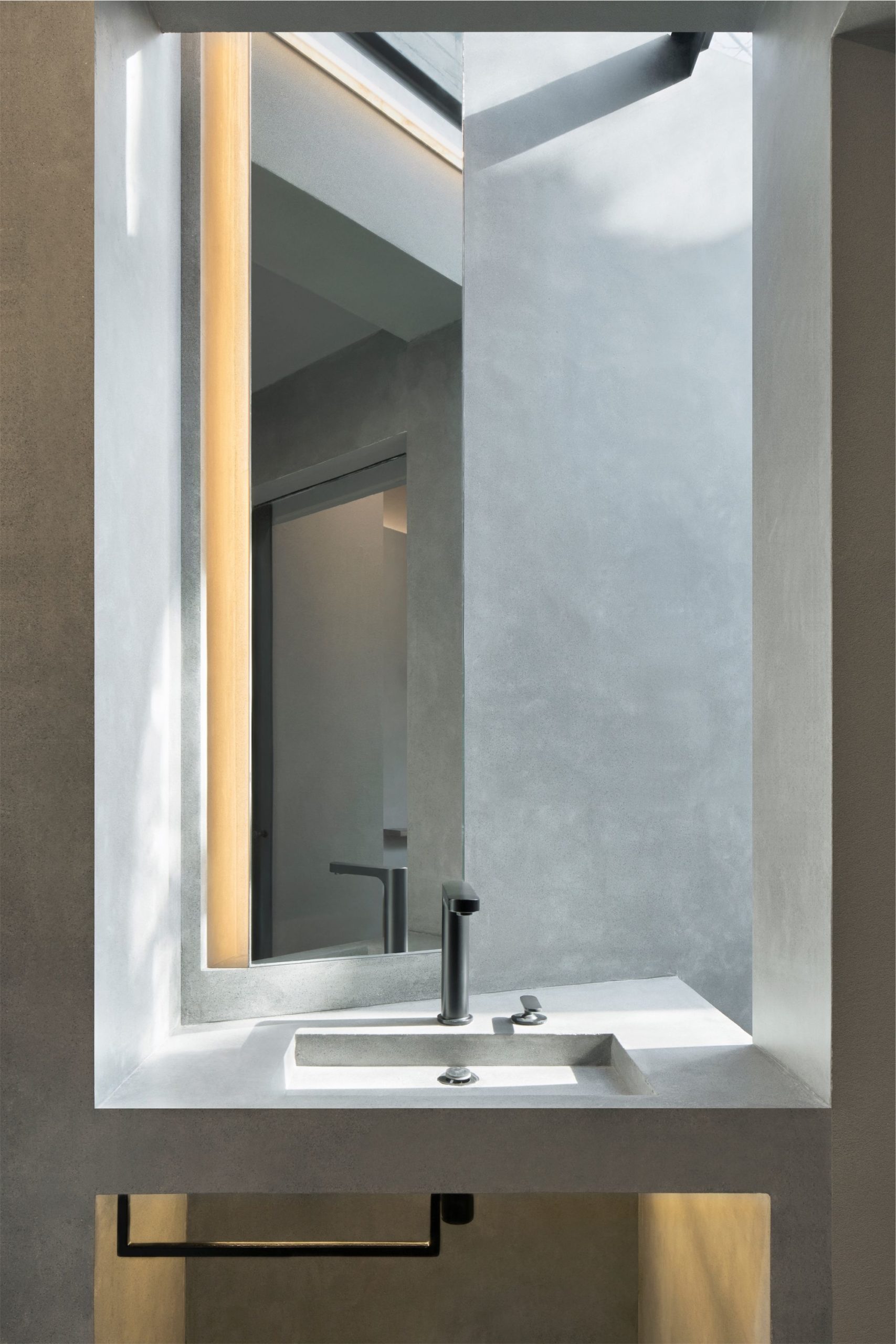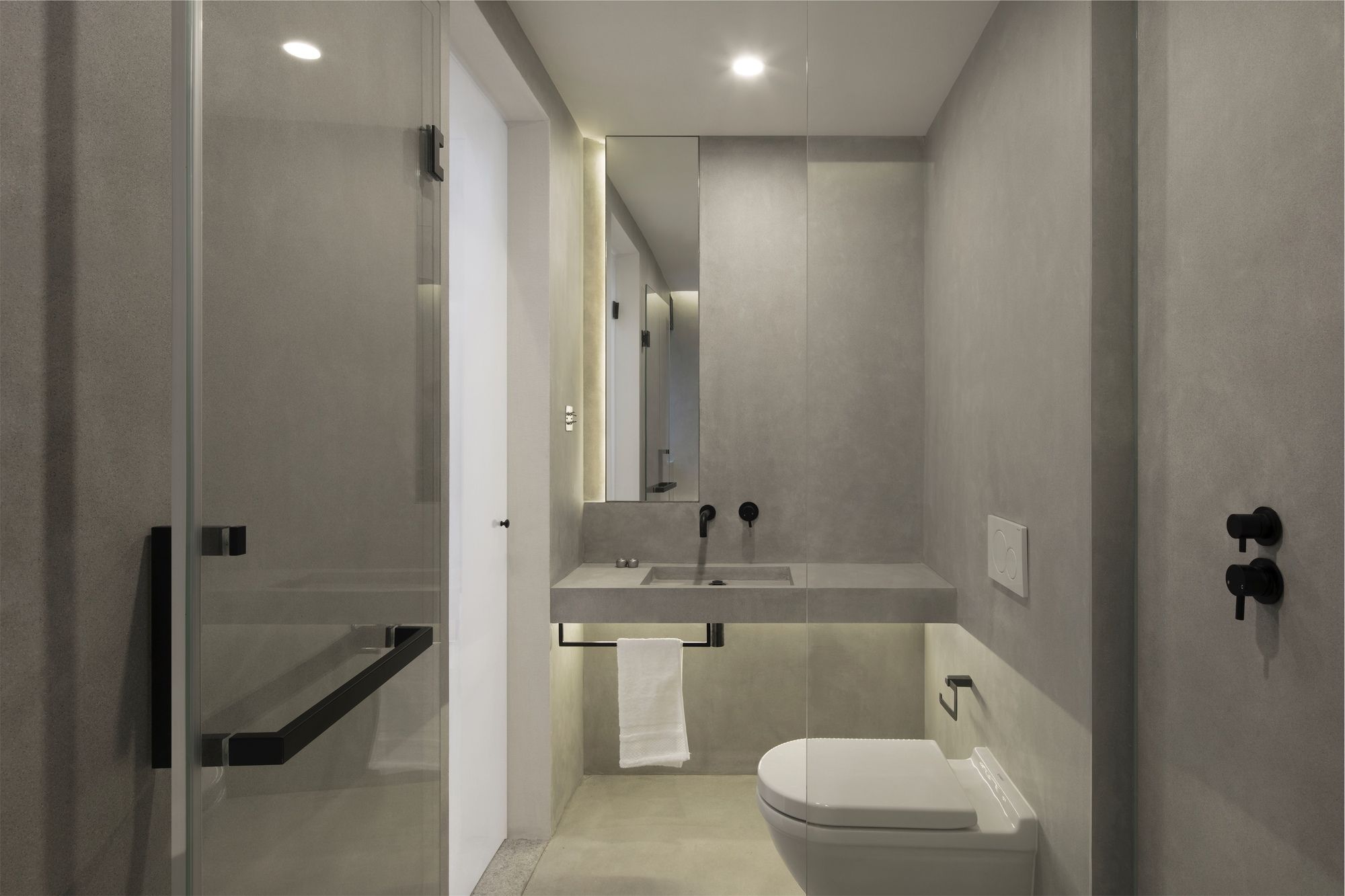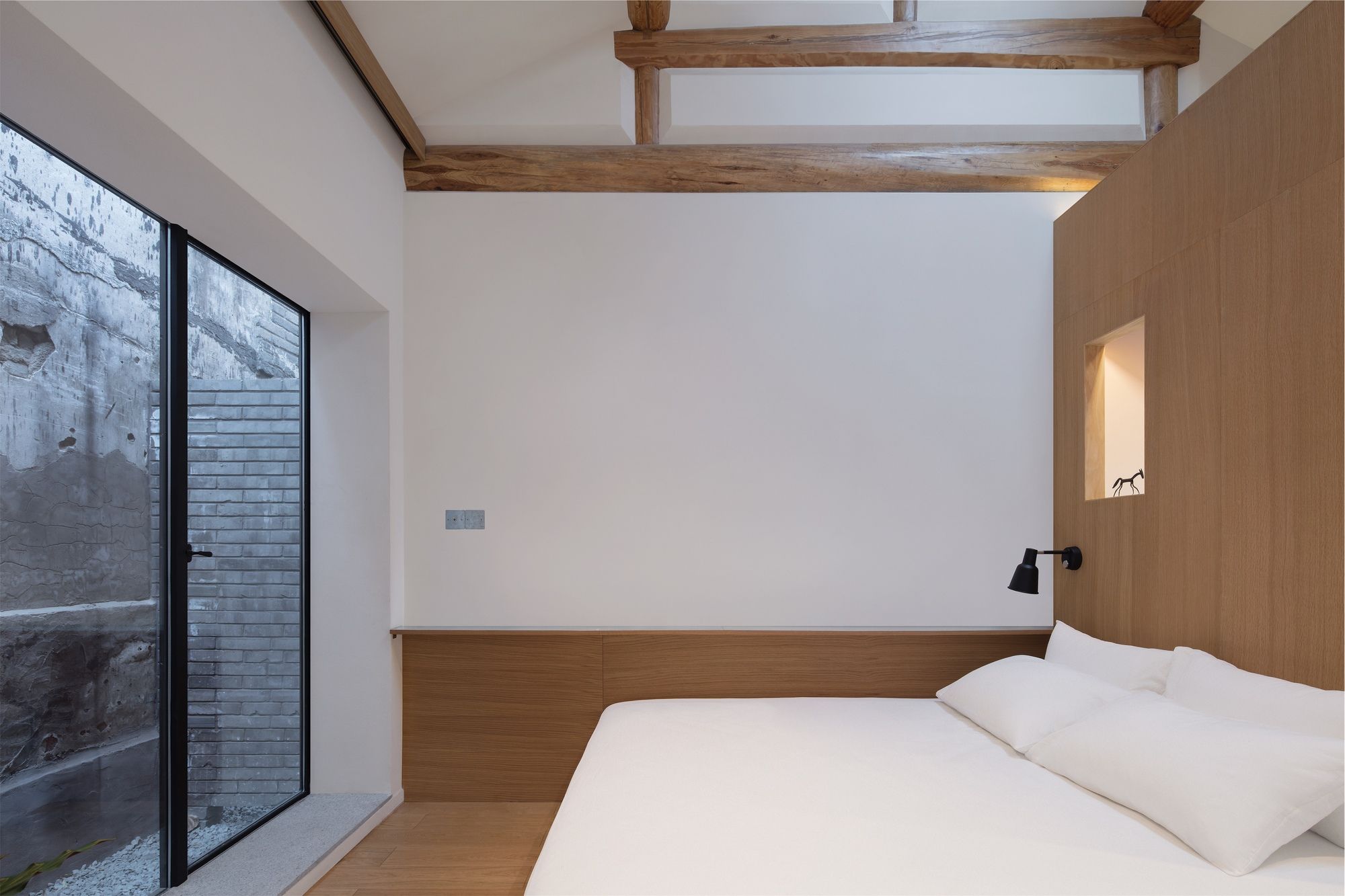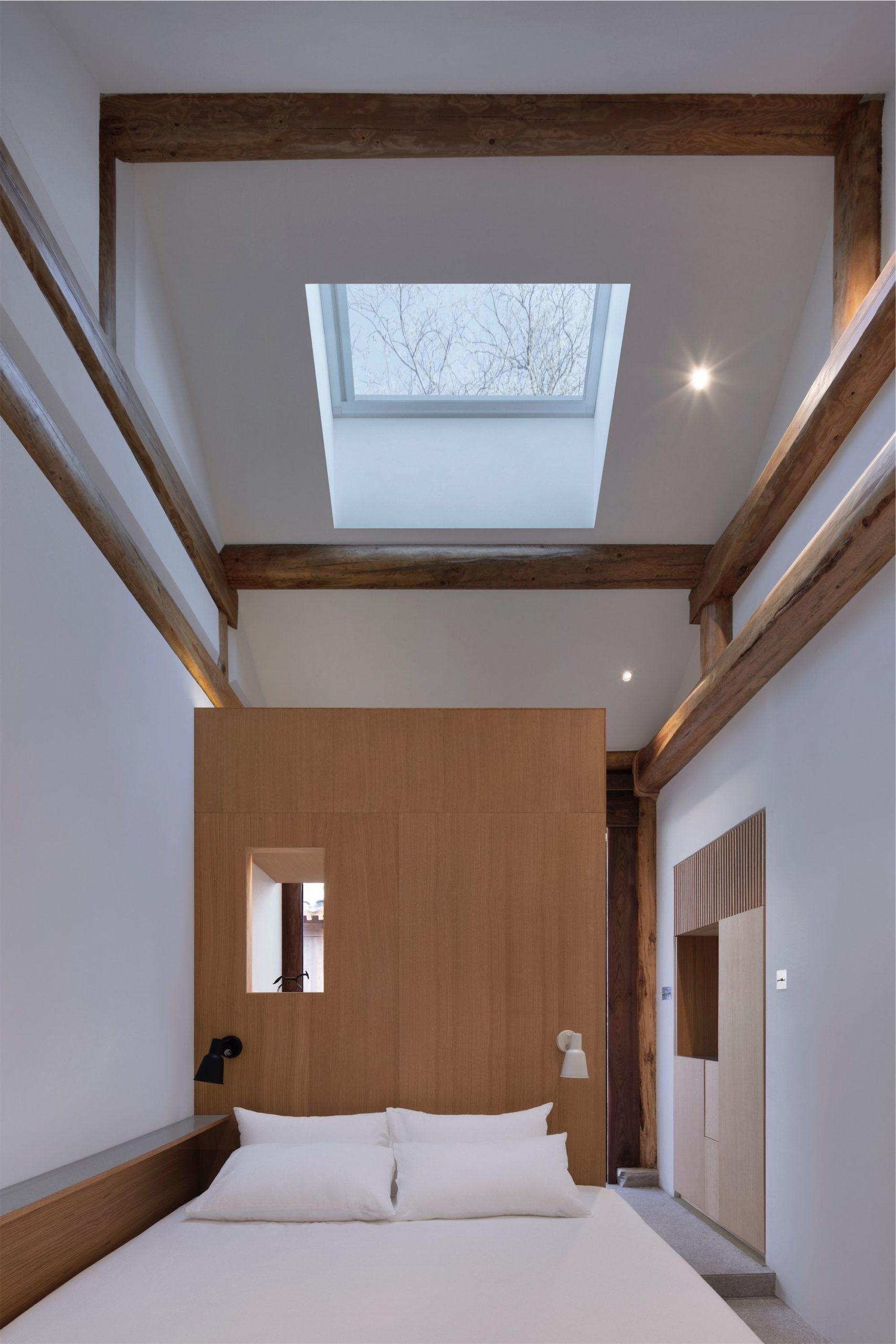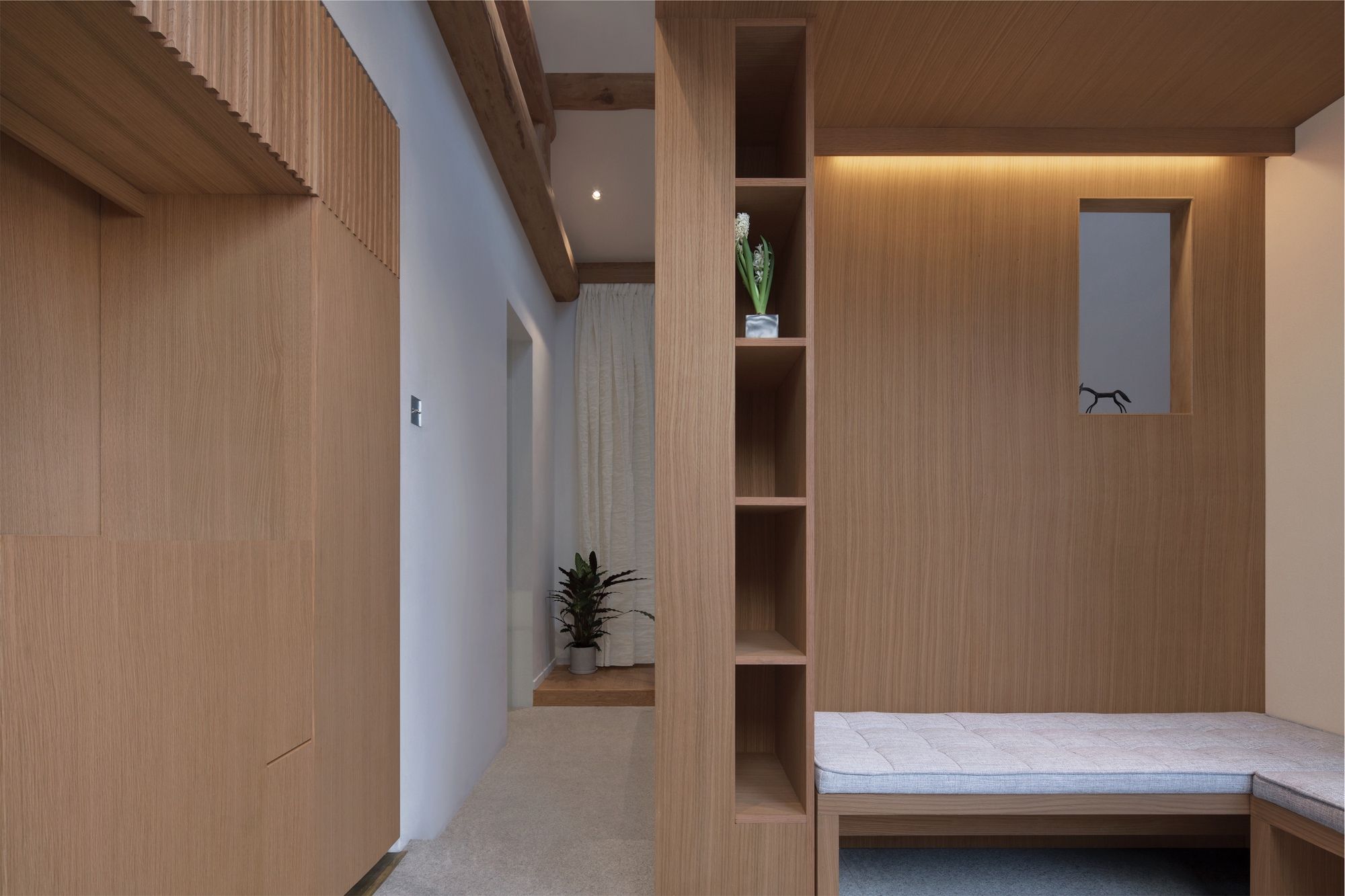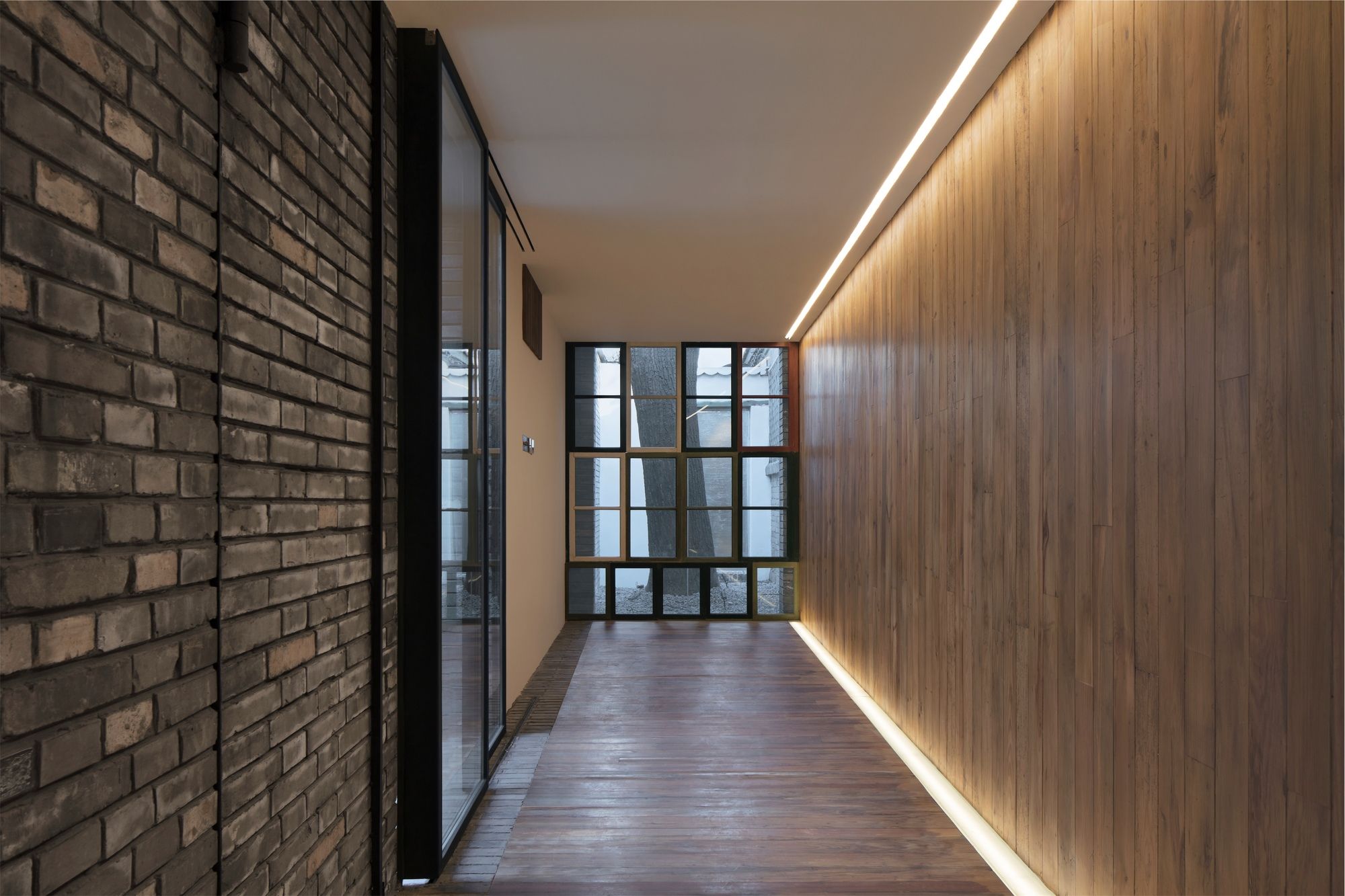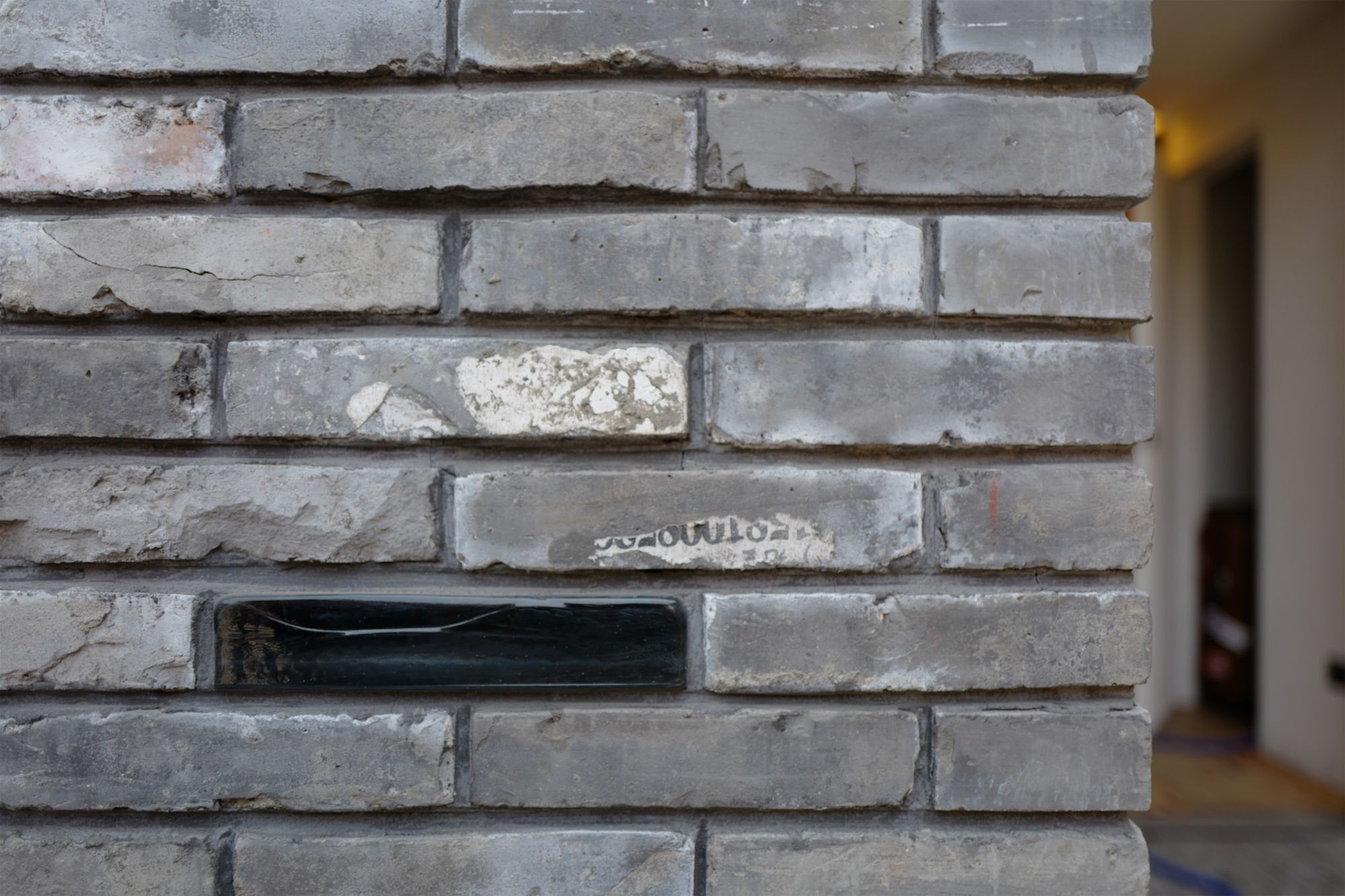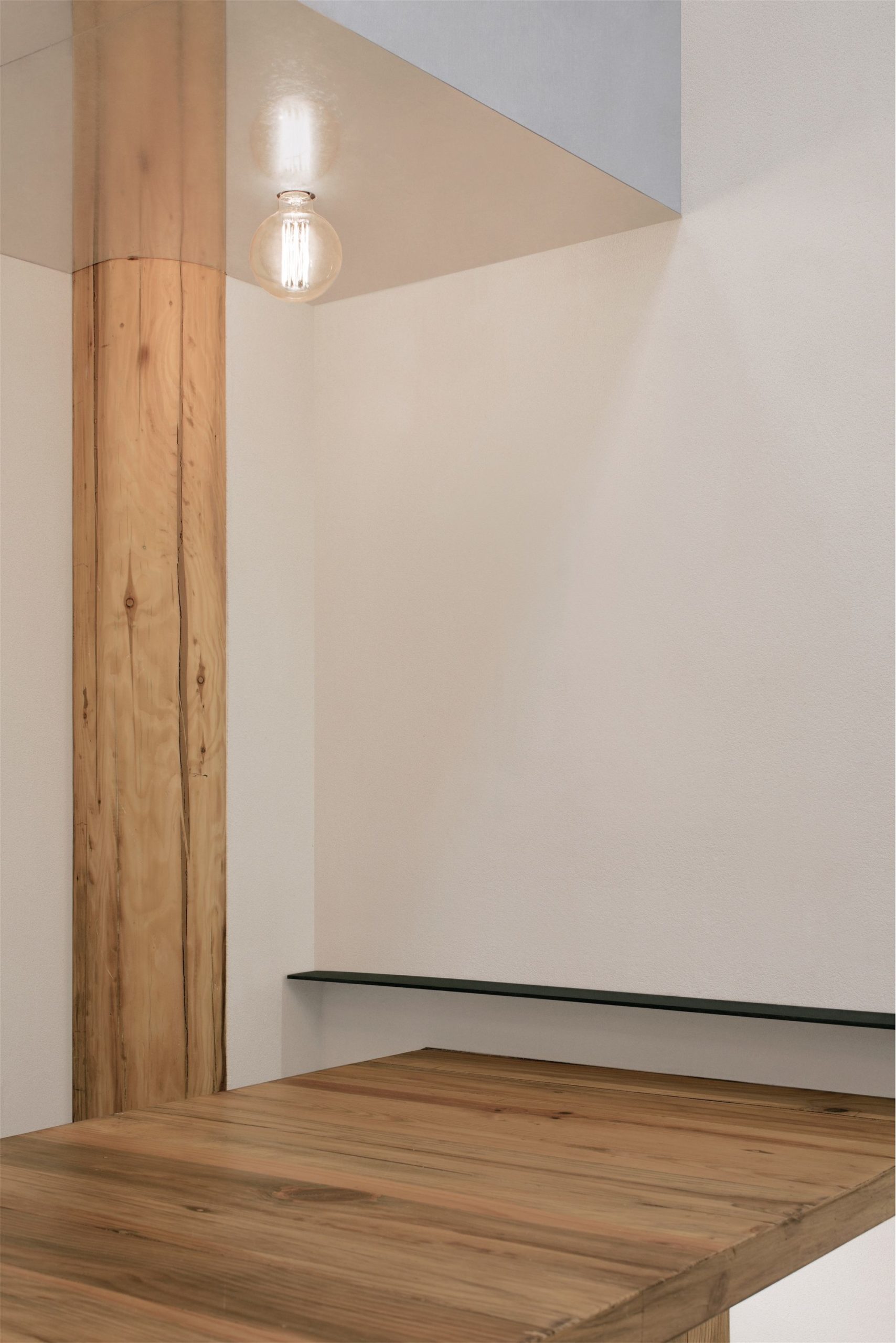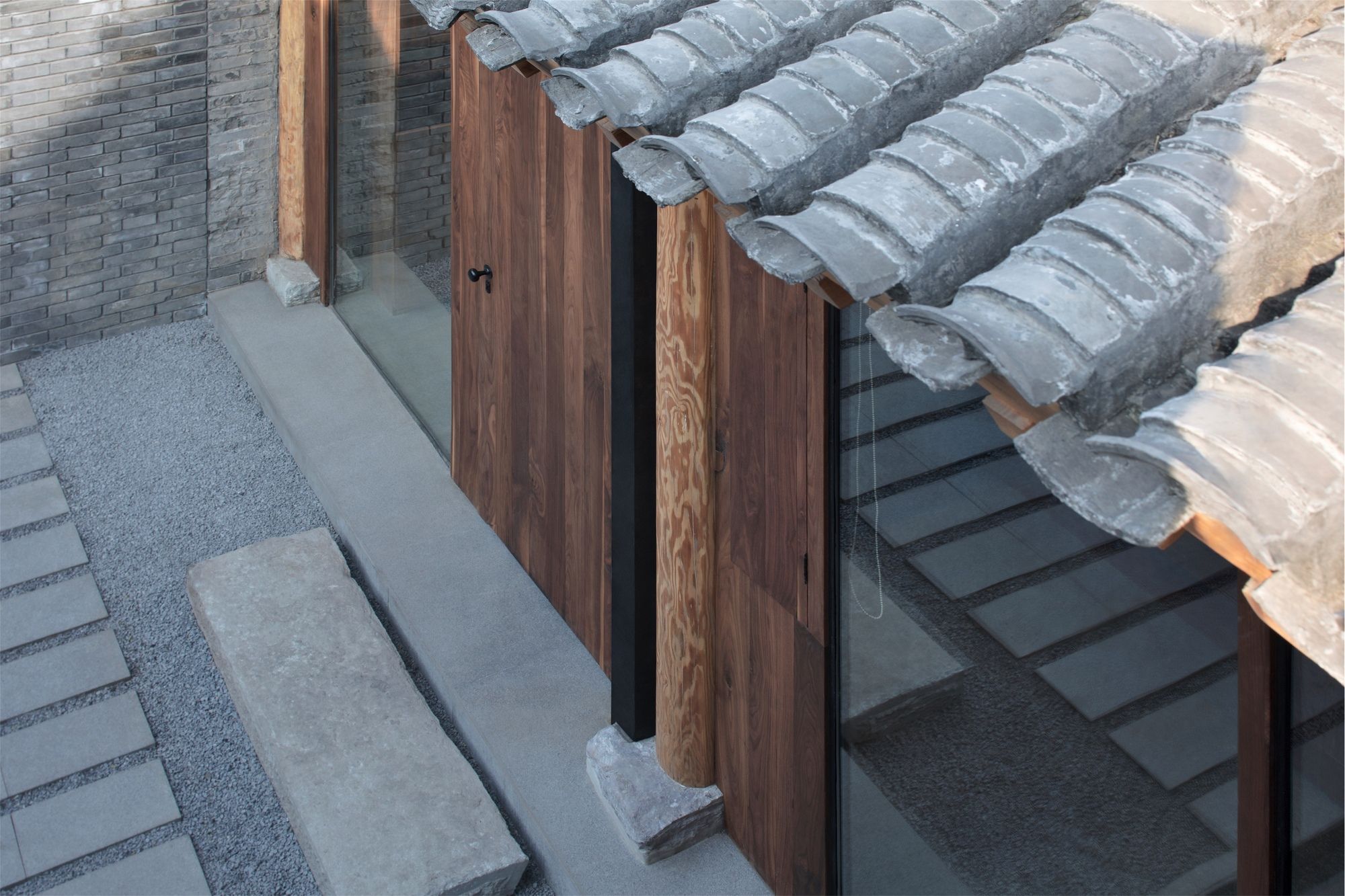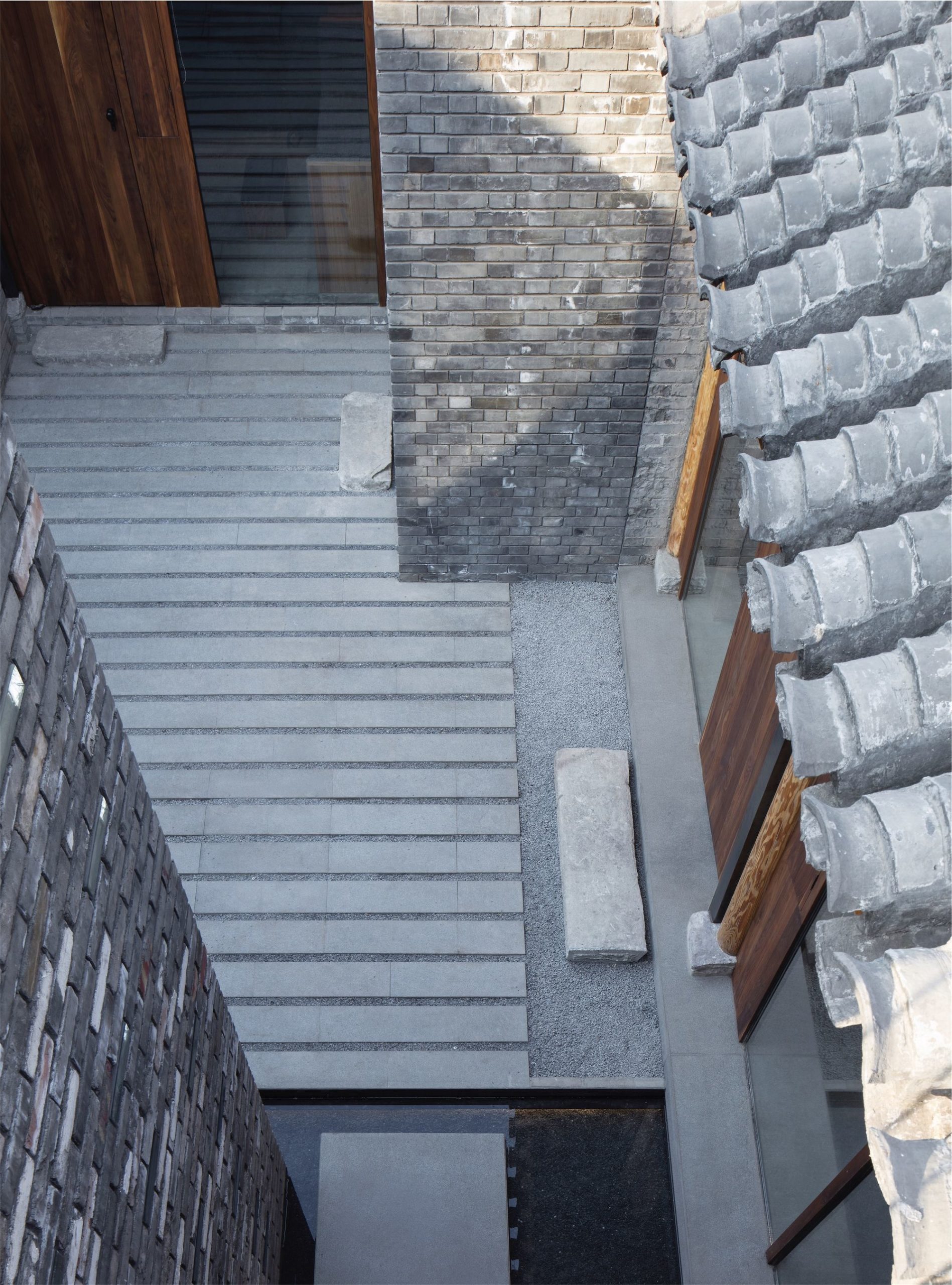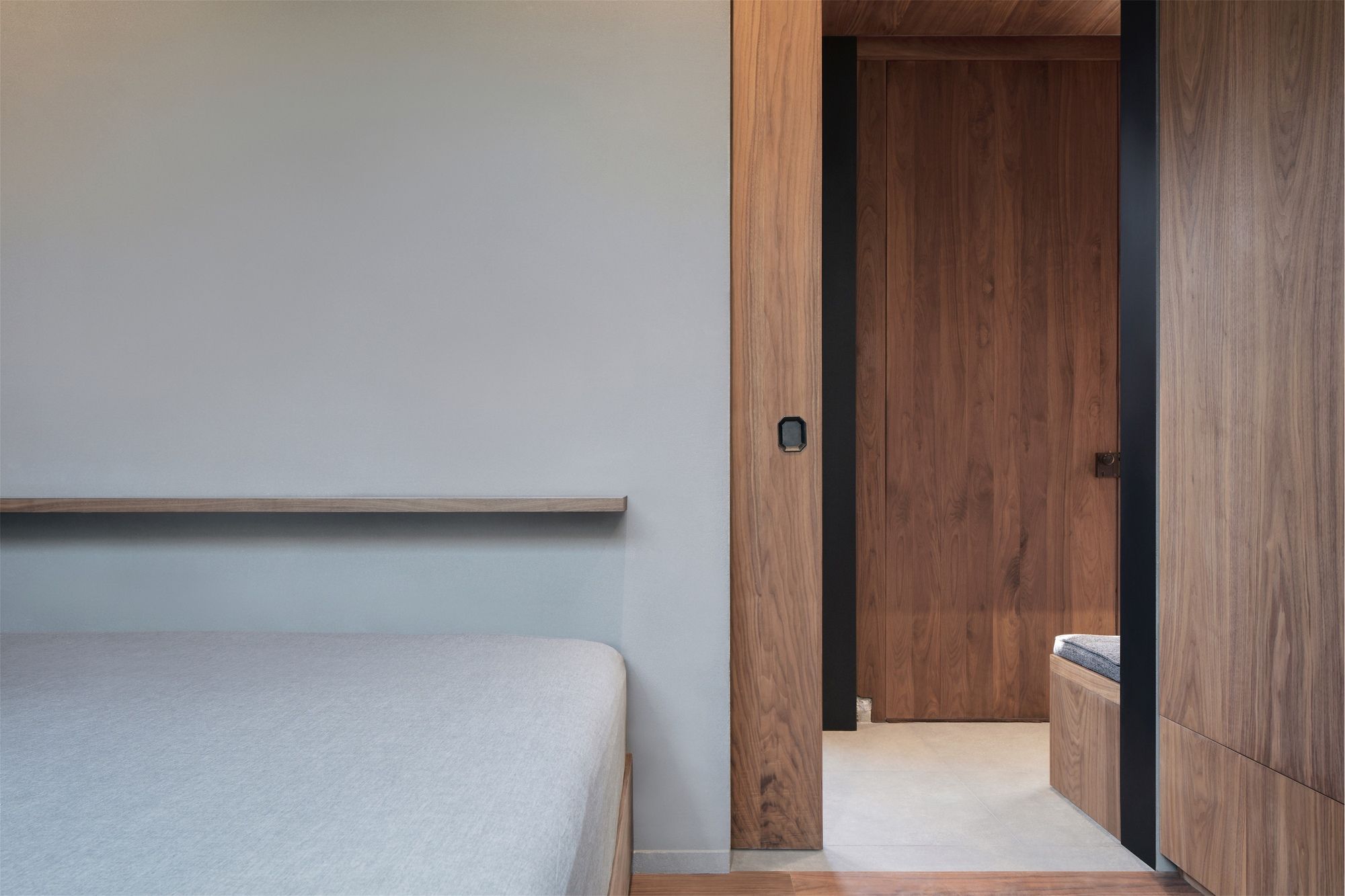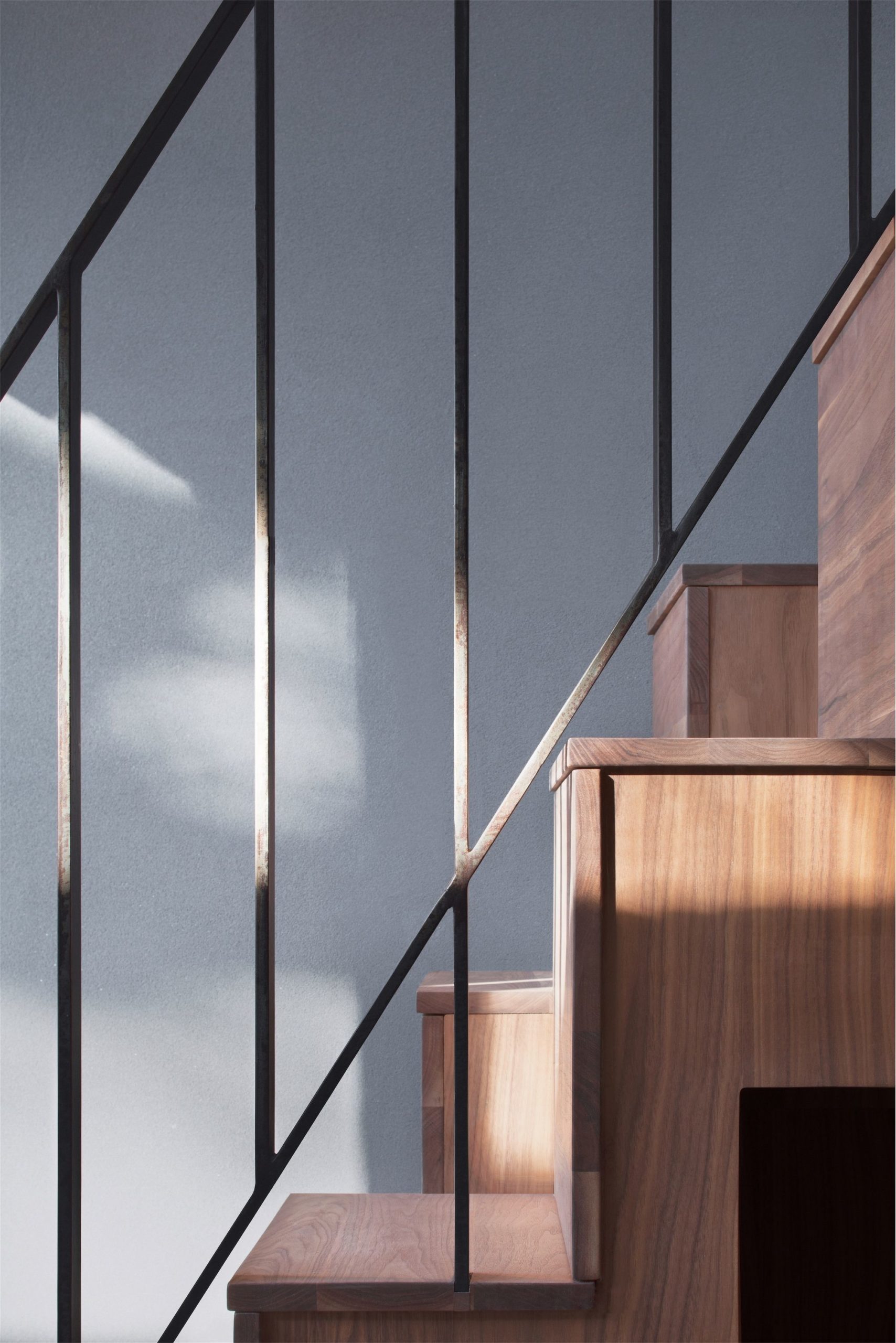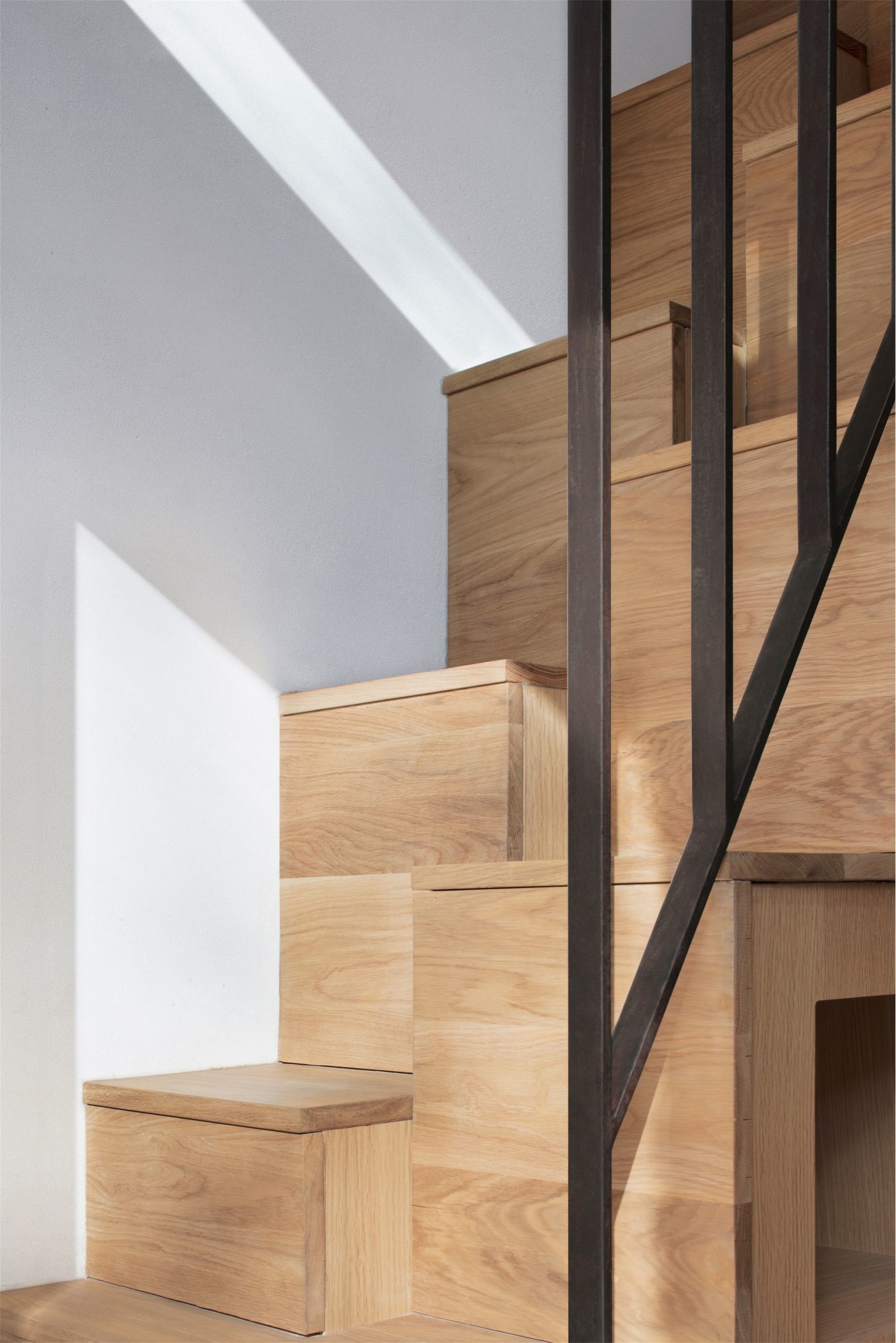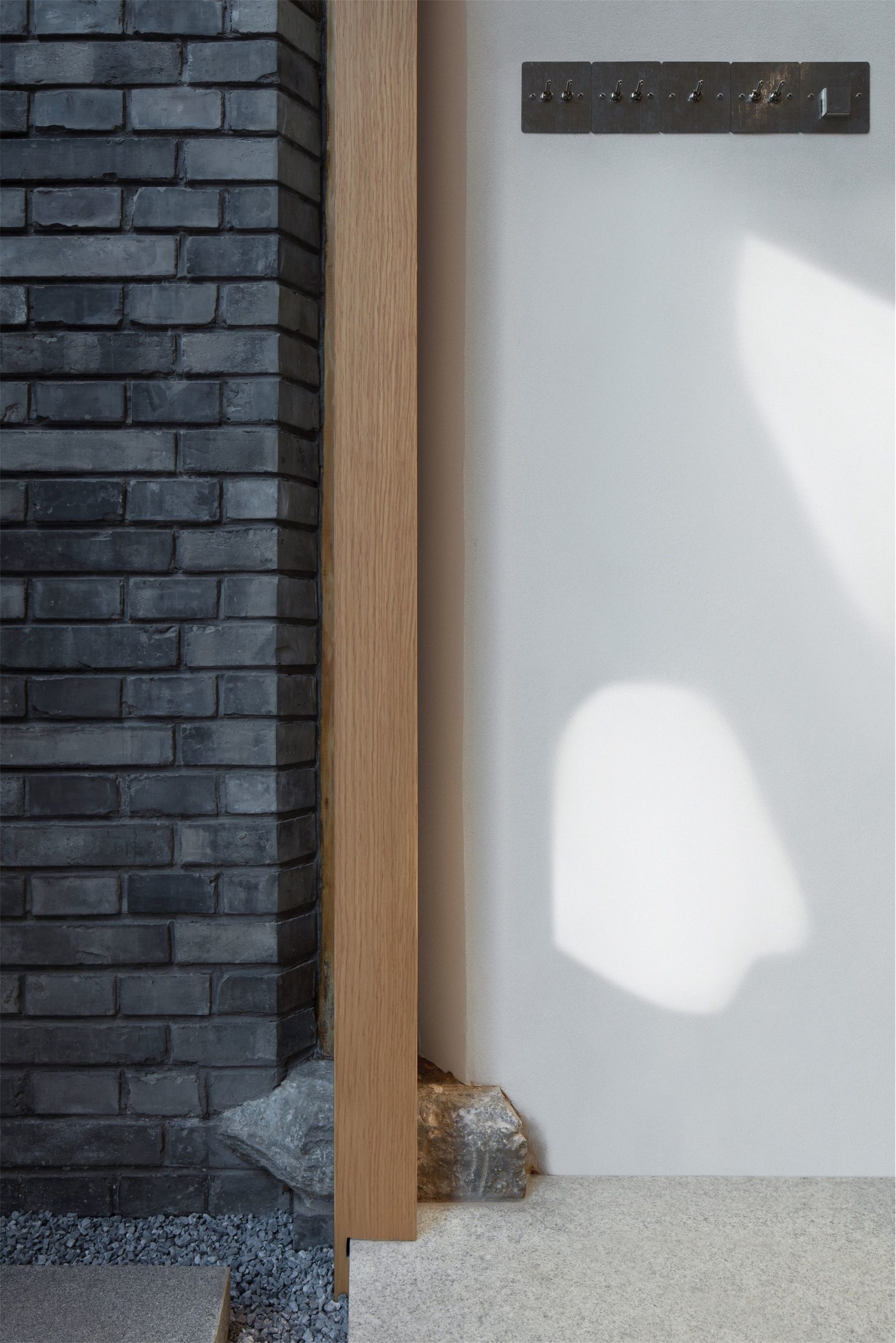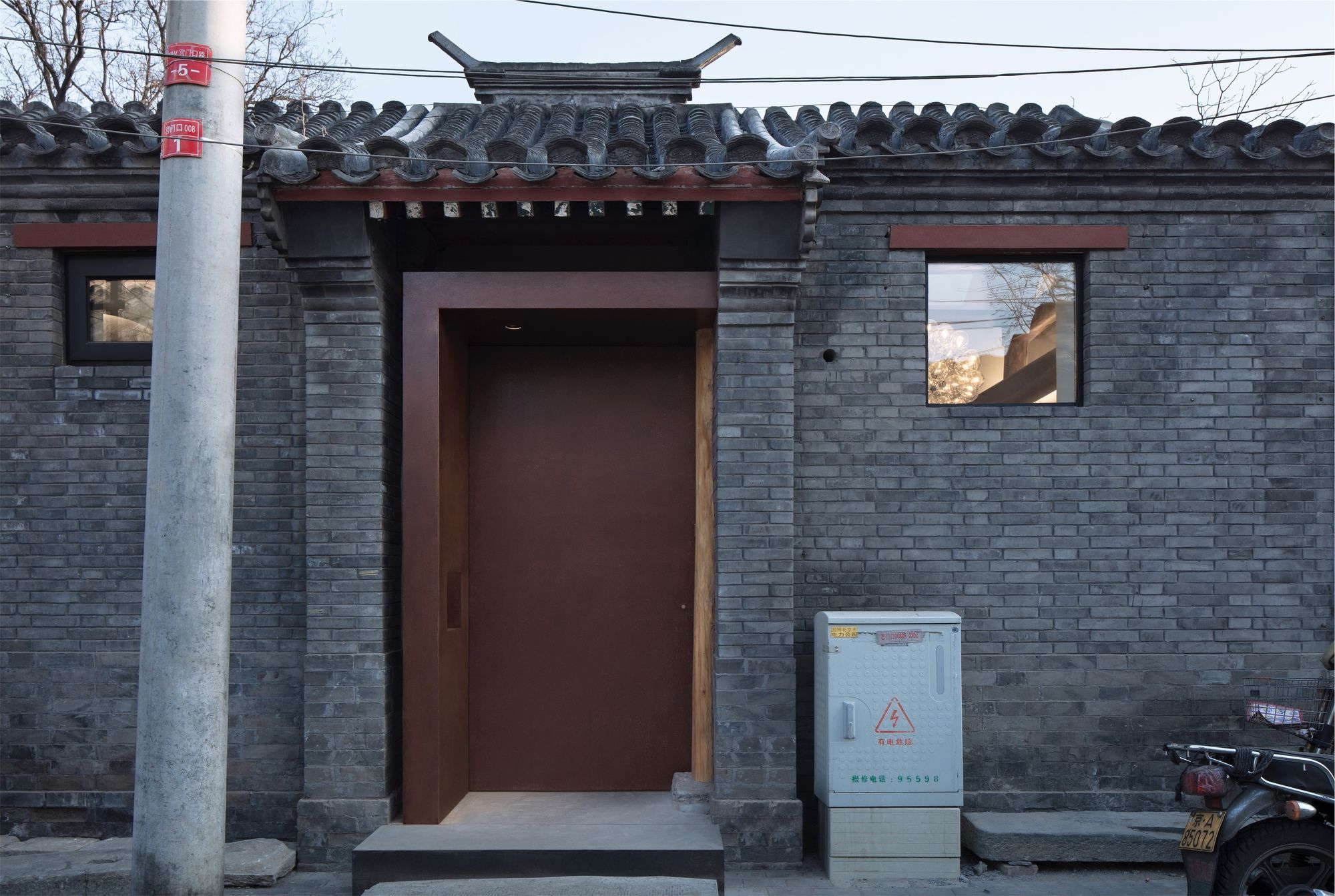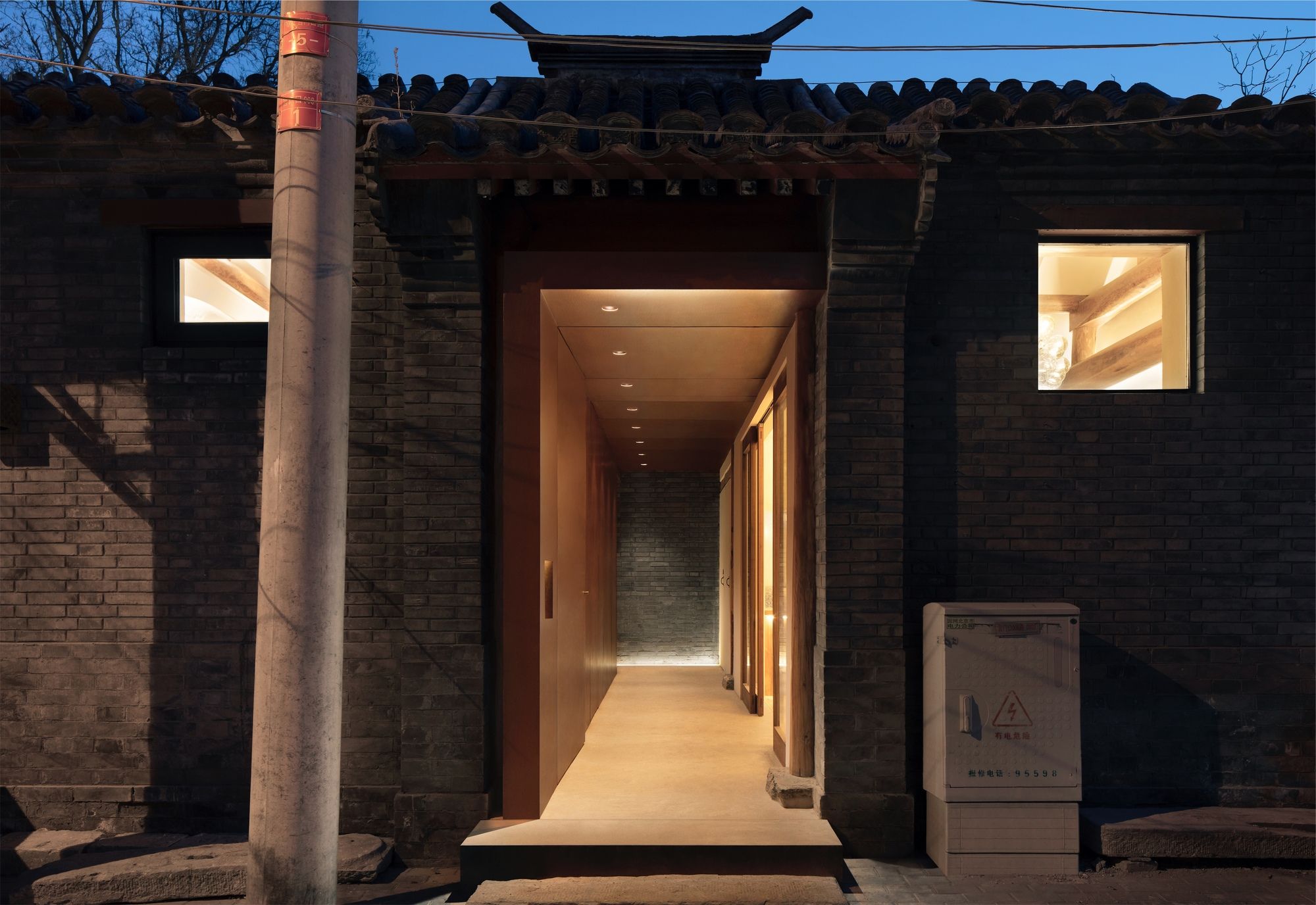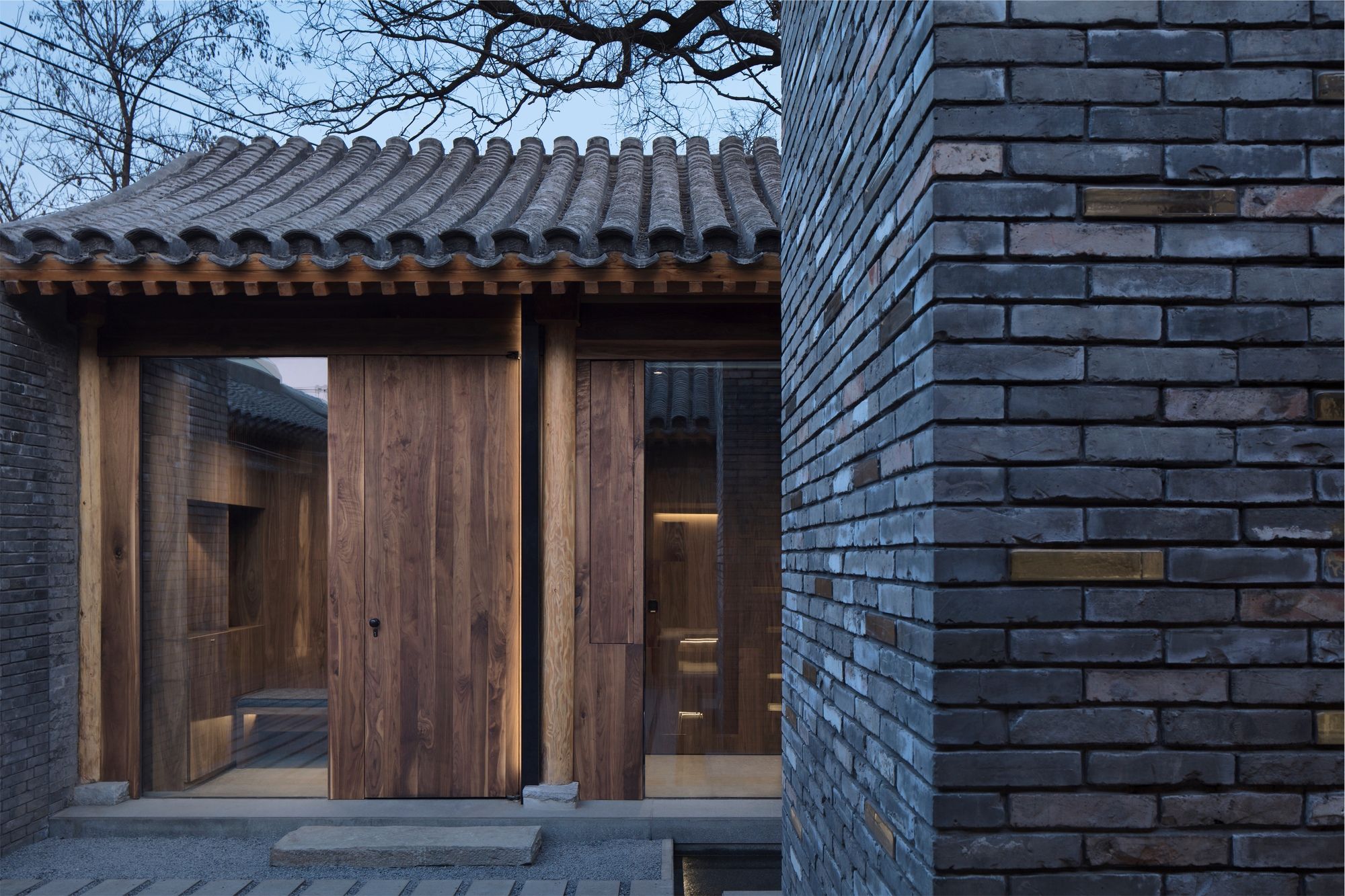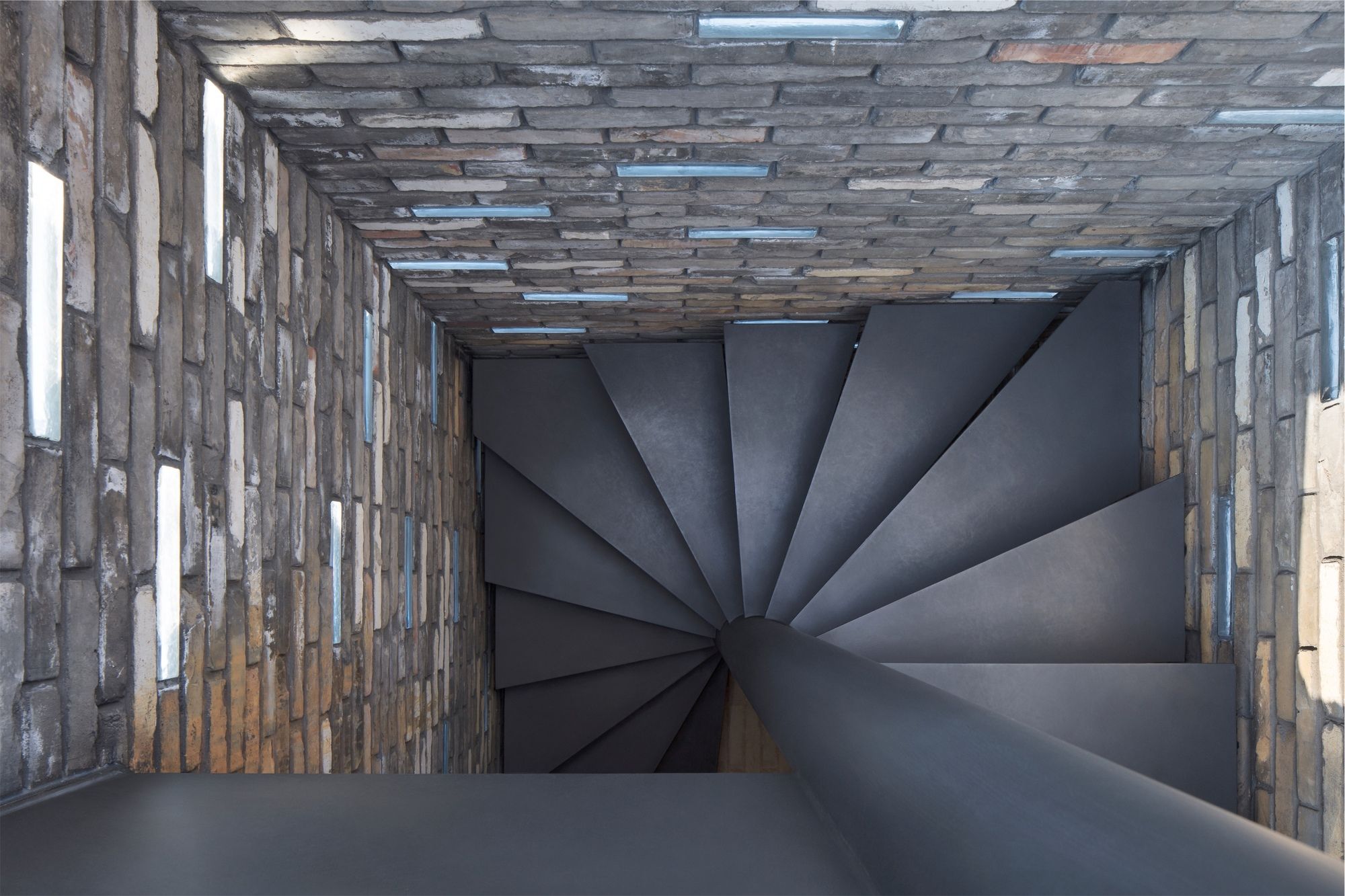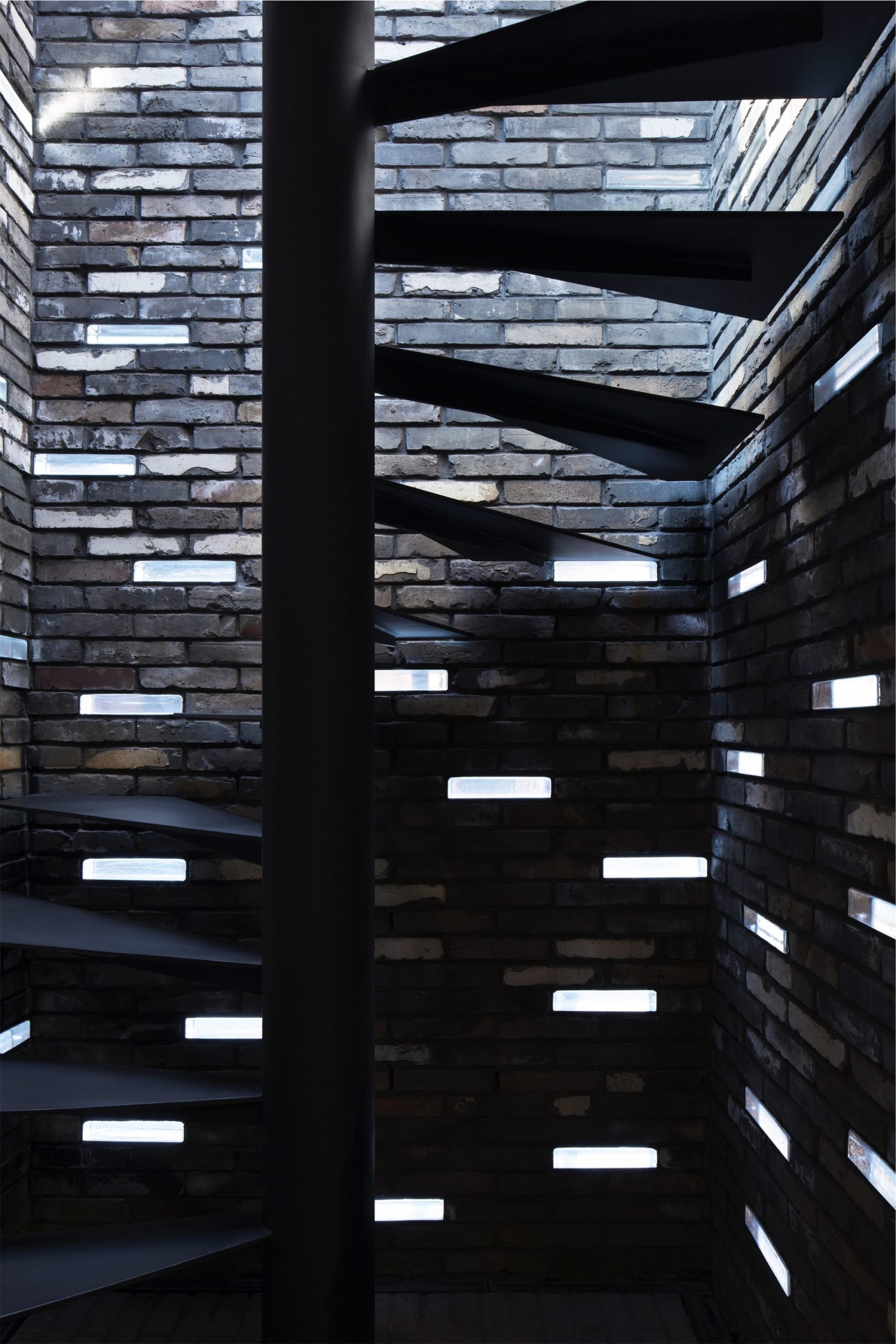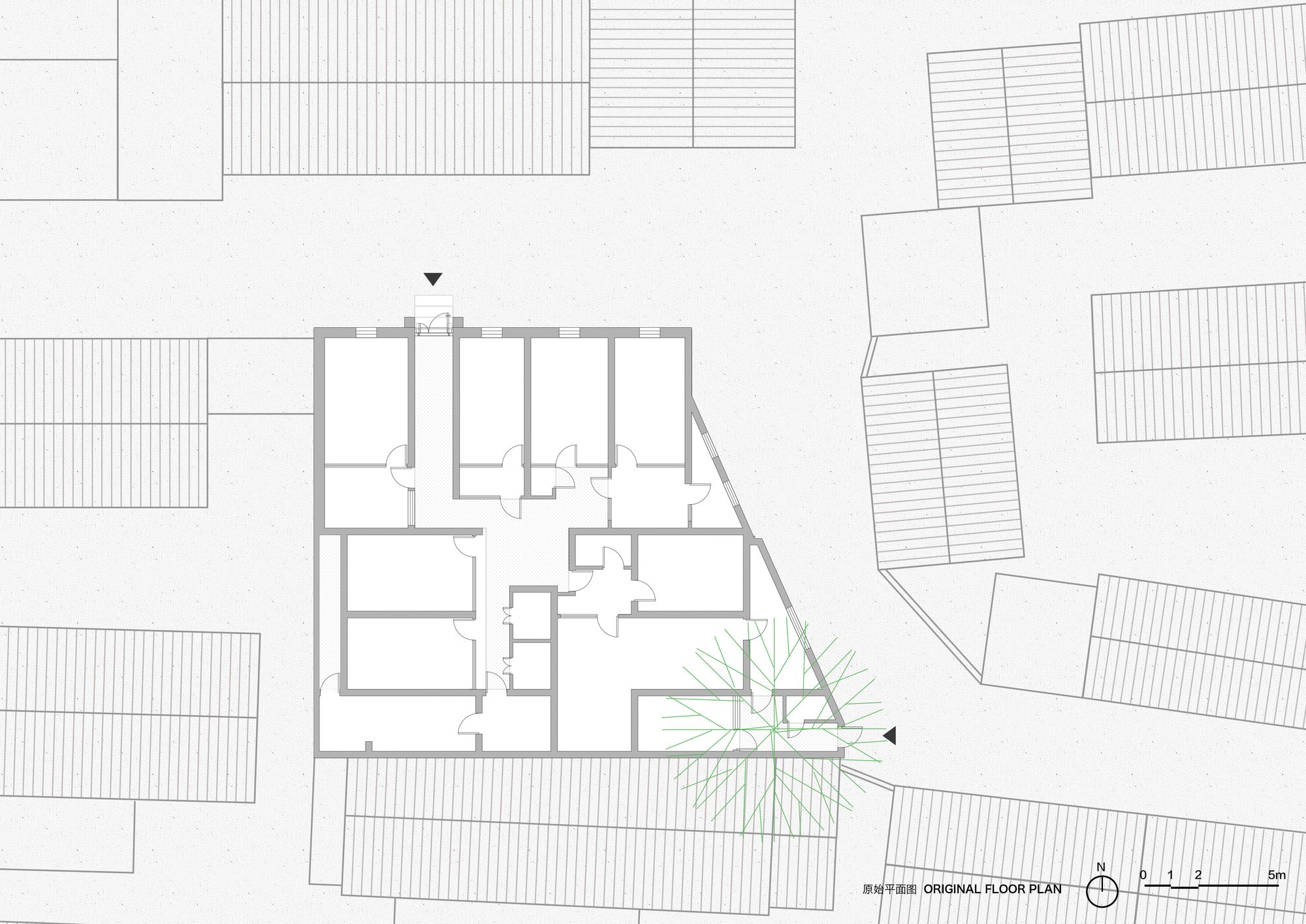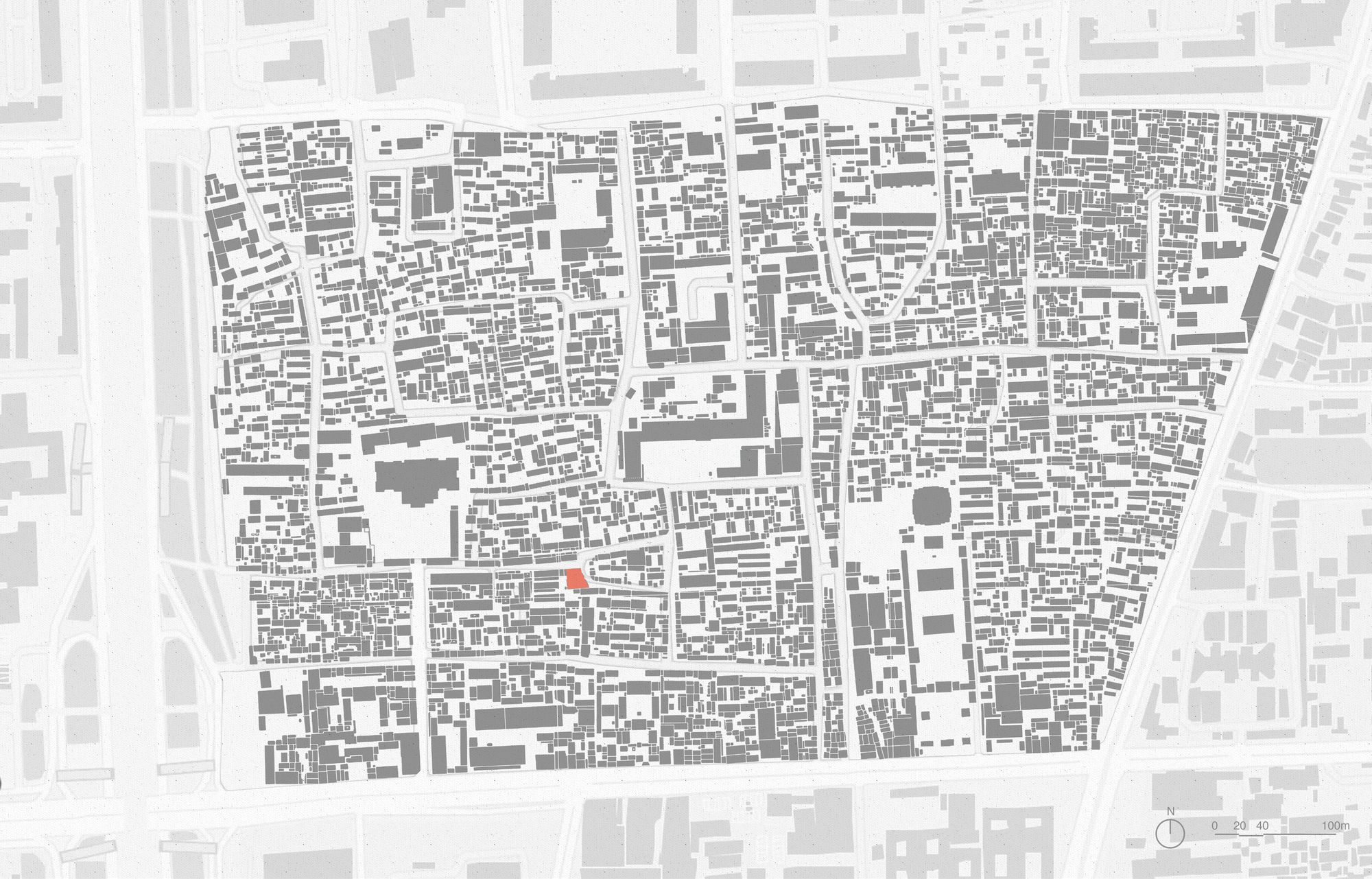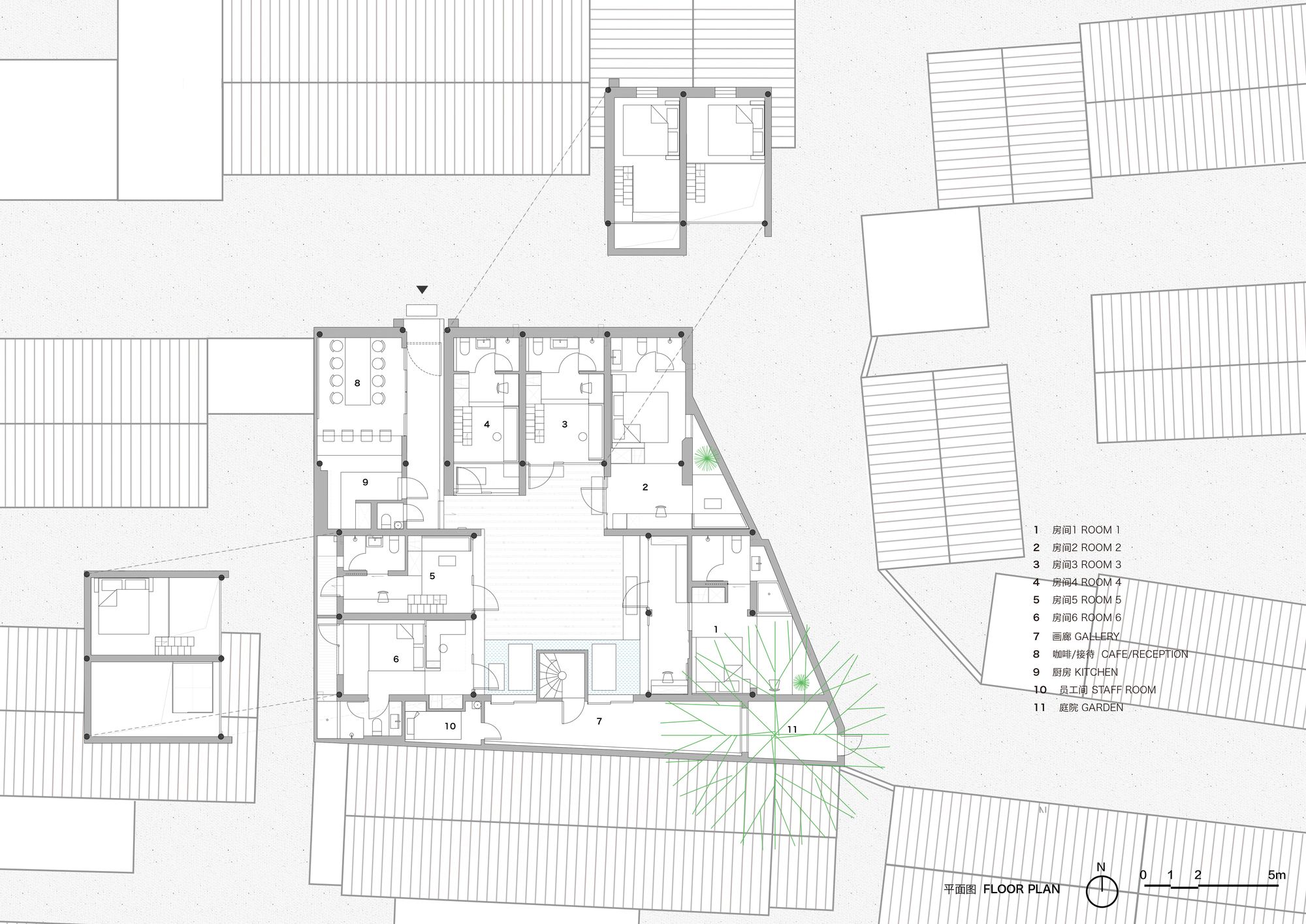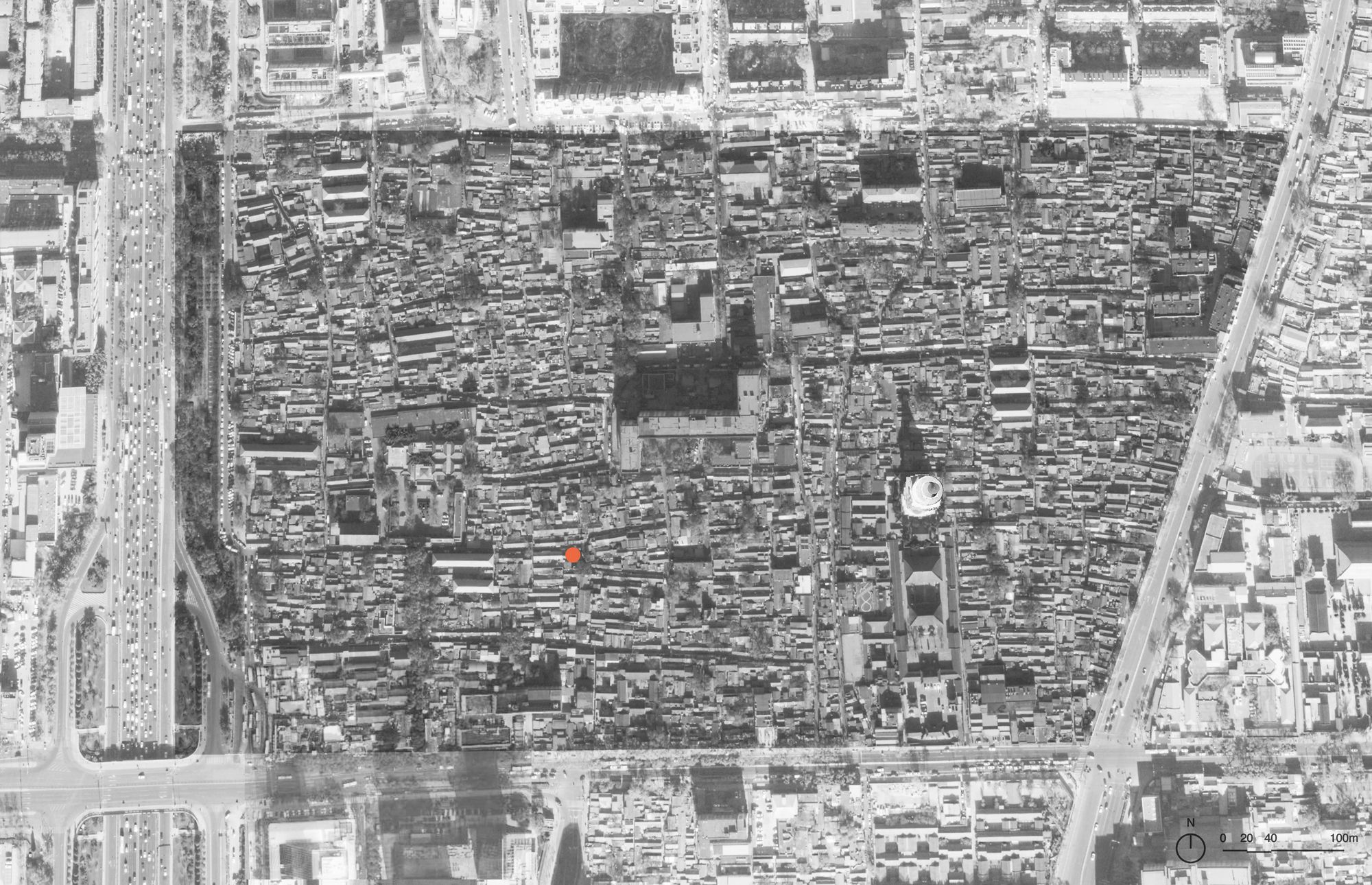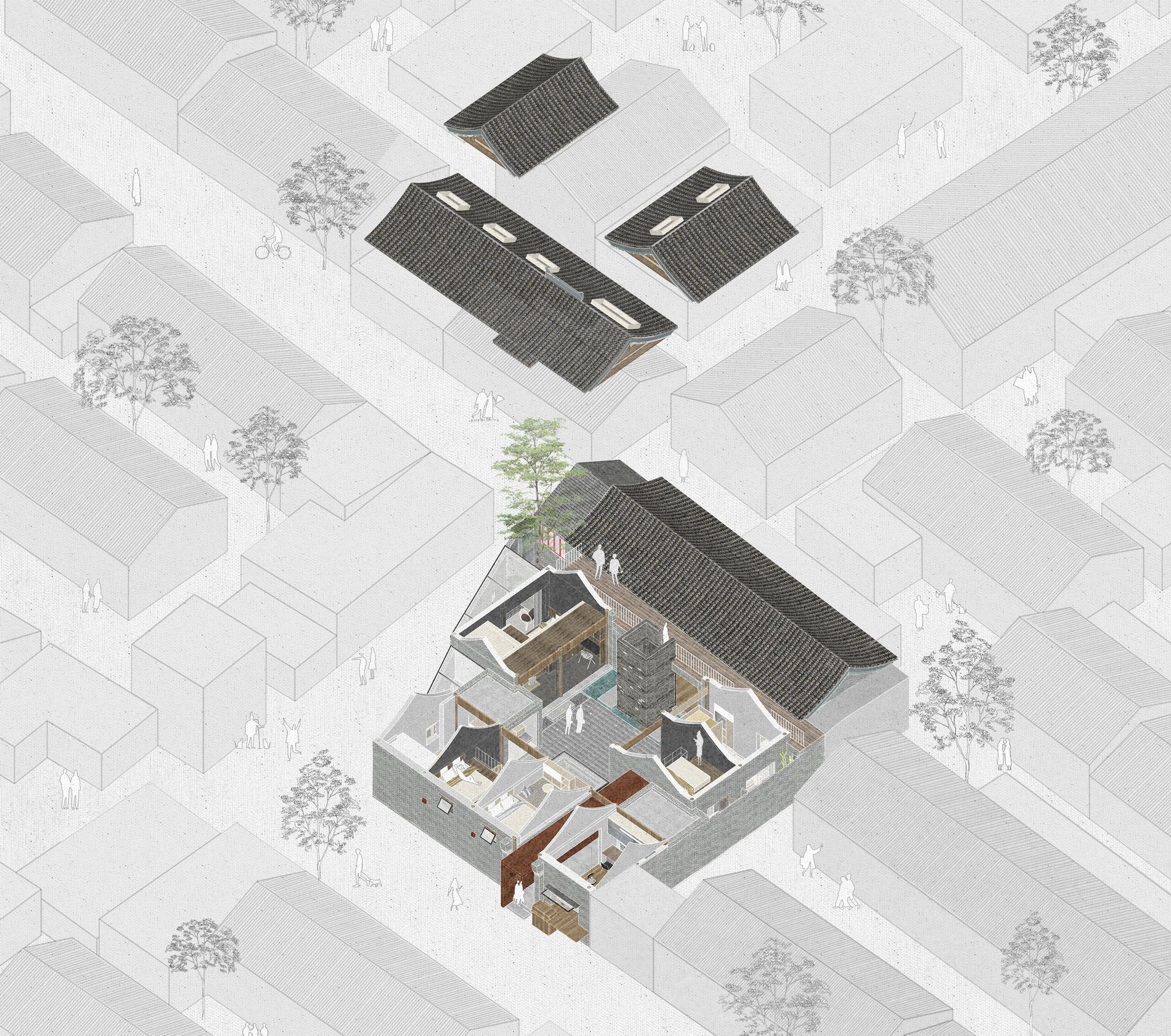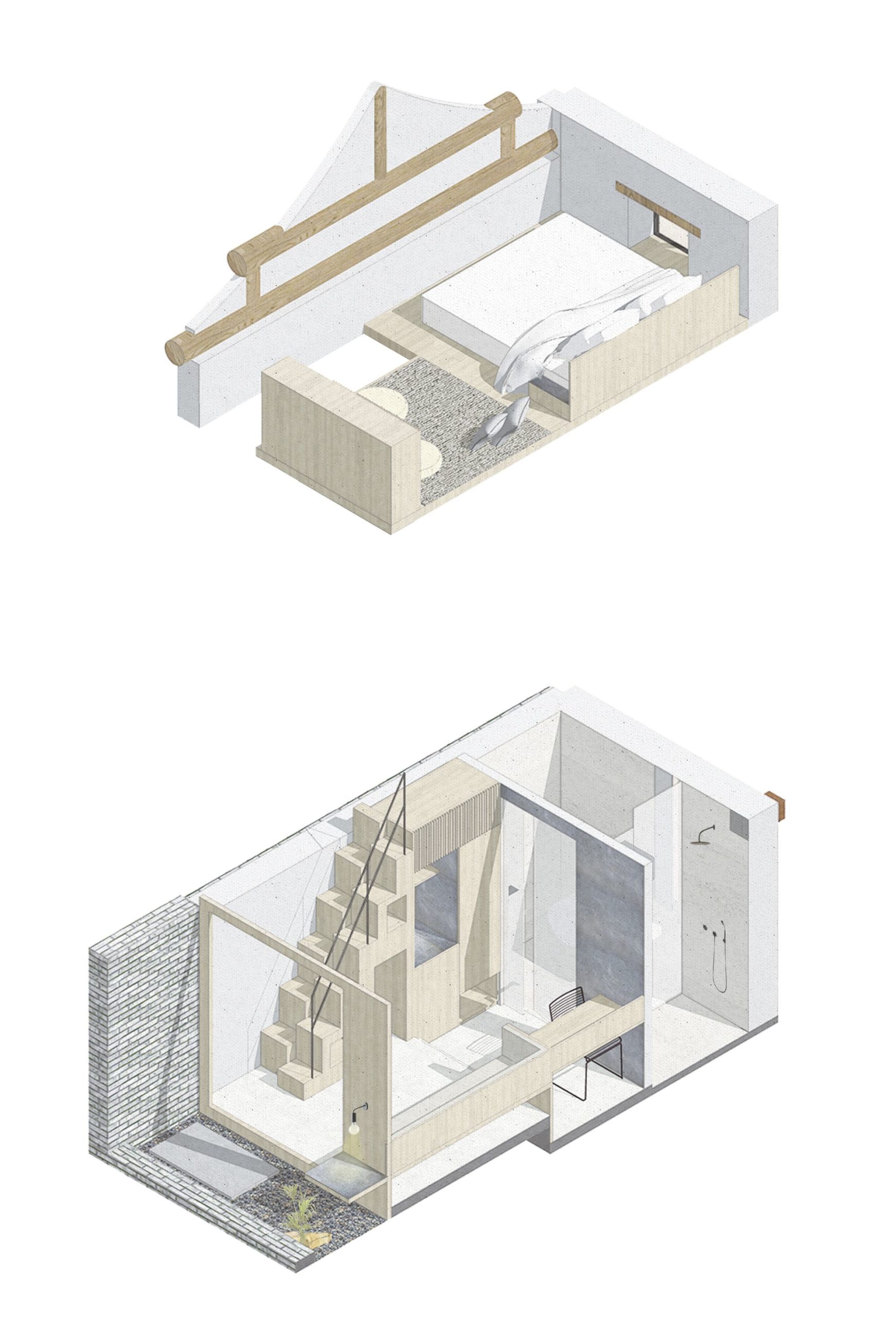White Pagoda Temple Hutong Courtyard Renovation designed by B.L.U.E. Architecture Studio, Nowadays, an increasing amount of young people choose to leave their old houses in Hutong and settle in the new areas of the city surrounded by concrete jungles. The old city has become a rundown area full of seniors. An essential objective of this urban renewal is to bring the young generation back to live in the old city.
Therefore, we expect that in this renovation project, on one hand, respect the existing spatial organization of the courtyard in order to preserve its original spatial quality. On another hand, transform it into a living space that is more suitable for the contemporary lifestyle of the young generation. These are the directions that block renewal and building renovation projects aim to follow.
The site of this project is located in a historical and cultural district in Fucheng Men in which the area contains 33 traditional blocks. The project area covers approximately 37 hectares, with a gross floor area of 242,000 and about 5600 households, including16,000 registered citizens, and 13,000 inhabitants. In this area, elderlies make up 19% of the residents and immigrants make up almost 50% of the population in the region respectively. The area contains 807 courtyards, remaining over 4000 houses while 70% of them are in poor conditions. Thus in this historical block, both the living quality and building quality need urgent improvements and its cultural values will, therefore, be reevaluated and upgraded.
Therefore, under the current context of Beijing’s promotion of the overall protection and revitalization of the old city, many architects are involved in renovation projects of single courtyard or buildings linking the real needs of the city’s citizens with new forms of media in order to promote new ways of thinking and exploring the city. In this way, the living qualities of the citizens are improved while preserving and continuing the historical chain of the city’s culture.
This project involves the renovation of a traditional courtyard house located in the Hutong within Beijing’s second ring road, covering a total area of around 250. The aim is to turn an old and shabby courtyard into a desirable courtyard house for homestay. Regarding the specifications, the aim is to find a new way of living within the traditional Beijing courtyard house with respect to the contemporary style of living.
The existing courtyard sits at a Y-shaped intersection in which two facades are fully exposed to the streets and can be viewed by pedestrians. While the boundaries of the courtyard are presented to people on the street, a strong visual impact is easily created. The courtyard originally ammonites 8 families. In order to maximize the usable space to satisfy the needs of a large number of residents, illegal renovations of adding additional building components are commonly built, creating a typical courtyard compound occupied by many households. Consequently, the additional building components in the center of the courtyard need to be removed in order to reveal the original spatial composition of the courtyard.
Firstly, the entry to the gate is a straight tunnel in which a cafe sits on its right-hand side and the gate is located at the end of the tunnel.
There are a total of 6 guest rooms located within the courtyard, they are each designed with different area, function, and spatial composition. The smallest guest room is 20 m2 and the largest guest room is 30 m2. 3 of the guest rooms are lofts and the another 3 are master rooms. Despite the difference in size, the rooms are also organized with different colors schemes. 3 of them have light color tone and the other 3 have a dark color tone. Apart from the guest rooms, all other spaces are public spaces, which are available for public exhibition and display during the day.
After removing the additional illegal building components, the 6 guestrooms form a new square shape courtyard. On the southern center of the courtyard, a new staircase tower has been built using the recycled old grey tiles from the demolished parts of the building. Following up the staircase, an exhibition space is formed on the rooftop after reinforcing the original structure of the building. Standing on the rooftop under the shadow of large trees, a panoramic view extends from the courtyard all the way to the Miaoying Temple. The magnificence and beauty of the continuous traditional buildings are fully expressed from the view of the rooftop.
1. Existing Flaws of the Building
Building renovations projects have to first solve the existing problems of the building. In this project the aim is to solve the following issues:
Problem A.Not enough interior space. Regarding the pacification, the need is to maximize living quality using limited resources. In order to maximize the usage of space, the building is organized vertically. A lowered ground level is established while the original ceiling boards are removed. Aloft effectively is formed under the traditional ceiling space.
Problem B. Lack of natural lighting and ventilation. Almost every guestroom is designed with a ceiling window in order to maximize natural sunlight inside the room. Regarding the need for thermal insulation in the winter period, all ceiling windows use double glazing glass (horizontal glass roof use 3-layered sealed insulating glass) in order to achieve the effective insulation and minimal heat conduction. In each guest room, new windows are designed near the door to further enhance effective ventilation within the rooms.
Problem C. Lack of effective insulation and heating system. Apart from the cautious choice of glass material for effective insulation, the house is also designed with floor heating covering the entire interior space, mainly used for heating in winter.
Problem D. Lack of soundproofing and noise control. According to the condition of each room, additional soundproofing materials are inserted within the walls between rooms in order to solve this issue.
Problem E. Lack of standardization in the building of bathroom. The existing courtyard contains a bathroom. Yet without any standardized treatment, domestic sewage is directly discharged into the municipal pipe network. The renovation improves this condition by replacing the old pipe with new technology that combines the discharge of rainwater and sewage, which effectively prevents the water system creating the bad smell in the summertime when temporary is high. A standardized septic tank is built within the courtyard, allowing all sanitary wastewater to be discharged in it. A portion of the domestic sewage that has been treated will still follow the existing municipal pipe network.
2. Inheriting the Spatial Memory
The design logic of this project is to use limited space and resources to maximize the reuse of material in ways of creating new space. During the renovation process, the continuous occurrence of accidental discoveries always brings new design ideas. As the construction process progresses, the design continuous changes and develops, which can be seen as “the logic without logic”.
For example, after removing the old paint on the wood structure, the natural beauty of the material is fully expressed in its color and texture. Thus, a decision is made to maintain the original color and texture of the wood structure. While building the floor foundation and water drainage system in the courtyard, 7 large rectangular stones from the Qing dynasty are discovered 1 meter underground. 4 of them are chosen as the material used for the staircase in between the guest rooms and entrance, hence giving the stones new life and function.
The old window frames are kept and reorganized and reused for different rooms, hence preserving the vintage spatial atmosphere within the courtyard.
Another vintage material that has been kept is a large number of old grey tiles, in which their age vary from a few hundred years old to the last century. These grey tiles are used for building the central staircase tower in the middle of the courtyard. Contemporary materials such as glass brick are embedded in it in order to create the “bridge” between the past and the present, achieving the continuation of spatial memory. Although the removed parts of the building are all structures built illegally, yet they also perform important parts in the history of the courtyard and is also a part of the city’s memory.
3. Privacy and Openness
The relationship between courtyard and city:
The courtyard-type living space is prone to be private. The living characteristics of the courtyard house are relatively open, which enhances the communication between people. We expect that in the project, a semi-private and semi-public space for communication can be established between urban public space and residential private space.
We design a café at the entrance, at the same time, it can be used as reception space for the homestays in the inner yard. The main entrance of the courtyard is designed to open to the Hutong, making the corridor and the café part of the urban space. There is only one big table in the café. When guests in the homestay are having breakfast, local residents can also come to have coffee, sitting at the same table and chitchat with each other.
The exhibition space is located in the inner courtyard, which can be opened to the public at different times, increasing exchanges between the courtyard and the city.
The relationship between rooms:
In traditional star hotels, guest-rooms are usually designed closed to each other. However, we expect to break the closed atmosphere down. As a result, a large area of floor-to-ceiling glass was designed on the facade of the room, and the relatively public space for reading and chatting in the guest-room was arranged in the window side. In addition to increasing lighting, guests in different rooms can see each other and communicate to some extent. In contrast, the bedroom space, toilet, and bathroom were hidden in the room or behind the wall to guarantee the privacy of life.
4. The symbiotic relationship with nature
The living environment of Hutong is an organic combination of living and natural environment. The whole courtyard is divided into 6 guest-rooms separately. We try to create a natural environment or the experience of a natural environment in each individual room. A corner of the roof was converted into a crystal-clear glass roof and covered by greenery in No.1 and No.2 room. Therefore, people in the room can feel the changes in natural light at any time and the atmosphere of outdoor courtyard can be created. As for No.5 and No.6 room, each of them has a real outdoor courtyard, which is the exclusive outdoor space for guest-rooms.
In Hutong, there is a close interaction between trees and people. During hot summer days, the sunshine was shaded by the luxuriant branches and leaves of the tree, leaving a shady corner. While, in winter, the leaves withered and the sunshine shimmers in the courtyard through the branches, leaving warmness and brightness in the bleak and windswept beauty. The relationship between people and trees is organic. Therefore, an old locust tree of several decades has been preserved in the courtyard, which not only continues the organic relationship between man and nature but also maintains the subtle interaction between man and nature.
In the past, too much attention was paid to the renewal of architectural appearance and the improvement of architectural quality in courtyard houses. However. in the old streets where Hutong sits, the renovation of courtyard houses should not be limited to the static aesthetics. Instead, preserving the living experience is more important. The experience of living in a courtyard surrounded by trees and the experience of living in an open and connected community within the city… Including every piece of memories within the city. These qualities are not visible, yet they form the unique cultural experience of living in courtyard houses.
Project Info:
Architects: Shuhei Aoyama, Yoko Fujii, Yang Yujia,Wang Danli
Project Location: No. 14, Gongmenkou 2, Xicheng District, Beijing, China
Client: sth.here
Site Area: 246.0 m2
Project Year: 2018
Photographs: Zhi Xia
Project Name: White Pagoda Temple Hutong Courtyard Renovation
photography by © Zhi Xia
photography by © Zhi Xia
photography by © Zhi Xia
photography by © Zhi Xia
photography by © Zhi Xia
photography by © Zhi Xia
photography by © Zhi Xia
photography by © Zhi Xia
photography by © Zhi Xia
photography by © Zhi Xia
photography by © Zhi Xia
photography by © Zhi Xia
photography by © Zhi Xia
photography by © Zhi Xia
photography by © Zhi Xia
photography by © Zhi Xia
photography by © Zhi Xia
photography by © Zhi Xia
photography by © Zhi Xia
photography by © Zhi Xia
photography by © Zhi Xia
photography by © Zhi Xia
photography by © Zhi Xia
photography by © Zhi Xia
photography by © Zhi Xia
photography by © Zhi Xia
photography by © Zhi Xia
photography by © Zhi Xia
photography by © Zhi Xia
photography by © Zhi Xia
photography by © Zhi Xia
photography by © Zhi Xia
photography by © Zhi Xia
photography by © Zhi Xia
photography by © Zhi Xia
photography by © Zhi Xia
photography by © Zhi Xia
photography by © Zhi Xia
photography by © Zhi Xia
photography by © Zhi Xia
photography by © Zhi Xia
photography by © Zhi Xia
photography by © Zhi Xia
photography by © Zhi Xia
photography by © Zhi Xia
photography by © Zhi Xia
photography by © Zhi Xia
photography by © Zhi Xia
photography by © Zhi Xia
photography by © Zhi Xia
photography by © Zhi Xia
photography by © Zhi Xia
photography by © Zhi Xia
photography by © Zhi Xia
photography by © Zhi Xia
photography by © Zhi Xia
photography by © Zhi Xia
photography by © Zhi Xia
photography by © Zhi Xia
photography by © Zhi Xia
photography by © Zhi Xia
Original plan
Site plan
Floor plan
Satellite image
Exploded Axonometric
Room type


